This article aims to summarize the background of well-known and not so well-known Soviet rocket engines, the history of their development, their main characteristics, and the rockets they flew on.
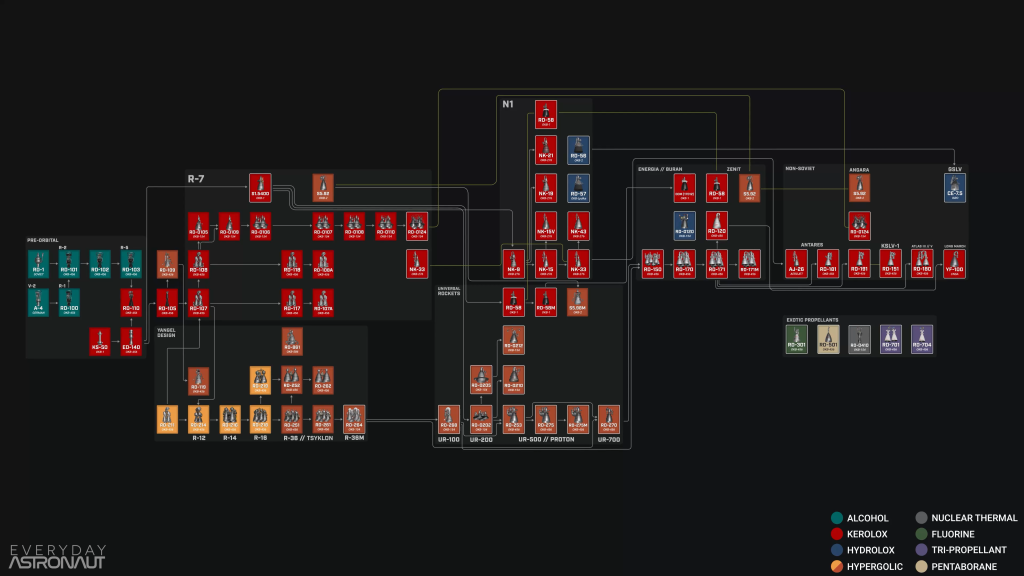
Important Tips and Vocabulary
There are a few notes and terms that might be helpful for better understanding this article.
Open Cycle Engines
In open cycle engines, the exhaust gas that is used to spin the turbine is simply discarded overboard from the gas generator. This is a simpler engine design than its counterpart, the closed cycle engine. However, it is less efficient, as a portion of propellant never reaches the main combustion chamber and, thus, is wasted.
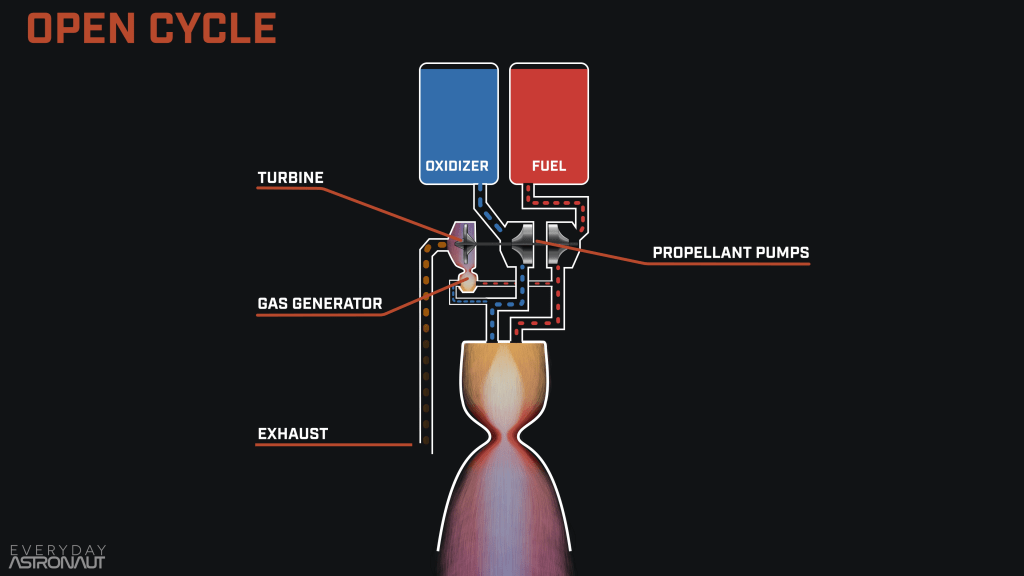
Closed Cycle Engines
Closed cycle engines (or staged combustion cycle) have a pre-burner instead of a gas generator. It runs either all the fuel or all the oxidizer through the turbine, and then routes this now-hot gas into the main combustion chamber. This way no propellant is wasted. You can find more information on this topic in our video and/or article about SpaceX’s Raptor engine.
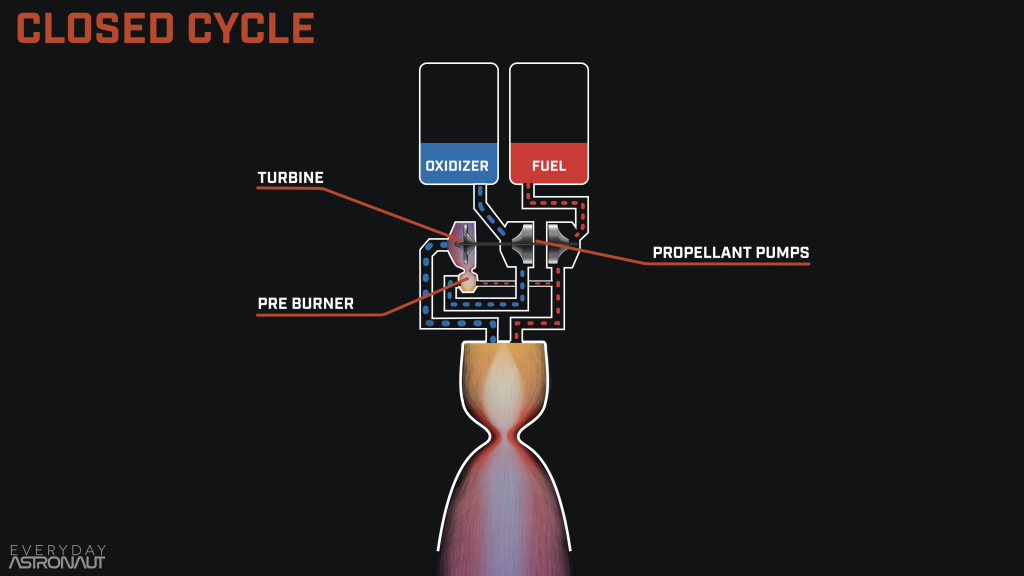
Hypergolic Propellants
Hypergolic propellants are those that spontaneously combust upon contact with each other. This yields a very simple and reliable ignition sequence. Hypergolic propellants can be stored at room temperature and for long periods of time, however, this type of fuel is extremely toxic and corrosive.
LOx-based Propellants
LOx-based propellants are those that use liquid oxygen (LOx) as an oxidizer. Depending on the fuel component, there can be keralox (kerosene-based fuel), hydrolox (hydrogen-based fuel), and methalox (methane-based fuel). Keralox fuel used by Soviet rocket engines is called T-1 or RG-1 (not RP-1) and was comparable to regular kerosene. The hardest part about a LOx-based propellant is to keep it at working temperatures without it warming up and boiling off before the launch.

Specific Impulse (ISP)
ISP indicates how efficient the rocket engine is. It is measured in seconds, and the higher it is, the better. The best way to think about specific impulse is to imagine an engine with 1 kg of propellant. The amount of time (in seconds) that the engine can produce 9.81 N of force is its ISP. Thus, the higher the ISP, the less fuel it takes to perform the same amount of work.
Combustion Chamber
The combustion chamber of a rocket engine is where the fuel and oxidizer get pumped in and meet at high pressure so they can combust and produce thrust. The larger the combustion chamber, the higher the thrust output. However, the larger it is, the harder it is to maintain stable combustion and homogeneous pressure within it, which can lead to massive failures in which the engine can blow up.
OKB
Experimental Design Bureaus (OKB, Opytnoye Konstruktorskoye Buro) were state-owned bureaus that mostly designed and produced weapons and military technology. They were very competitive with each other for different projects. One of these OKBs, formerly known as OKB-456, home of legendary propulsion engineer Valentin Glushko, is today known as NPO Energomash and is still producing engines and rockets.
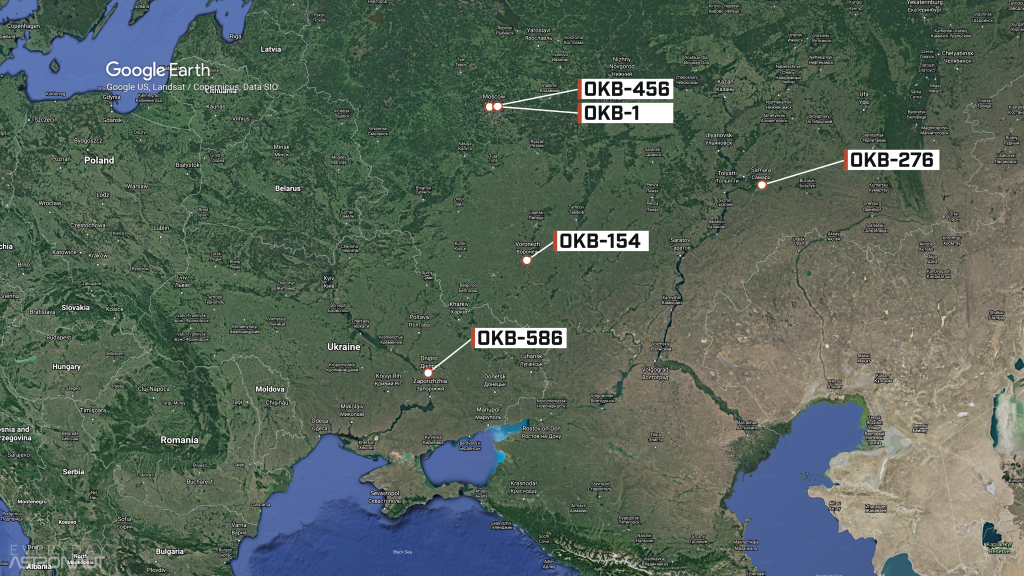
RD = Rocket Engine
RD literally translates to Rocket Engine. There is an RD-0XXX series that came from OKB-154 led by Semyon Kosberg and tends to be used on upper stages or at least operates in a vacuum (with few exceptions). RD-1XX and RD-2XX engines were designed by OKB-456. The former tends to be LOx-based engines, while the latter ran on hypergolic propellants. Furthermore there was the RD-XX series mostly developed at OKB-1, the headquarters of the Soviet space program led by Sergei Korolev. Some RD-XX engines were developed by OKB-165, led by Arkhip Lyulka, despite OKB-165 primarily being an aircraft engine manufacturer. RD-8XX engines came from OKB-586, led by Mikhail Yangel.
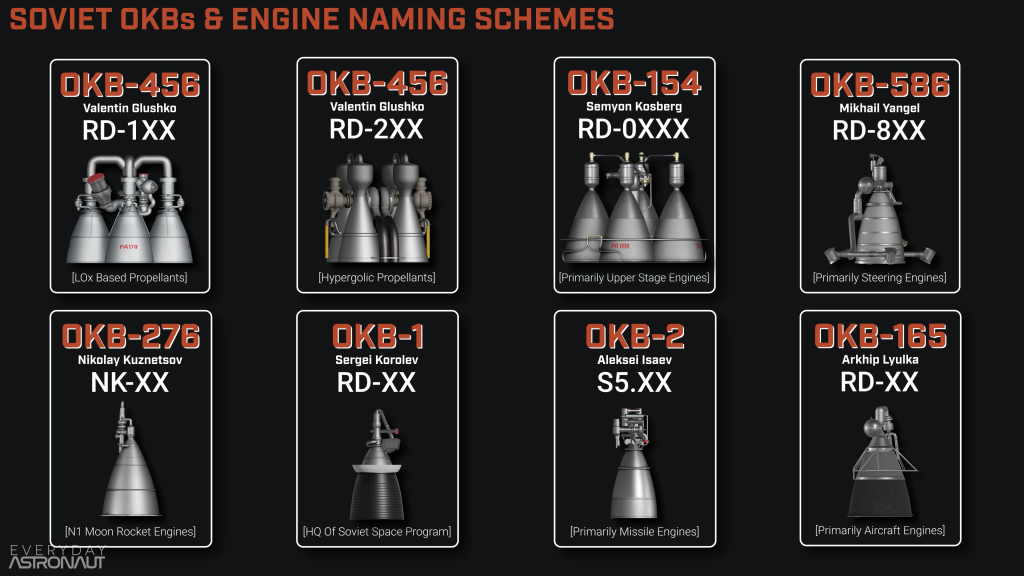
NK = Nikolay Kuznetsov
NK engines came from OKB-276, Kuznetsov’s design bureau. Nikolay Kuznetsov (NK is simply his initials) was an aircraft engine manufacturer who designed some of the most advanced engines. For instance, his NK-32 was a jet engine on the TU-160 strategic bomber, while the NK-33 is a rocket engine meant for a variant of the N-1 rocket.
S5.XX
Next to RD and NK engines, there were also some S5.XX engines. These engines were developed and built by OKB-2 led by Aleksei Isaev. OKB-2 primarily produced smaller rocket engines for missiles with the exception of S5.XX engines.
In addition, all Soviet engines are assigned with GRAU indices by the Main Missile and Artillery Directorate of the Ministry of Defense of the Russian Federation. For example, the RD-107 engine’s index is 8D74. However, this system will not be used in this article.
The Origins of Soviet Rocket Engines
A4 Engine
The origins of the first Soviet rocket engines stem from World War II when rockets were not used for noble goals, but rather as a terrifying weapon. It all started with the Nazi designed V-2 rocket. Although the A4 engine at the heart of the V-2 was not the first liquid-fueled rocket engine developed, it was certainly the first reliable one to reach space by crossing the Kármán line (an international definition that marks the edge of space and is defined as 100 km above sea level).

The V-2 rocket brought a huge breakthrough in rocketry. The Germans solved one of the biggest problems of liquid-fueled engines – combustion instability. Their solution was to take smaller injectors and put them into a single main combustion chamber. The A4 wound up with eighteen injector cups and had a basket-like head configuration.

Characteristics
The V-2 rocket produced 265 kN of thrust at sea level and 294 kN in a vacuum, with an ISP of just over 200 s at sea level and 239 s in a vacuum. Although these numbers are not impressive by today’s standards, this was only the beginning. The A4 engine ran at only 15 bar of pressure, on a 75% ethanol / 25% water mixture fuel, and used LOx as an oxidizer. The pumps of these engines were steam-powered by a separate system that ran hydrogen peroxide (H2O2) over a potassium permanganate (KMnO4) catalyst to create high-pressure steam, which would then spin the turbine that powered the pumps.

Leading Rocket Scientists
During the Cold War, both the United States and the Soviet Union tried to outdo each other with more powerful and longer-range missiles carrying nuclear warheads. They each gathered thousands of former German rocket scientists who could help them to develop their own rockets. In the US, Wernher von Braun put a lot of effort into this. In the Soviet Union, it was Sergei Korolev (born in Ukraine) who was tasked with leading the former German scientists.
RD-100
Korolev and his team of Soviet and former German engineers began reverse-engineering the V-2 rocket and the A4 engine, and rebuilding them. This way they built the RD-100 engine which was almost a clone of the A4, at least externally. In fact, there were some parts still machined in Germany in the old factories.

RD-101
At the same time, Korolev and Glushko (OKB-456) wanted to make a modified version of the RD-100 which would not have any direct involvement from Germans and would only use Soviet fabricated parts. This was the RD-101 engine. It had only minor tweaks and took inspiration from some of Glushko’s former works, such as his RD-1, when it came to materials.

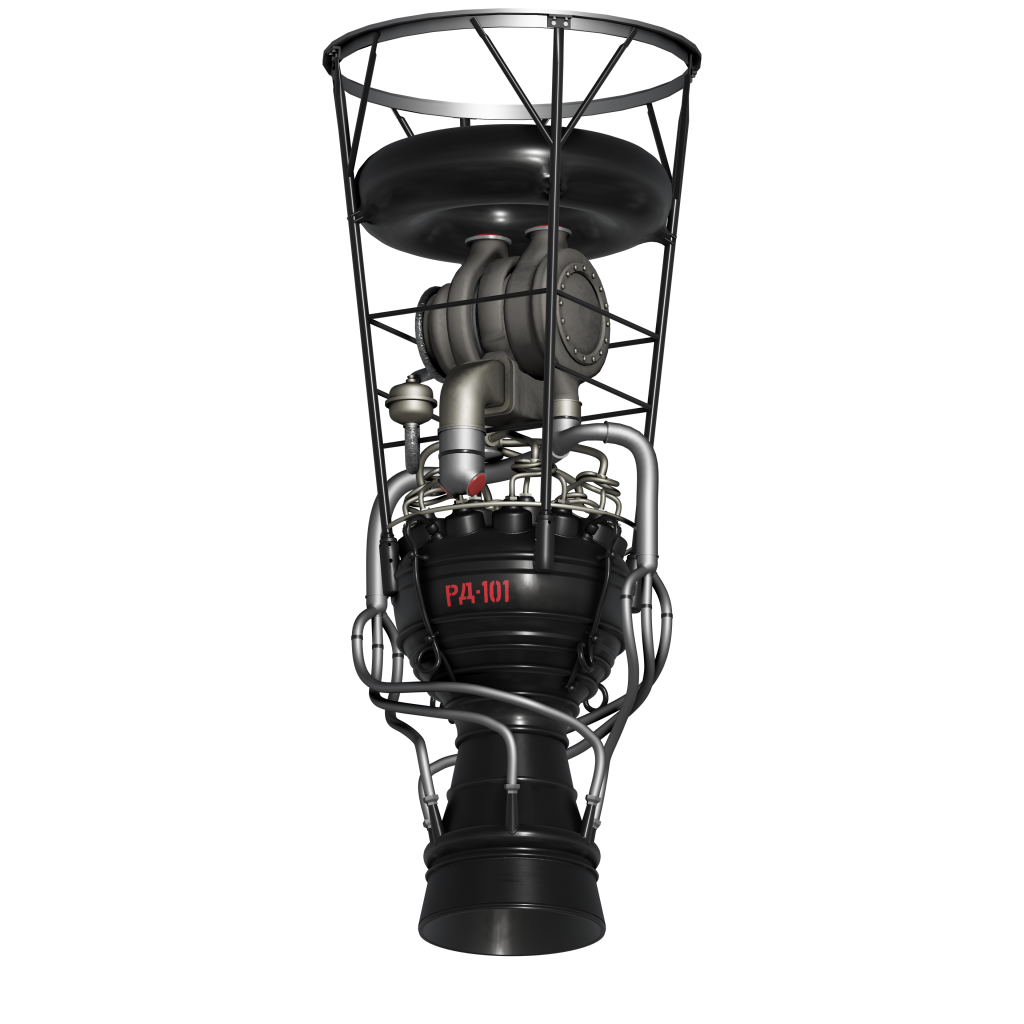
RD-102 and RD-103
By the end of 1949, there would be the RD-102 and RD-103 upgrades, which were the last engines based on the A4. These engines had substantially shortened engine thrust frames and were regeneratively cooled, in which some of the propellant or water was passed through tubes around the combustion chamber to cool the engine. Moreover, the RD-103 used a new oxygen mixing nozzle which used a more concentrated 92% ethyl alcohol fuel. This aided in performance and yielded a thrust of 500 kN in a vacuum, which almost doubled the thrust output of the A4’s 294 kN. The RD-103 could achieve an ISP of 244 s at sea level and 251 s in a vacuum.
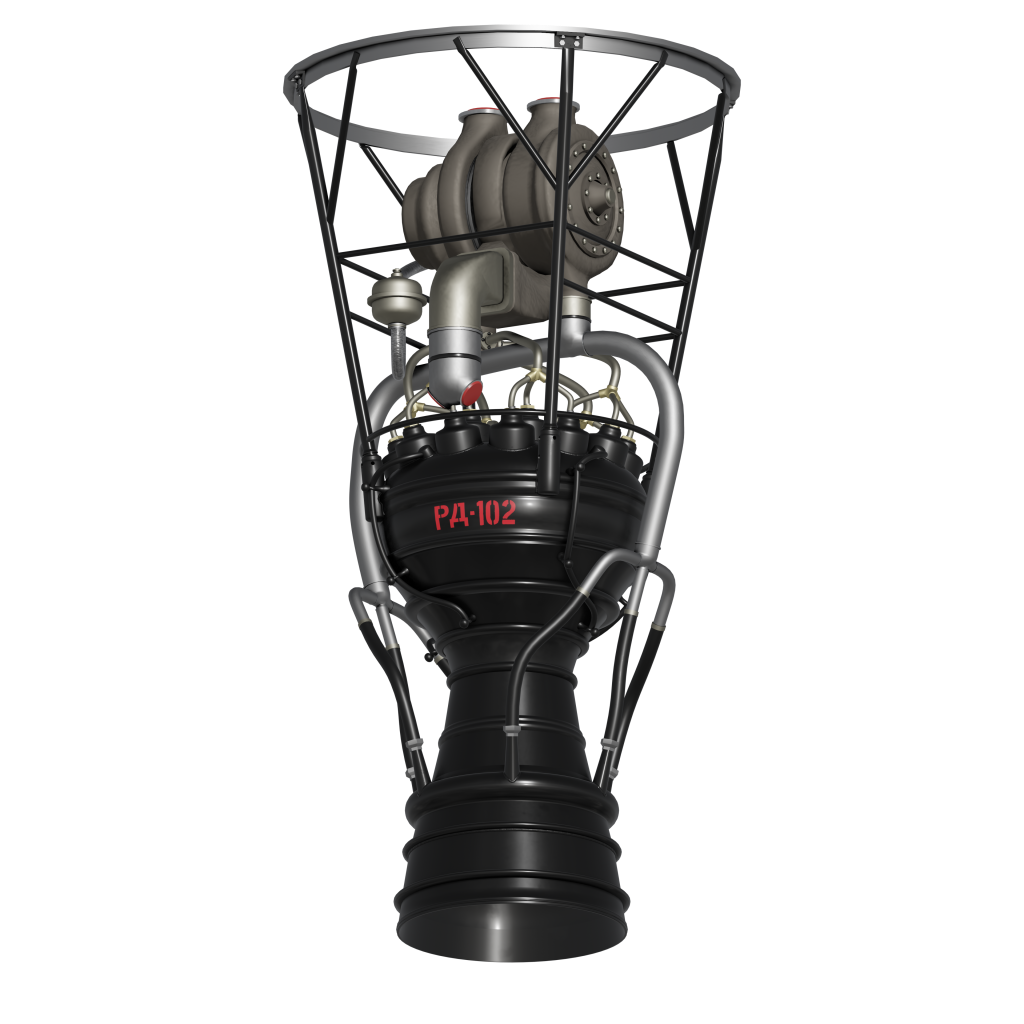

KS-50 (Liliput)
In 1950, Sergei Korolev got his own experimental bureau, OKB-1 (known today as RSC Energia), where the future of the Soviet space program would be developed.
Around that time, German scientists tried to simplify the design for chambers and injectors. Up until that point, all of the engines had a basket-like head with eighteen separate injector cups. However, there was a design for the injectors patented in Germany that was more of a showerhead shape. The engineers built a test chamber for these injectors and made a new style of engine called Liliput or KS-50. This chamber was a very simple cylindrical shape. Its walls had a 1-mm thick copper coating, which had greater thermal conductivity and could handle higher temperatures.
The KS-50 was the first engine capable of running on kerosene, which potentially provided much greater performance with the negative side effect of much higher temperatures. It was also the last engine developed with the direct involvement of German engineers.
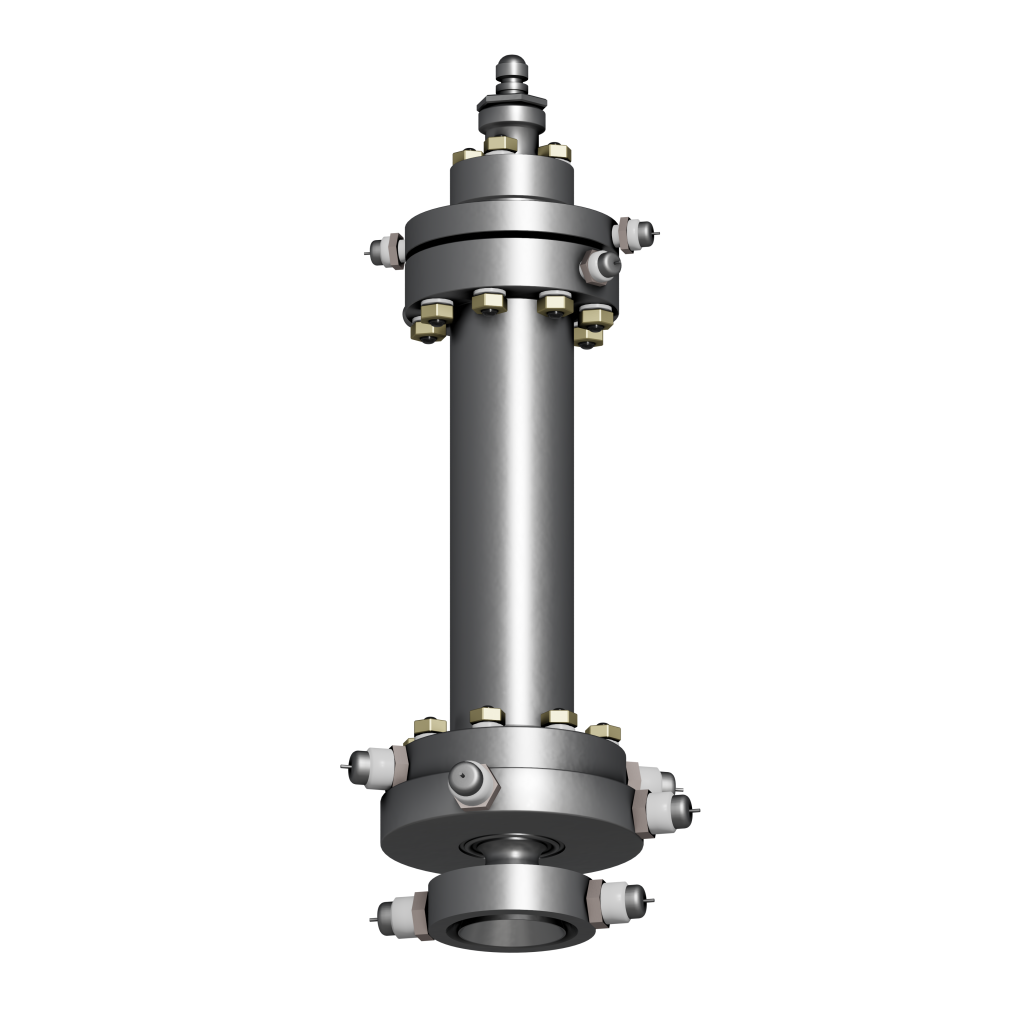
RD-110
The lessons learned from the KS-50 came in handy when Glushko was trying to create the RD-110, a new engine capable of producing almost 1,200 kN of thrust at sea level. The RD-110 was supposed to fly on a new R-3 rocket that lacked any exterior aerodynamic fins for stability. Instead, it relied entirely on gimbaling the engine to steer and control the rocket. The plan was to use eighteen injectors, each with about 70 kN of thrust. In order to develop these injectors, Soviet scientists engineered another experimental combustion chamber, the ED-140 (ED translates to “experimental engine”).
The RD-110 engine was very reliable, capable of running continually, and with a very consistent start up. But despite that, it was never test-fired, likely due to concerns over cooling. However, the ED-140’s DNA would see the light of day in another engine, the RD-107. In fact, its combustion chamber is still at the heart of one of the most famous Soviet rockets, the Soyuz-2.

R-7 Family of Engines
RD-107 and RD-108
Development
The R-7 was the first rocket to reach orbit. Originally, it had a very simple goal – to be able to carry a 3-tonne warhead over a distance of 8,000 km, which would make it possible to hit the USA from the Soviet Union. Glushko tried to scale up the ED-140 in a new design called the RD-105. However, he faced the problem of combustion instability. After that, he decided to split the combustion chamber into four smaller ones fed by a common turbopump, which solved the problem. In fact, this concept of multiple combustion chambers is a staple of many Soviet-era designs.


The developed RD-107 engine (for Stage 1) and its twin sibling the RD-108 (for Stage 2) are still in use today! These engines first flew on May 15, 1957, on the first R-7 rocket, which featured four strap-on boosters (Stage 1) that surrounded a single core (Stage 2). The RD-107 and RD-108 are almost identical. In fact, the only difference is the number of vernier engines, the outer boosters with the RD-107 have a pair of them, while the center core with the RD-108 has four. In addition, these engines were a much more elegant solution compared to the heavy control vanes made of graphite that would steer the V-2.

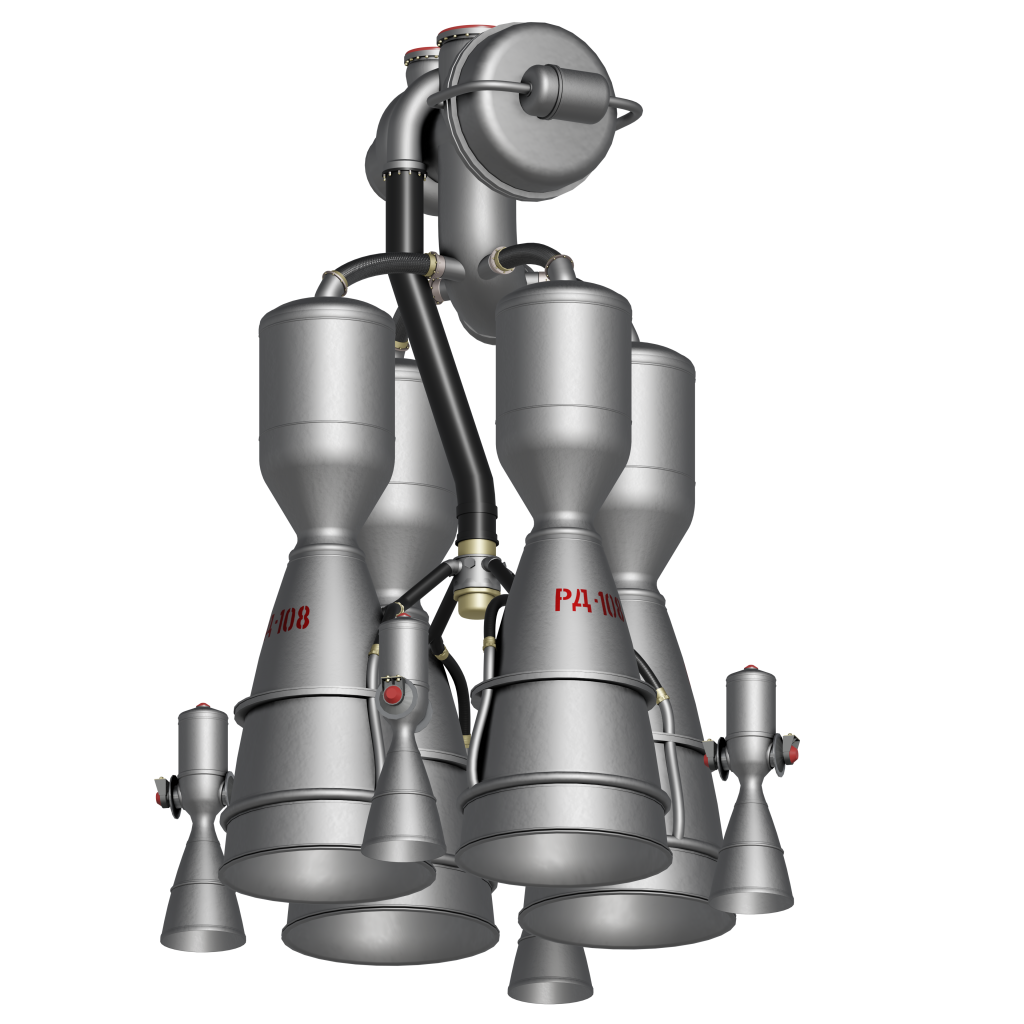
Characteristics
Ignition
Both the RD-107 and RD-108 engines run on keralox. This allowed a simple ignition process where all cores of the rocket would be lit on the ground simultaneously and did not require starting an engine mid-flight. One of the interesting things about their ignition process is that the solution to light the engines is basically giant wooden matches. Those matches look like T-shaped structures which engineers would stick up the nozzle into the main combustion chamber. All 32 chambers (20 main ones and 12 steering nozzles known as vernier engines) get their own igniter. On the tip of these structures is a pair of pyrotechnics that only need one to light successfully for ignition. This concept is still in use today!

Staging
The staging is relatively simple as all four boosters fall away at the same time. Meanwhile, a valve pops open in the LOx tank, which helps to propel the tanks away from the core stage in a pattern, known as the “Korolev cross”.
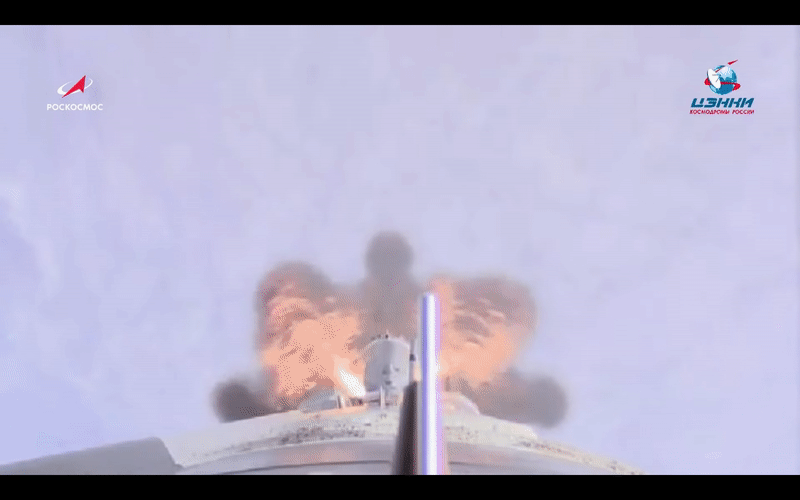
Specifications
The RD-107 could hit 810 kN of thrust at sea level and 1,000 kN in a vacuum, with an ISP of 256 s at sea level, and 313 s in a vacuum. Meanwhile, the RD-108 could reach 745 kN of thrust at sea level and 941 kN in a vacuum, with an ISP of 248 s at sea level, and 315 s in a vacuum. Thus, they achieved huge improvements over the early RD-100 engines. Furthermore, the turbopump of the RD-107/108 was powered by steam just like the A4. They ran H2O2 over a catalyst to create high-pressure hot gases that spun the turbine and powered the LOx and kerosene pumps. For this reason, there was also a fully separate tank to store H2O2. This is a very simple solution which is still in use today.
Overall, the main innovations of these engines included multiple combustion chambers, regenerative cooling, the aforementioned vernier engines, and variable mixture ratio, which helped each core to drain its propellant equally. Since the RD-107/108 first flew in 1957, these engines have gone through only minor changes. As the old adage goes: “If it isn’t broken, why fix it?”
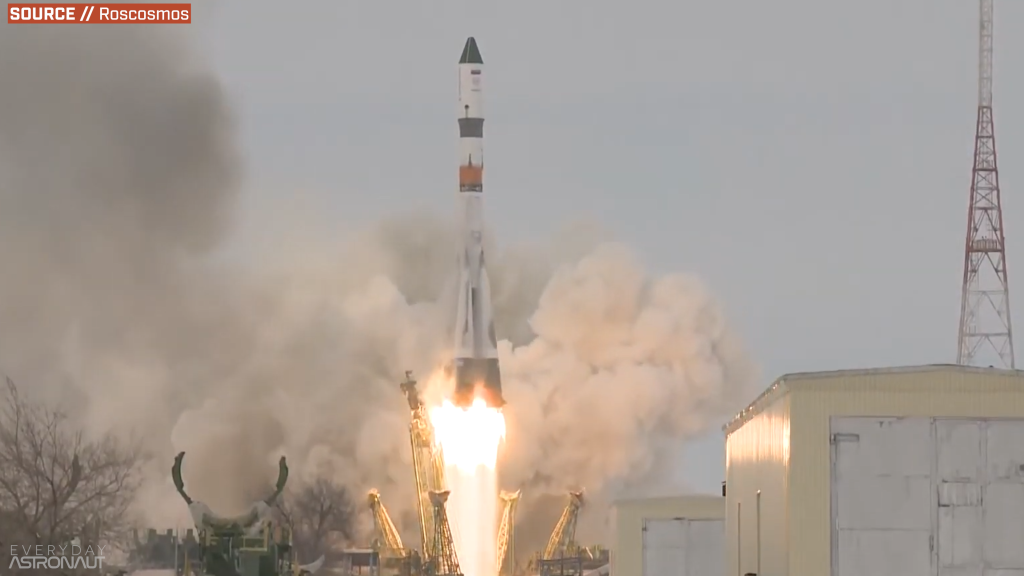
RD-117 and RD-118
There were the RD-117/118 upgrades which flew 786 times from 1973 to 2017 on the Soyuz U and U2. They were very similar to the original RD-107/108 and had only minor structural changes. For example, they had different injectors, which increased their performance a little. Moreover, the RD-117/118 sometimes ran on a fuel called Syntin, a hydrocarbon-based fuel. This fuel also offered increased performance, however, it was much more expensive.
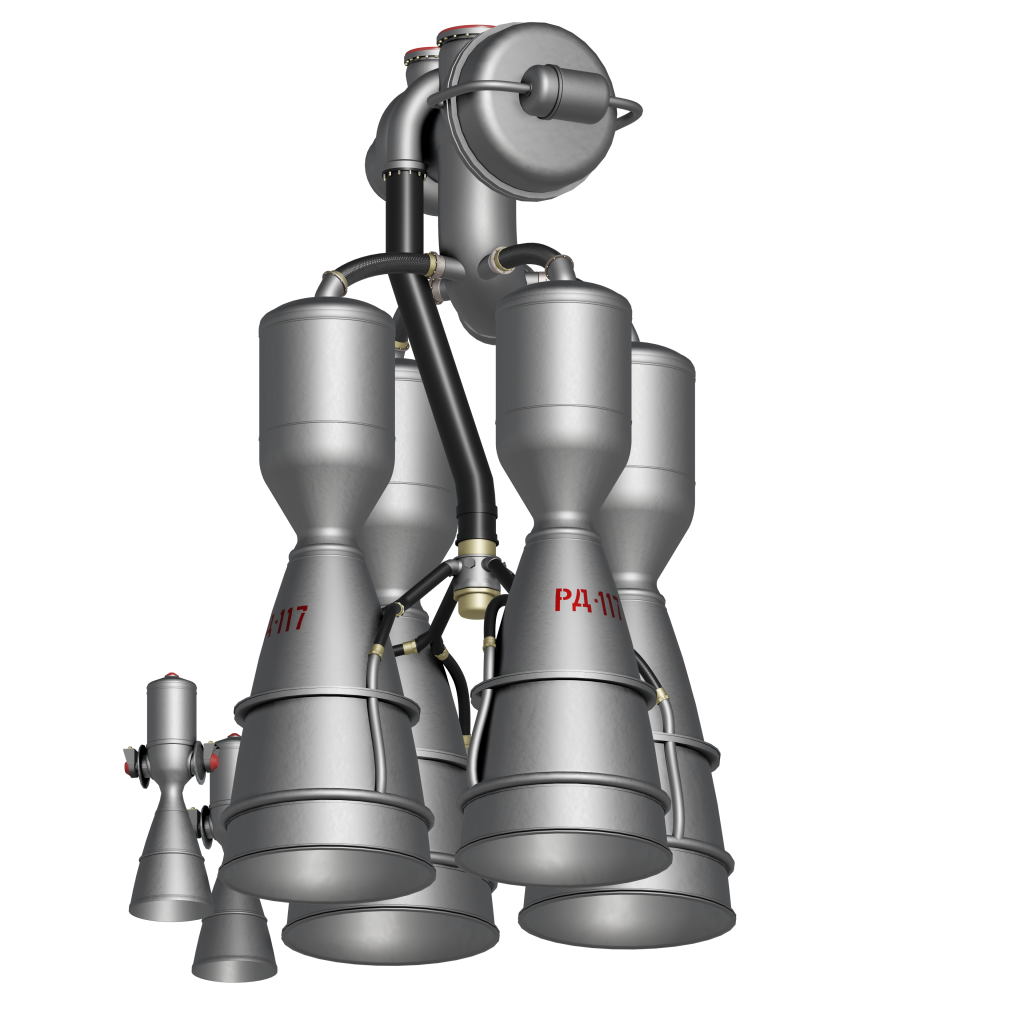
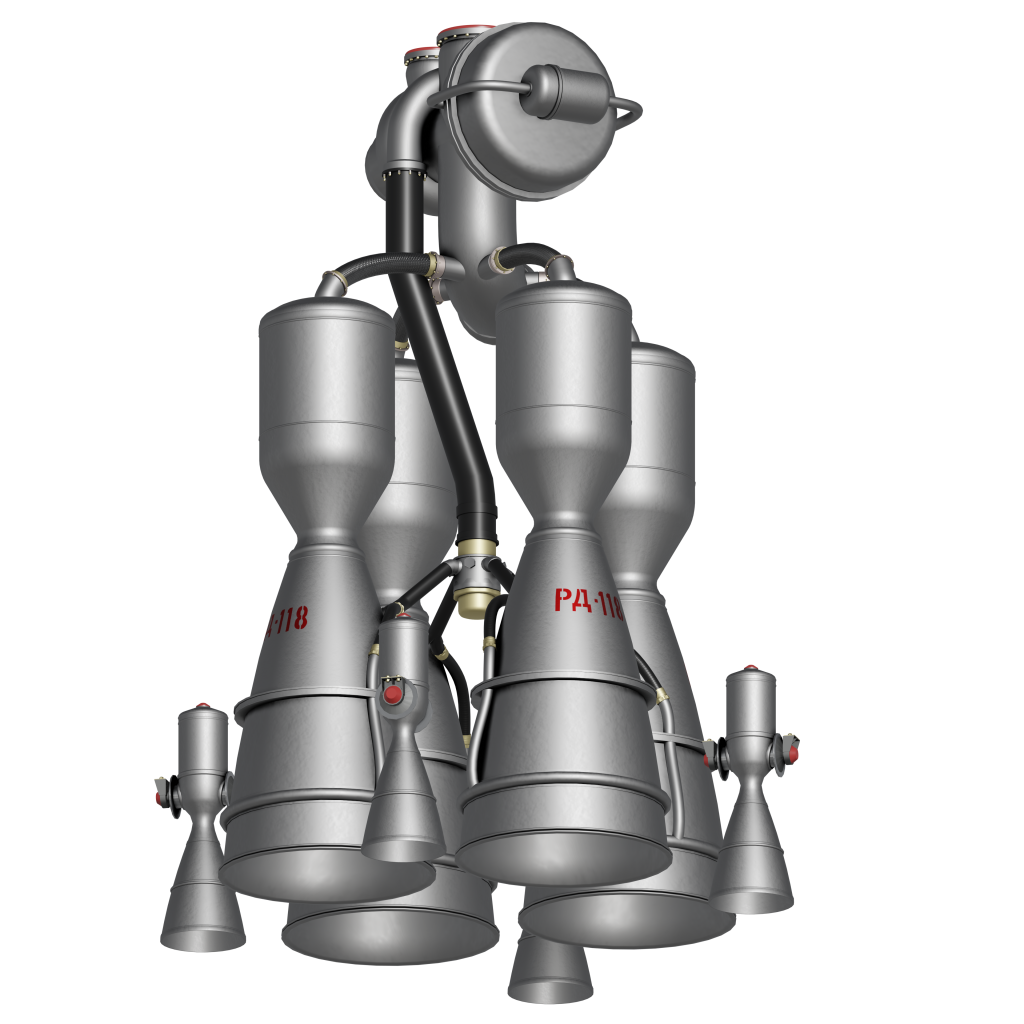
RD-107A and RD-108A
Finally, there was the RD-107A/108A that flew 70 times from 2001 through 2019 on the Soyuz FG. In addition, these engines support the new Soyuz-2, which started flying in 2004 and is still in use today. Meanwhile, the center core of the Soyuz-2.1v rocket, which started flying in 2013, does not run on the RD-108A, but on the closed cycle NK-33 engine. This engine was developed for the Soviet Union’s massive N1F moon rocket.
The RD-107A produced 839 kN of thrust at sea level and 1,020 kN in a vacuum, with an ISP of 263 s at sea level and 320 s in a vacuum. Otherwise, they have very few changes compared to the original.


Upper Stage of R-7
In order to increase its capacity, the R-7 rocket needed to have an upper (third) stage. The first upper stage that they developed had a mighty task, to reach the Moon!
RD-109
The Soviet Union began developing the 8K73 upper stage in 1957. For this, Glushko designed an RD-109 engine, which had an impressive ISP of 334 s and could produce 102 kN of thrust in a vacuum. The RD-109 ran on LOx and UDMH (unsymmetrical dimethylhydrazine), which is a very toxic fuel that Korolev did not like to use. As a result, this engine never saw a flight.

RD-0105
The Vostok variant of the R-7 wound up being the first R-7 rocket to have a third stage called Block E, which made it more capable. This stage was powered by the RD-0105 engine (designed by Kosberg), which was based on the vernier engines on the RD-107/108 and ran on keralox. The RD-0105 could produce 49 kN of thrust in a vacuum at an ISP of 316 s.
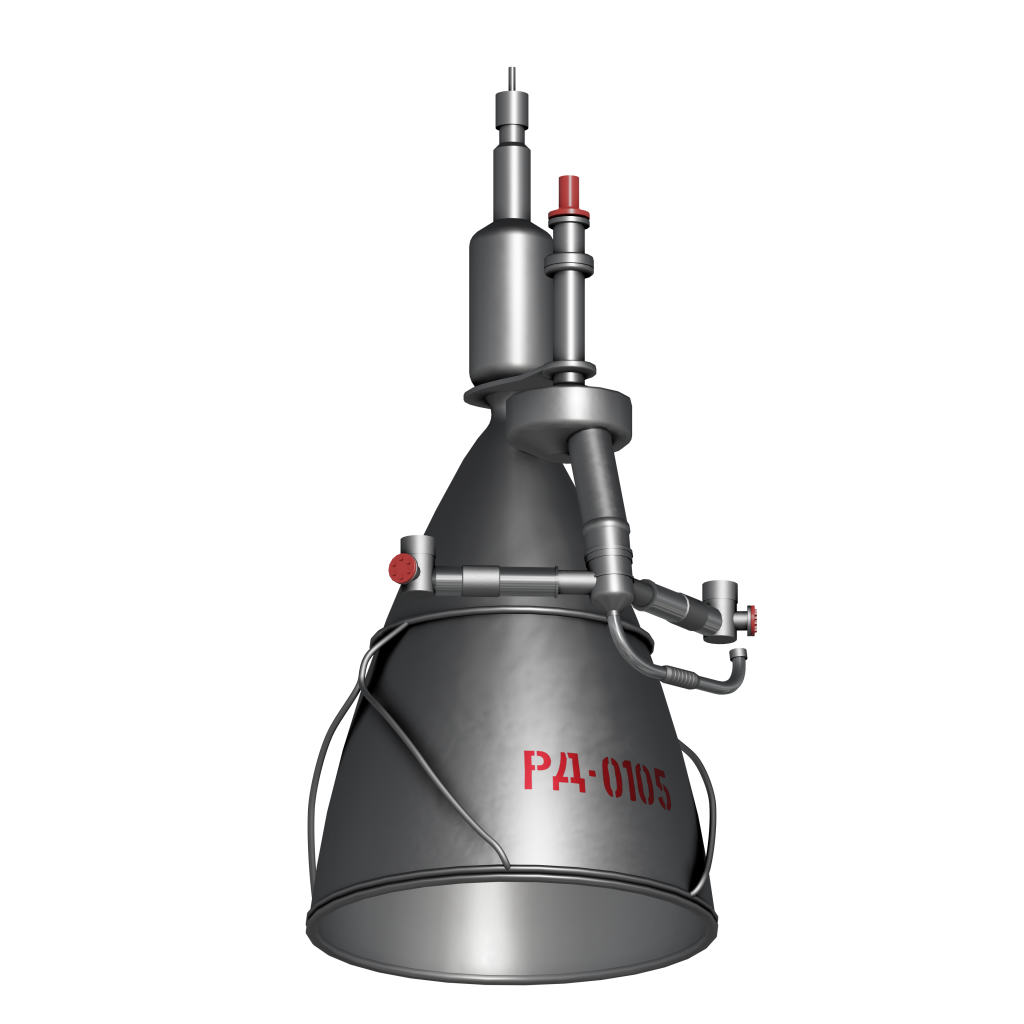
RD-0109
Meanwhile, Glushko wanted to upgrade the engine for an even more powerful upper stage for a version of Vostok – the Vostok-K. As a result, he developed the RD-0109, which had a lower mass and increased reliability thanks to its new lightweight combustion chamber. These improvements made it capable of putting Yuri Gagarin into orbit on April 12, 1961! Subsequently, John Glenn became the first American to orbit Earth (Mercury-Atlas 6) onboard Friendship 7 on February 20th, 1962.

One interesting aspect of the engine on this stage is that it starts its ignition sequence prior to stage separation. This process is called “hot fire staging” and it is possible because of the open interstage. Thanks to this feature, there was no need to have any other secondary motors to accelerate the upper stage to settle the propellant on the bottom of the tanks before turning on the engine. This is needed to avoid sucking up air bubbles and having rough starts that could damage the engines. Some other Soviet rockets also make use of this interstage design.
RD-0106, RD-0107, RD-0110
After that, there was an RD-0106, which was a four-chamber version of the RD-0105/0109 and offered over four times the thrust. It was used on the Block-I third stage for the Molniya rocket that flew for the first time in 1960.
The RD-0106 was then slightly modified to the RD-0107 and after that to the RD-0108. It flew 300 times on the Voskhod R-7 from 1963 to 1976. Subsequently, there was the RD-0110, which saw its first flight in 1965 and is still in use today on the Soyuz-2.1a rocket.
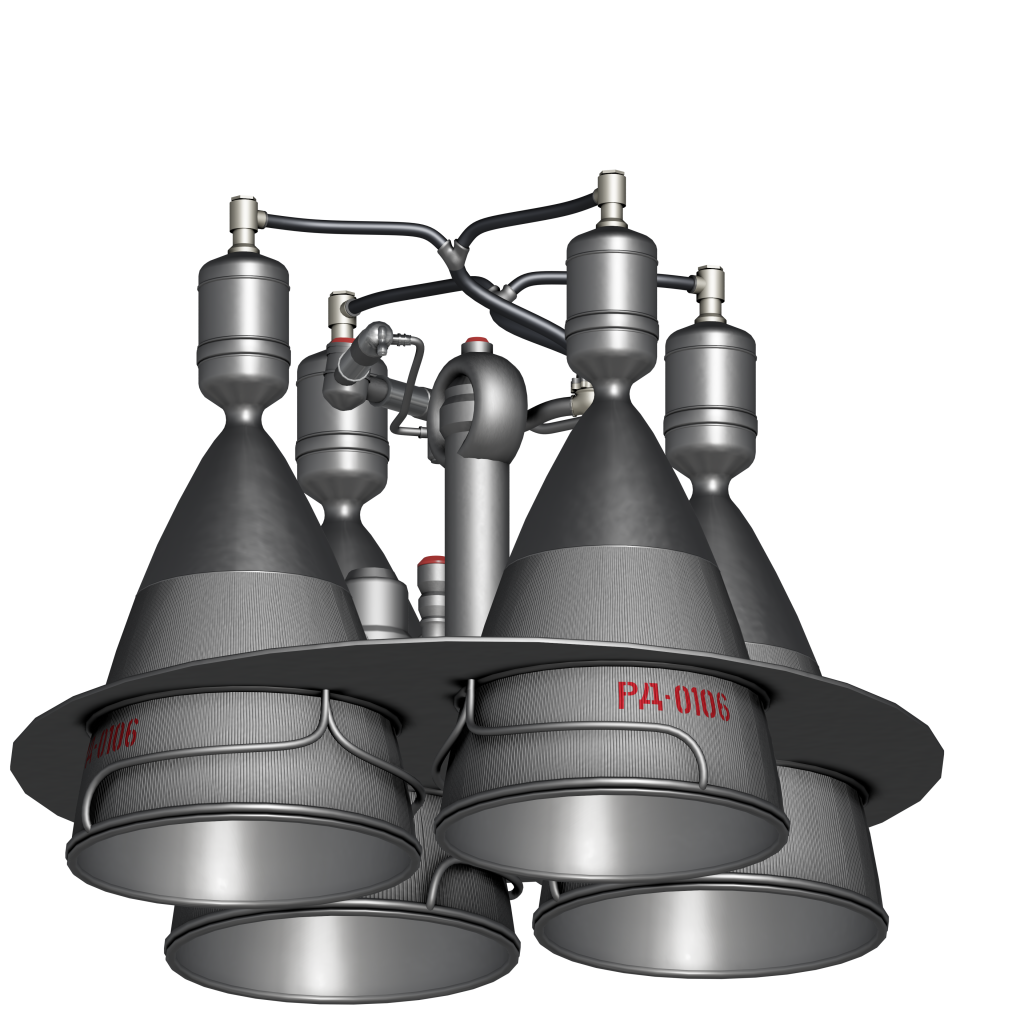
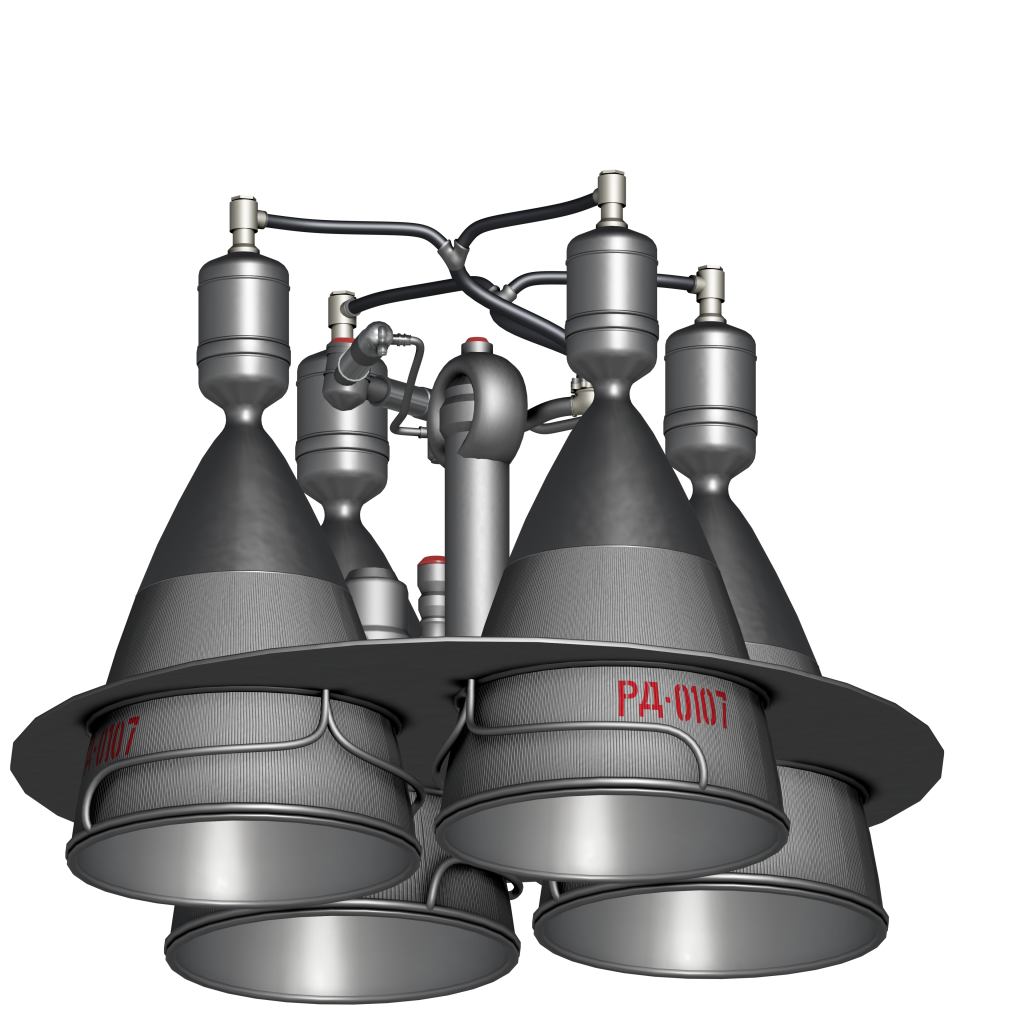

RD-0124
There was also the RD-0124, which is a closed cycle engine that the Soviets intended to use universally on several vehicles. It did not have any vernier engines and used RG-1 instead of the usual T-1 kerosene. This closed cycle engine offered an improved ISP of 359 s instead of 326 s, which was practical for larger payloads. It first started flying in 2006 and is still in use today on the Soyuz 2.1b.
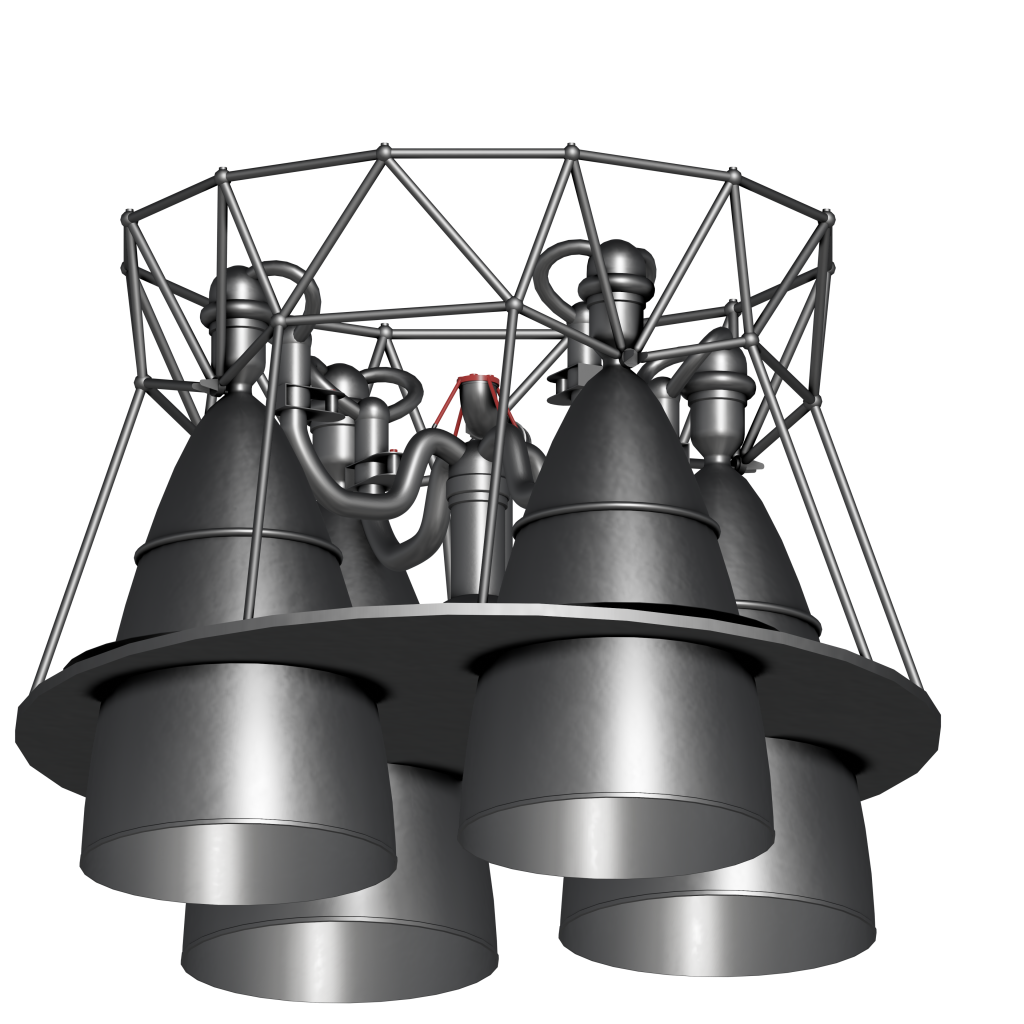
Fourth Stage of R-7
The R-7 also considered a fourth stage, even before Yuri Gagarin made his famous flight. It was first flown on the Molniya rocket, an early variant of the R-7 that flew 40 times with a 50% success rate. The performance of this rocket was even high enough for interplanetary missions.
S1.5400
In 1958, the Soviets began developing a closed cycle oxygen-rich engine called S1.5400. Back then, this engine type was considered impossible by US engineers. Initially, this engine had only 64 kN of thrust in a vacuum. However, it could achieve an impressive ISP of 338 s. It was way ahead of its time for a keralox engine and it flew successfully in 1961 on a mission to Venus, the very first interplanetary probe! The real breakthrough was developing metals, such as titanium alloys, that could withstand harsh conditions, such as having hot gaseous oxygen blasting.
The S1.5400 engine became the basis for many engines for other rockets, despite having a very limited presence on the R-7 family and has only flown 4 times in total.
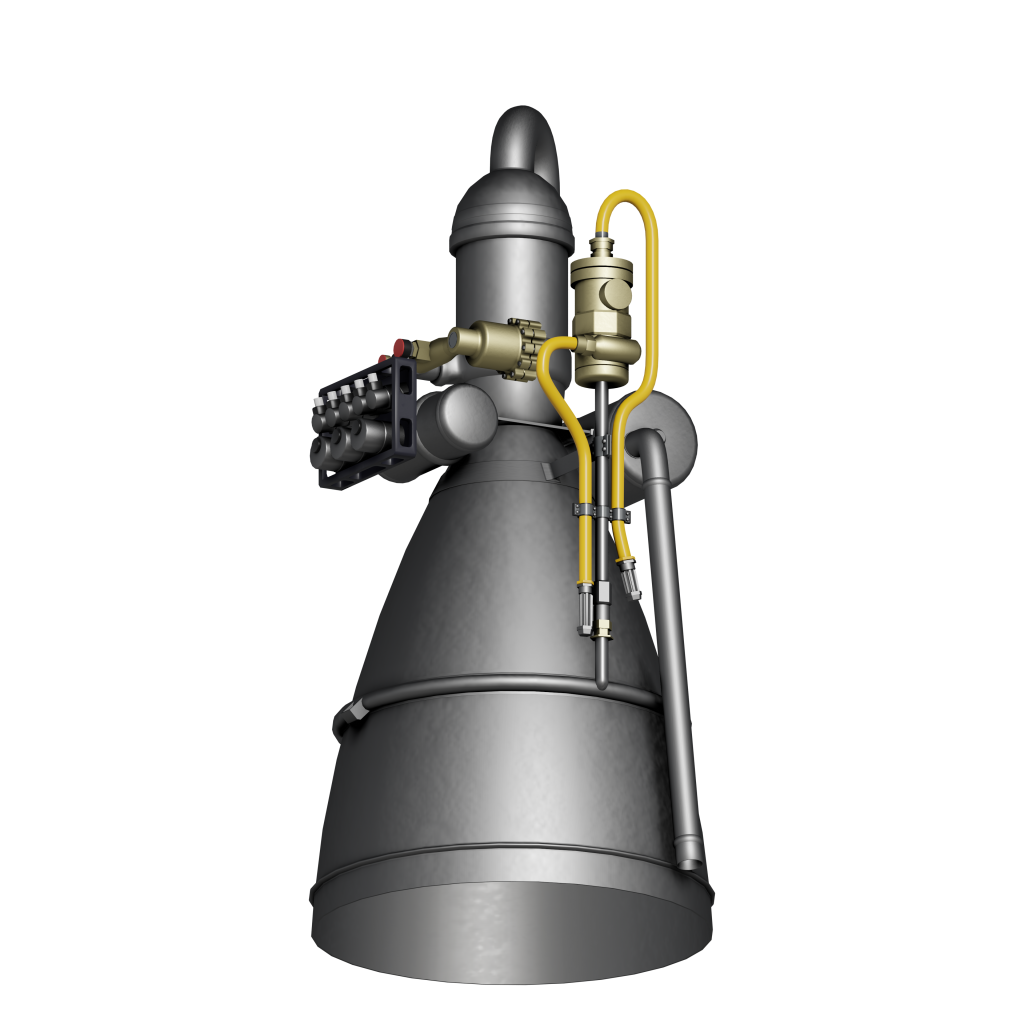
S5.92
The Soyuz-U was the next R-7 to have a fourth stage powered by the S5.92 engine on the upper stage called Fregat, which first flew in 1973. It was a small open cycle hypergolic-fueled engine that produced 19.6 kN of thrust with an ISP of 327 s in a vacuum. It could be re-lit up to 50 times in space with up to 300 days between ignitions.

Yangel’s Hypergolic Rockets
While the R-7 was on its way to fulfill many important tasks, the Soviet Union wanted to have more options. This is because the R-7 had a relatively narrow window of operation since it used LOx as an oxidizer. For example, Glushko preferred working with storable propellants. This would widen rockets’ window of operation when fueled up. In fact, while he was trying to scale up the RD-105 engine, he also worked on engines that ran on nitric acid as an oxidizer instead of LOx.
RD-214, RD-215, RD-216
Since it was very hard to have stable combustion with nitric acid, Glushko decided to scale down the combustion chamber and create multiple nozzles. He did that while working on the RD-211 engine. From there, Glushko started working on the RD-200 series of engines that first saw use on the R-12 and R-14 rockets. The development of these medium-range ballistic missiles was led by Mikhail Yangel (OKB-586, Ukraine). The R-12 rockets played a role in the Cuban missile crisis as they were the rockets deployed to hit the mainland United States. Also, the R-12 and R-14 rockets would go on to become the second orbital rocket family from the Soviet Union. In fact, the R-12 was studied to become the basis of an orbital launch vehicle as early as 1956.
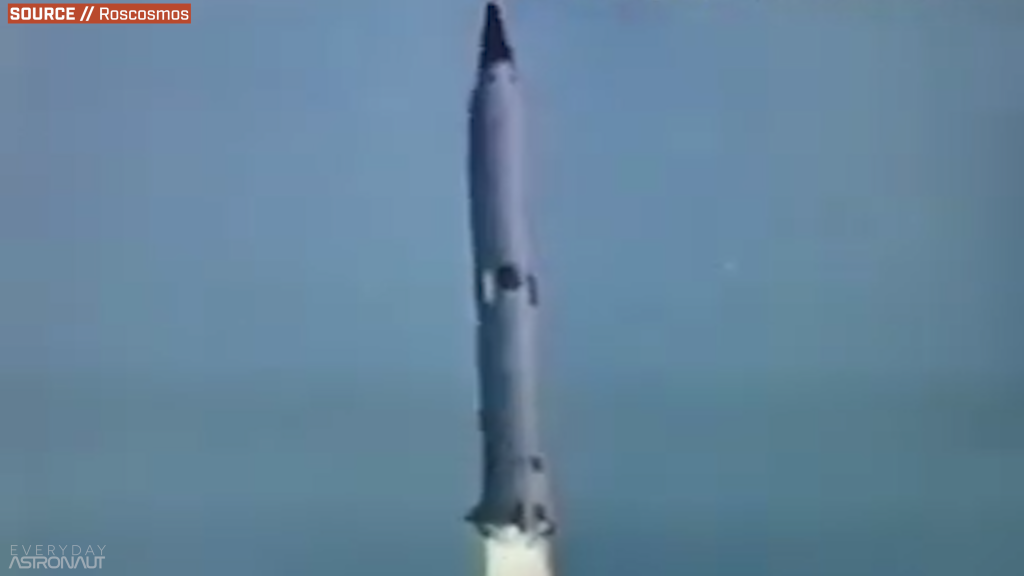
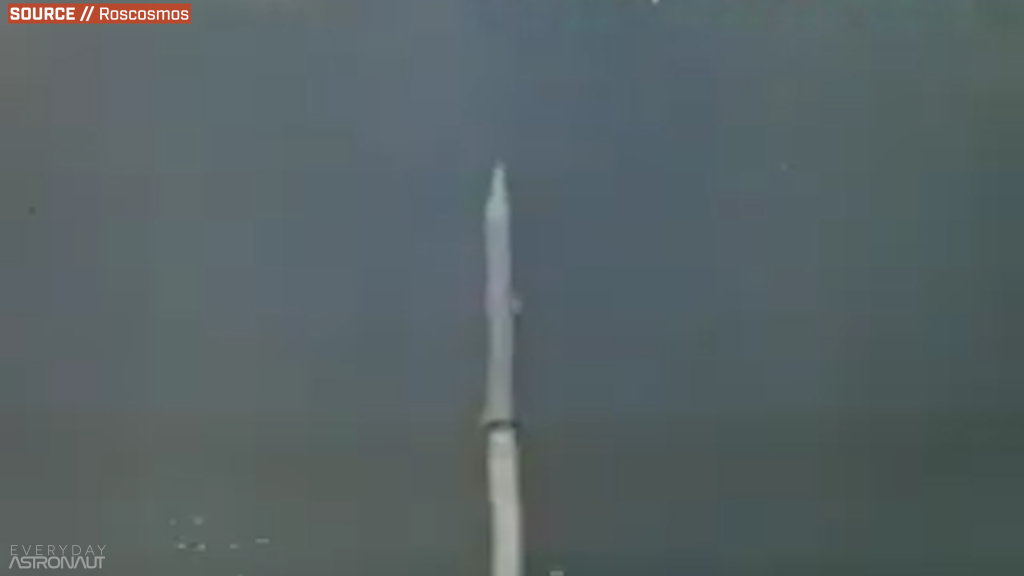
The R-12 rocket featured a spin-off of the RD-107 – the RD-214. This engine still worked on the H2O2 gas generator. However, unlike the RD-107, it ran on nitric acid and kerosene.
For the R-14 rocket, Yangel created an upgraded version of the RD-214, called the RD-215. To make this engine, he split up the four chambers into a pair of dual-chambered engines. As a result, the upgraded RD-215 flew in pairs, which was called the RD-216. Therefore, the RD-216 is just two dual-chambered RD-215s.
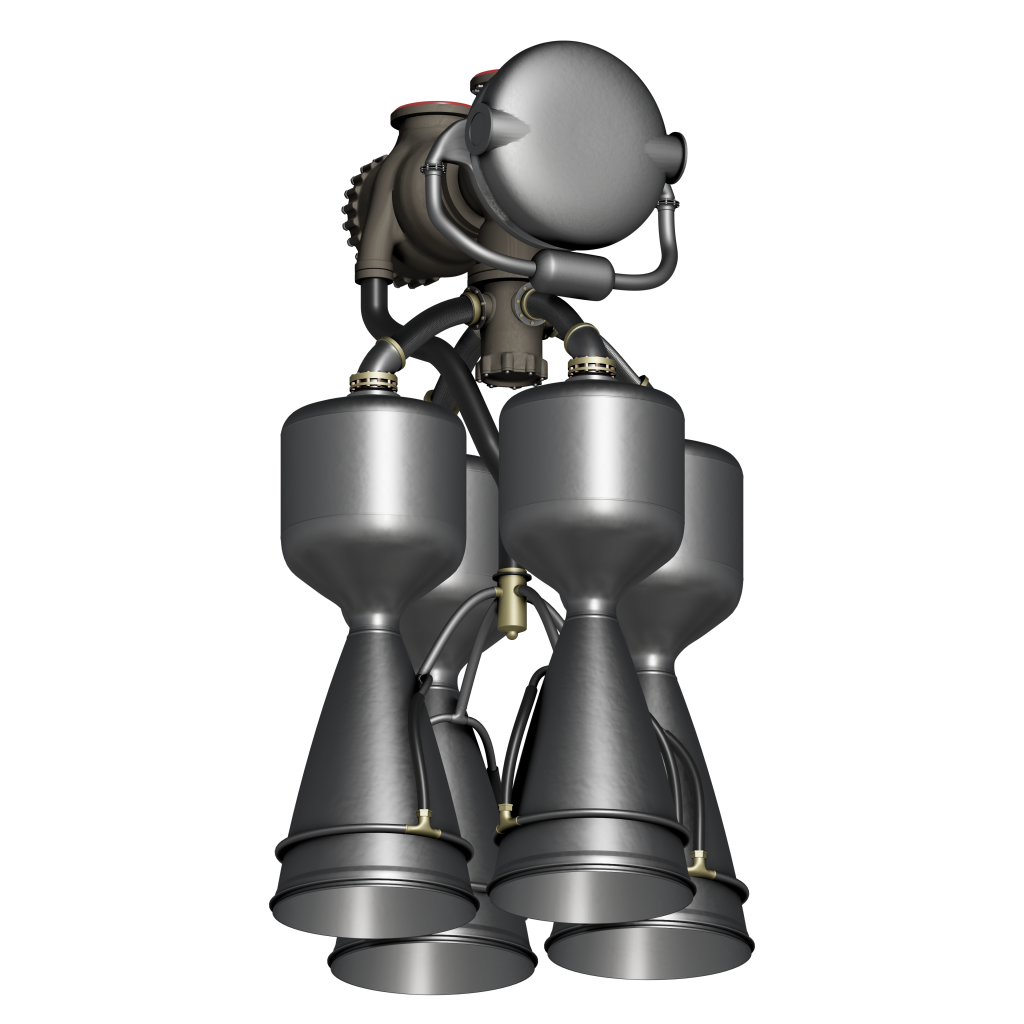
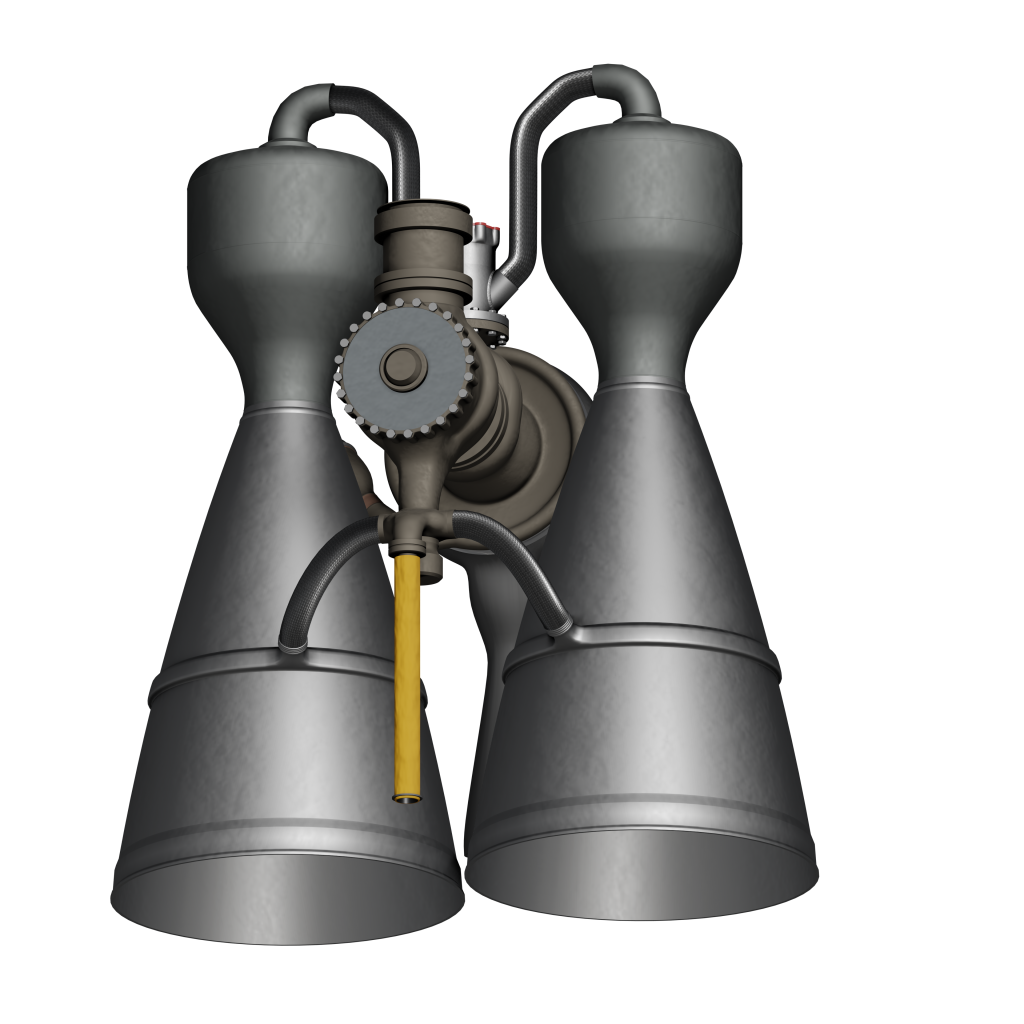
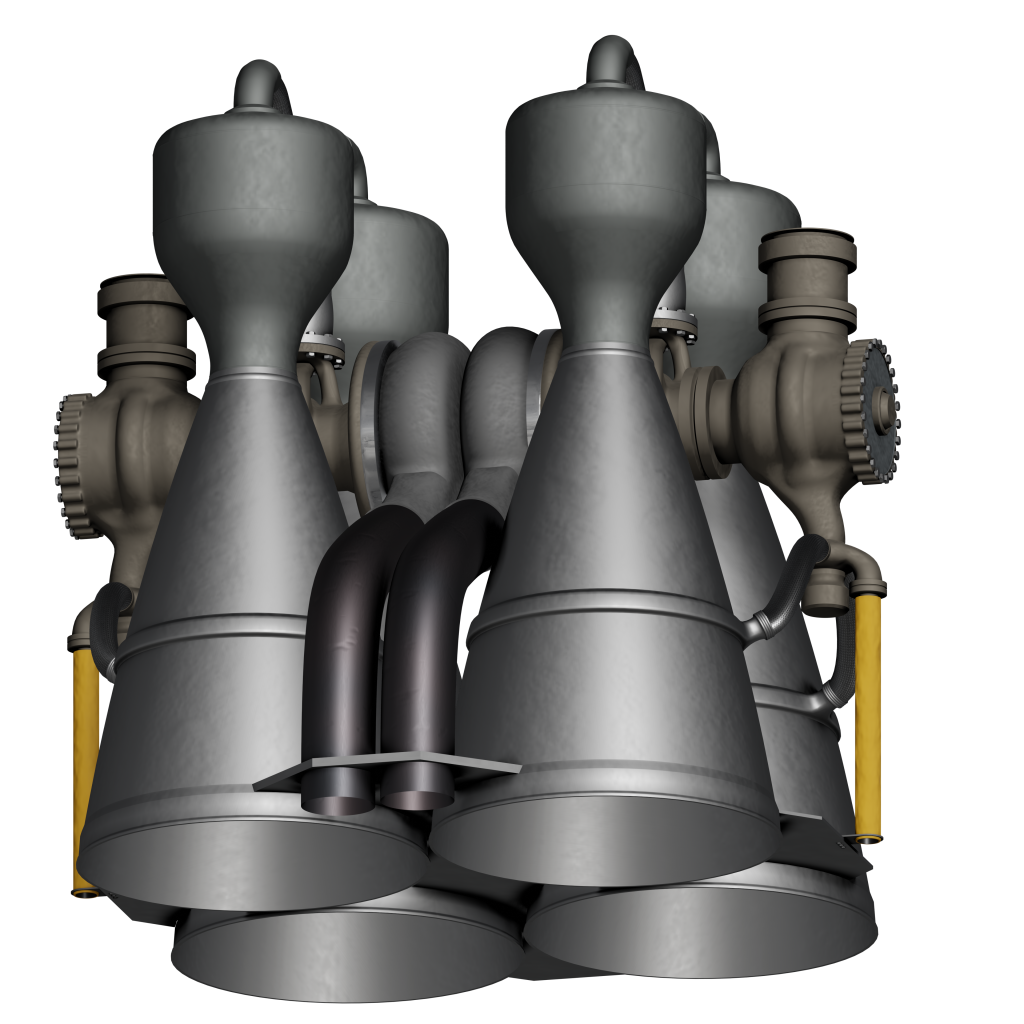
RD-119
The R-12 and R-14 rockets became the basis for the orbital Kosmos launchers. The Kosmos 1, 2, 3, 3M, and the K65M-RB5 launched 625 times with about 90% success rate overall.
To make an orbital launch vehicle from this small rocket, it needed a very efficient engine for the second stage. This is when Glushko decided to tweak the RD-109 and put a much larger expansion ratio nozzle on it to increase its efficiency in space. The new engine was called the RD-119.
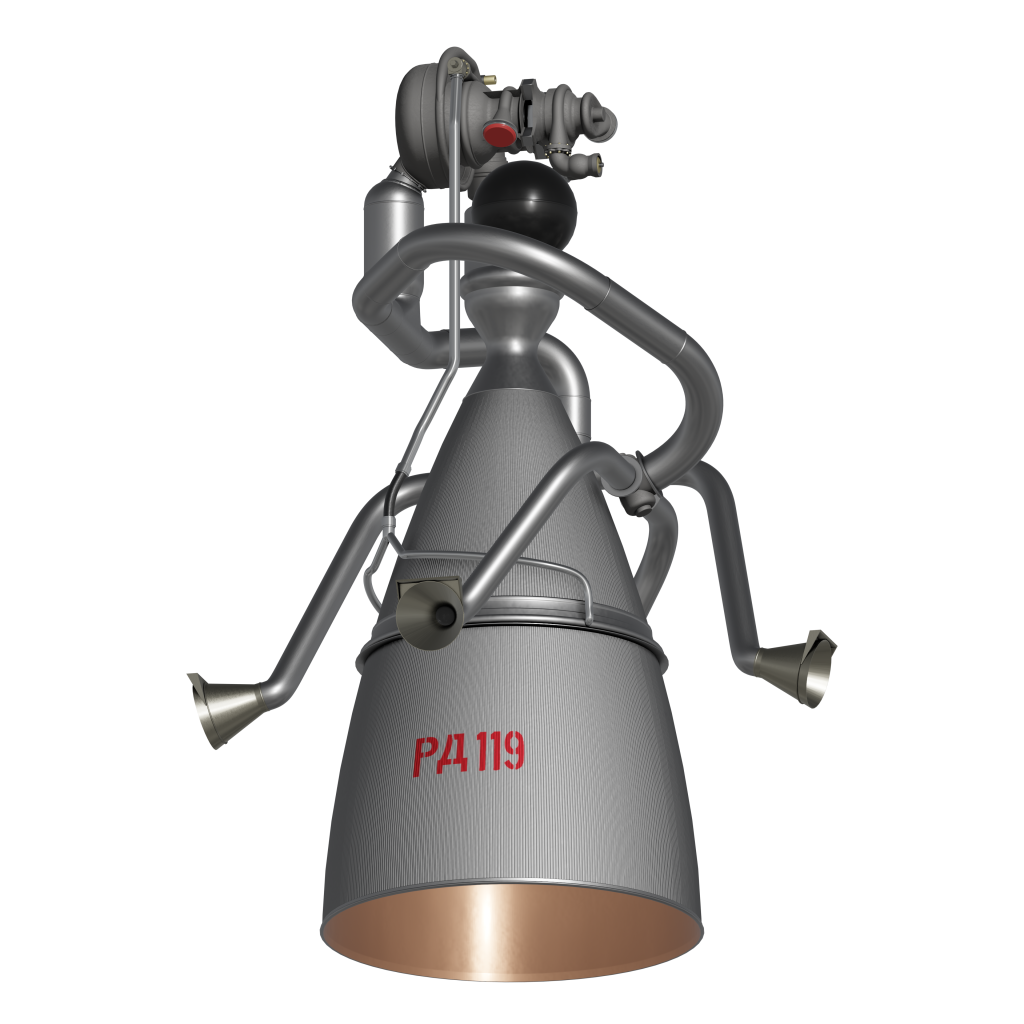
For the steering control of the rocket, the engineers did not use vernier engines or the engine’s gimbaling. Instead, they took the exhaust from the gas generator and directed them through four fixed pipes. Then, an electronically-driven gas distribution system would change how much exhaust flew to these pipes in order to provide steering control. The exhaust from the gas generator consisted of decomposed fuel, not decomposed oxidizer like most other engines tended to use. As a result, this idea helped them to reach an impressive ISP of 352 s in a vacuum.
RD-217, RD-218, RD-219
Seeing the success of the R-12 and R-14, it was time to develop a more capable rocket that could serve as a powerful intercontinental ballistic missile. The rocket Yangel developed for this task was the R-16. The RD-218 engine, which was three dual-chambered RD-217s, powered the first stage of this rocket. Because these engines had fixed nozzles, the RD-218 worked in pair with a four-chambered steering engine, RD-68, much like the vernier engines on the RD-107/108. The RD-218 used AK27I mixture as propellant, which consisted of 73% nitric acid / 27% nitrogen tetroxide mixture and an iodine inhibitor as an anti-corrosive agent.
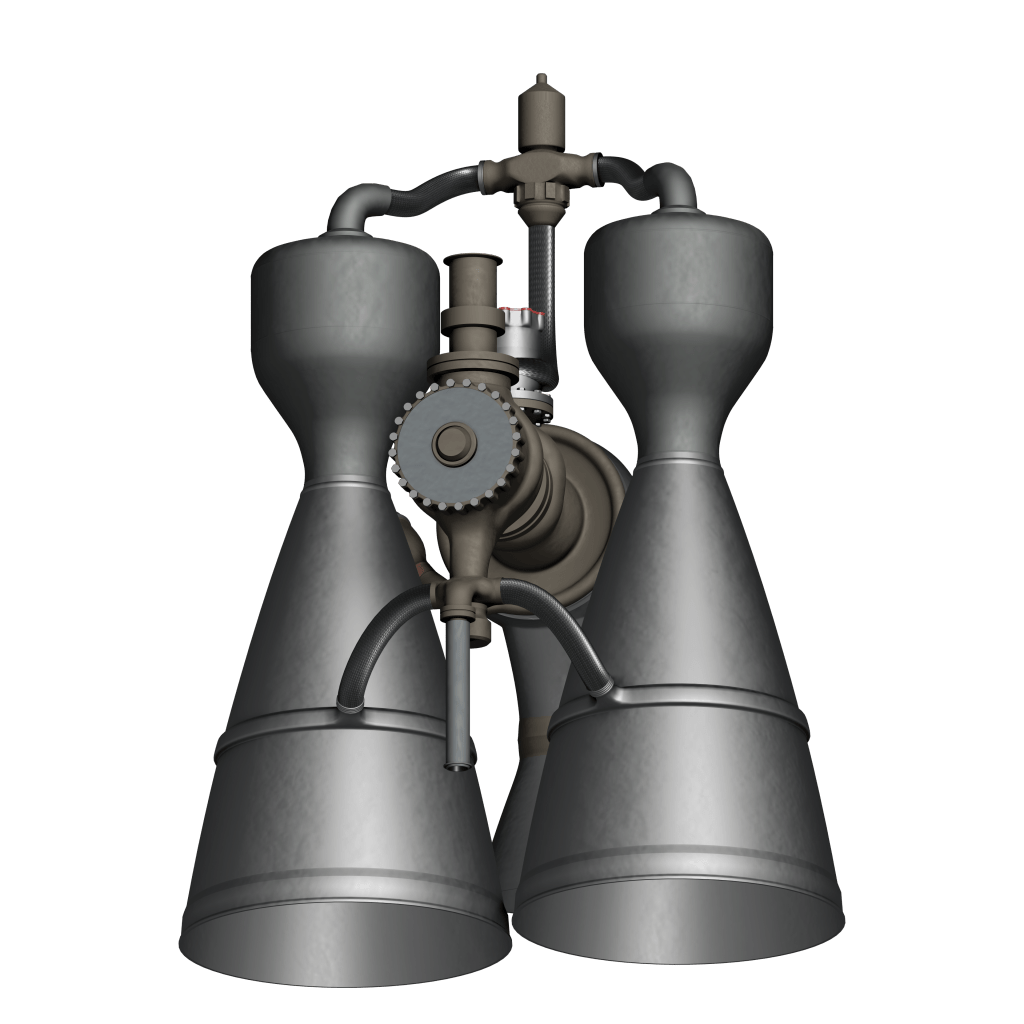
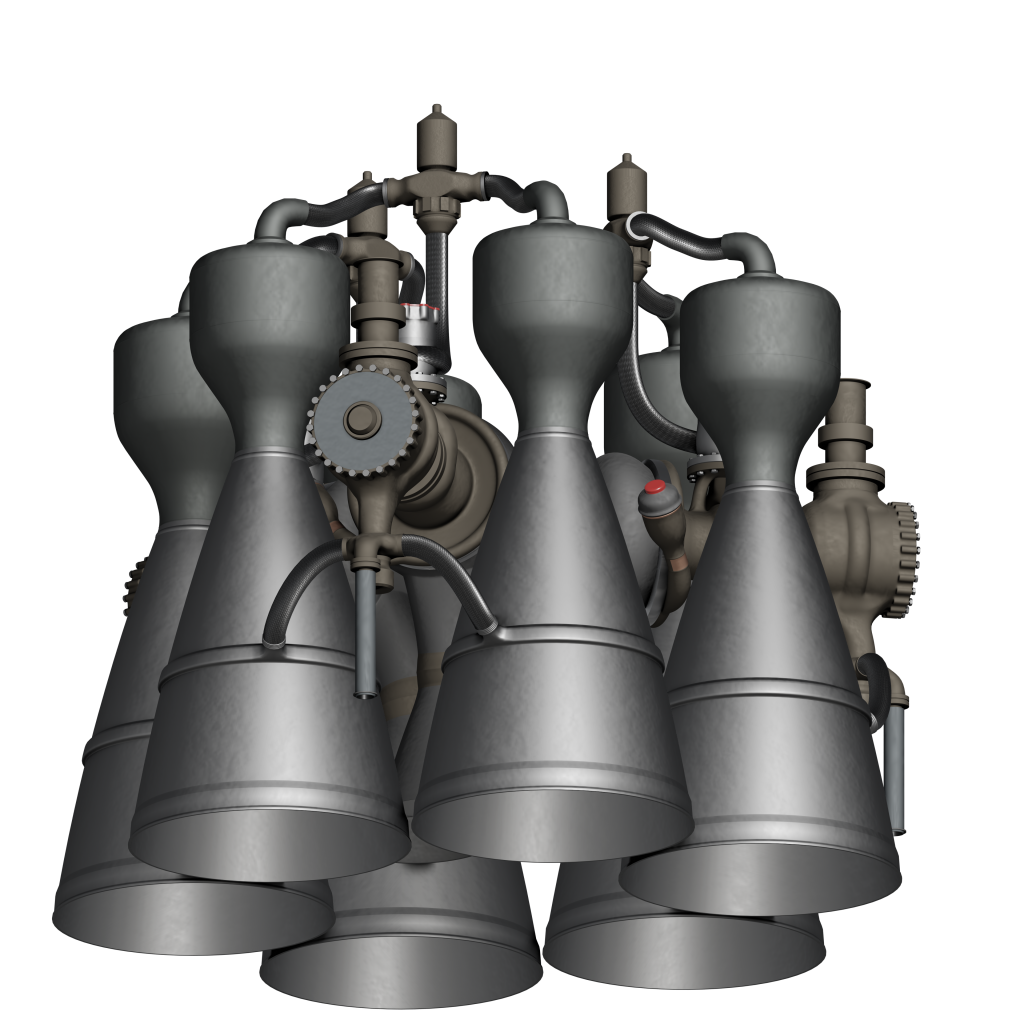

Then, a second stage featured the RD-219 engine, which was a derivative of the RD-217. In addition, it was slightly more optimized for a vacuum and had its own quad-chambered steering engine, the RD-69.
Nedelin disaster
Unfortunately, the first attempt of launching the R-16 was a disaster, known as the Nedelin catastrophe. Nedelin was the head of the R-16 development program. This accident happened on October 24, 1960, at the Baikonur Cosmodrome. While being tested before launch, the engine on the second stage started to fire, which detonated the first stage fuel tanks. This was followed by a massive explosion and the disaster left at least 90 people dead at the launch pad.
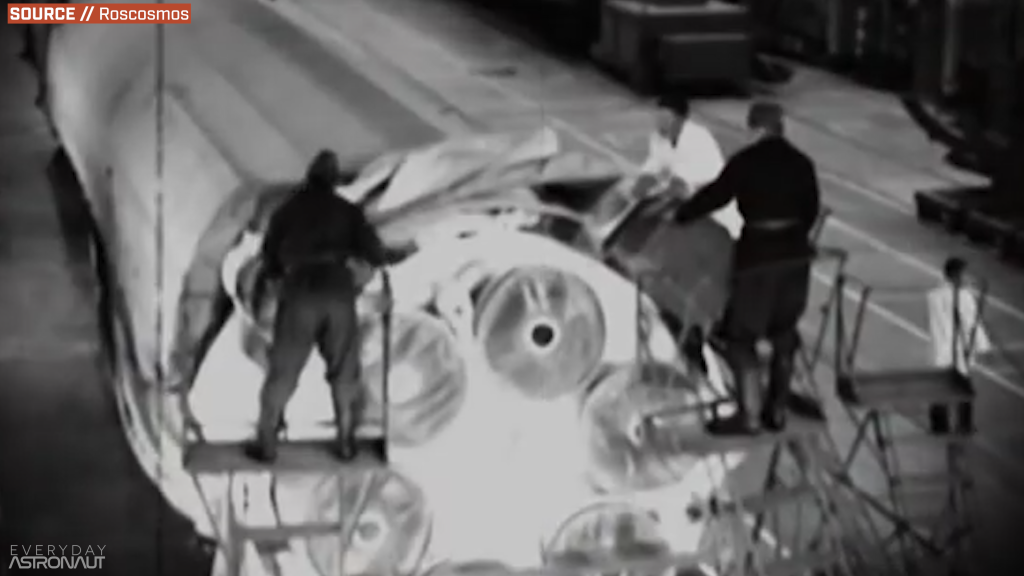
Ironically, smoking a cigarette saved someone’s life in this accident. It was chief designer Yangel who left the launch pad to go smoke since smoking next to a fully fueled rocket was prohibited. After this rough start, the R-16 went on to prove to be a formidable weapon and Yangel started designing an even bigger rocket.
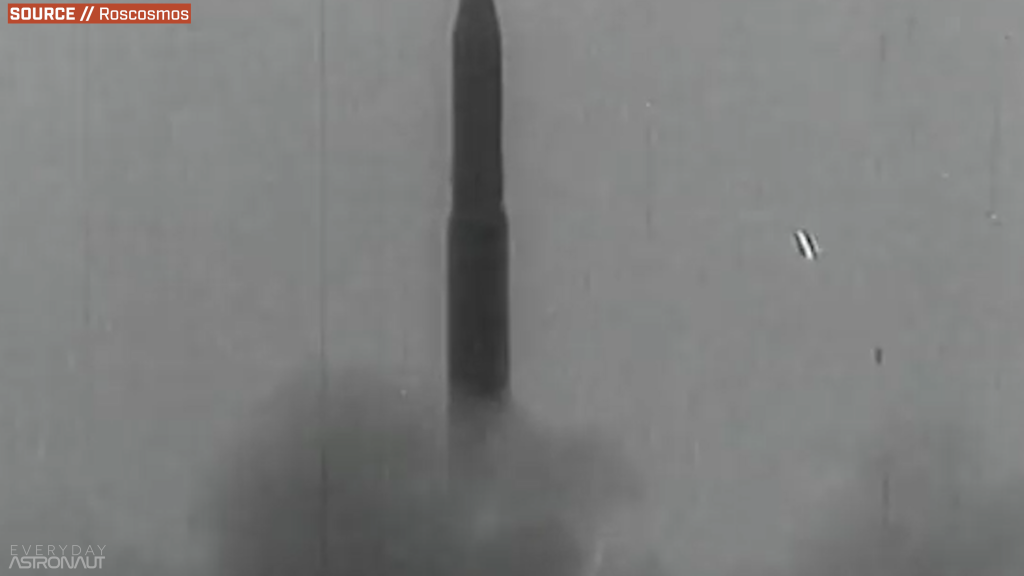
RD-251, RD-252
The R-36 has also been known by another name, the Dnepr. This happens to be the missile that Elon Musk originally tried to purchase from Russia when he wanted to send a payload to Mars. Unlike its predecessor, the R-36 used nitrogen tetroxide (N2O4) instead of nitric acid as an oxidizer. N2O4 is a less corrosive alternative for a storable oxidizer, along with UDMH it became a staple of hypergolic rockets.
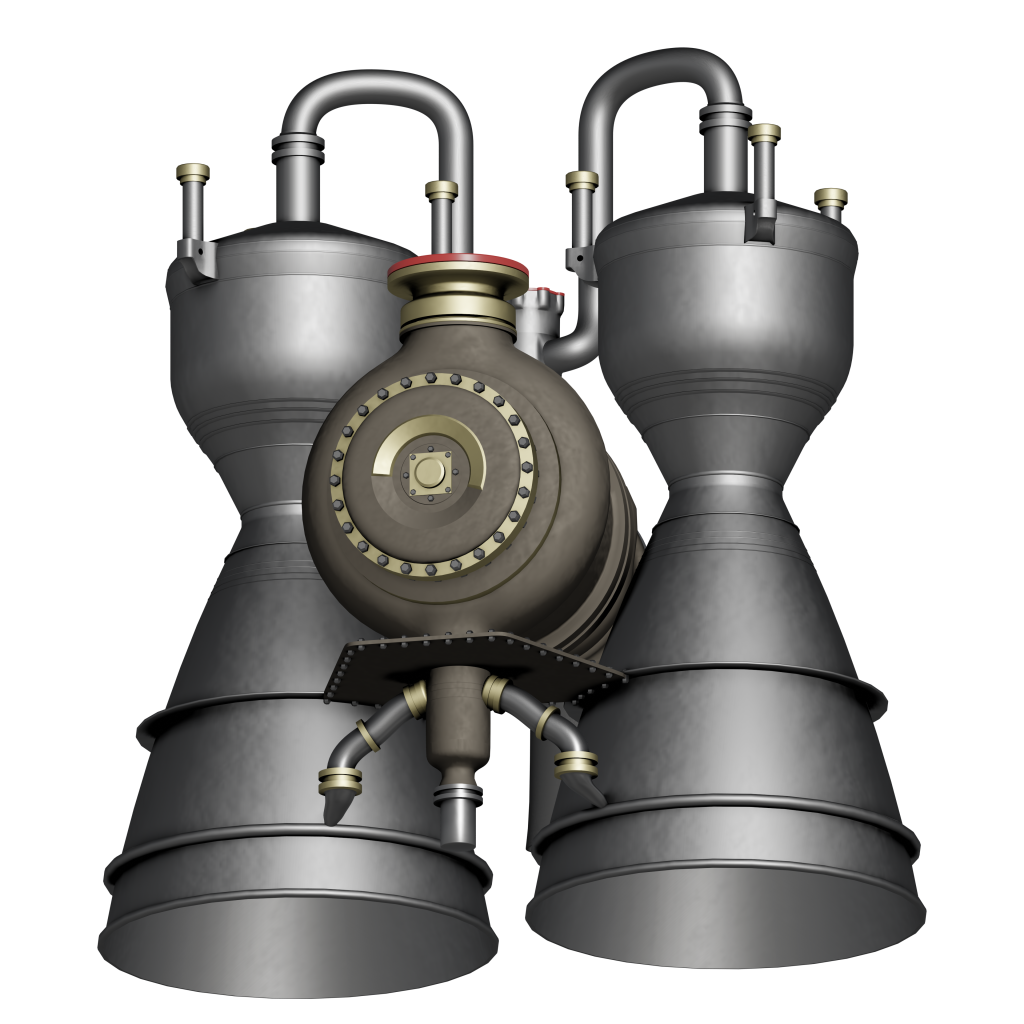


The RD-251 engine that they developed was an upgraded and evolved version of the RD-218. This engine remained open cycle, however, it had better materials that were less corrosion-prone. In addition, it used solid powder chargers to spin up the turbo pumps and there were pyrotechnic valves on the shut off valves aiding in more reliable shut downs. Similar to the RD-218, the RD-251 consisted of a cluster of three dual-chambered RD-250s.
The second stage of the R-36 featured a vacuum optimized version, the RD-252. Compared to its predecessor (the RD-219), the RD-252 could achieve 26 s better ISP, despite being relatively the same mass.
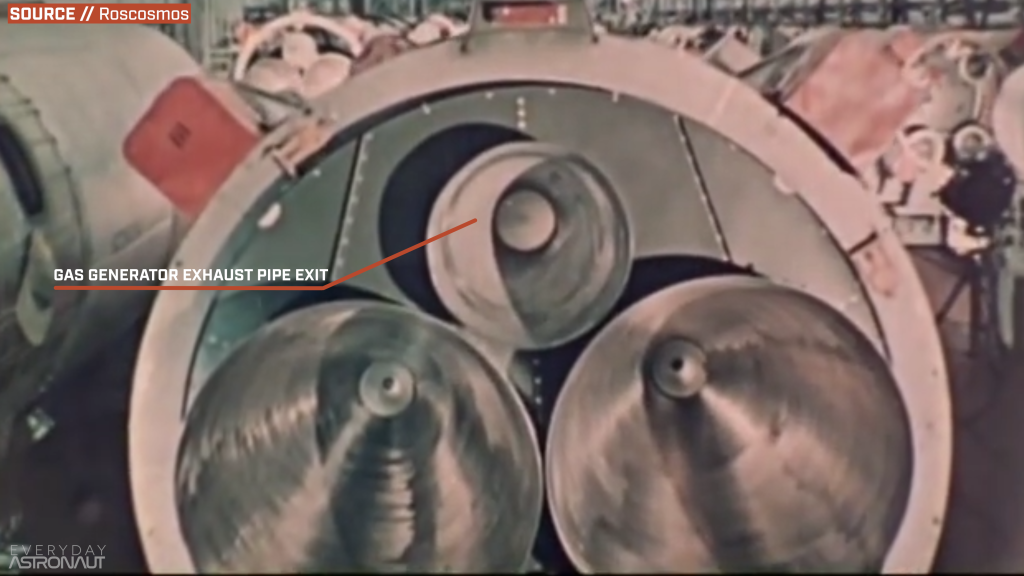
RD-861
The R-36 became the basis for the Tsyklon-2 launch vehicle. The Tsyklon-2 was a two-stage rocket that made 106 flights with only 2 failures between 1969 and 1999, which makes it one of the most reliable rockets ever made.
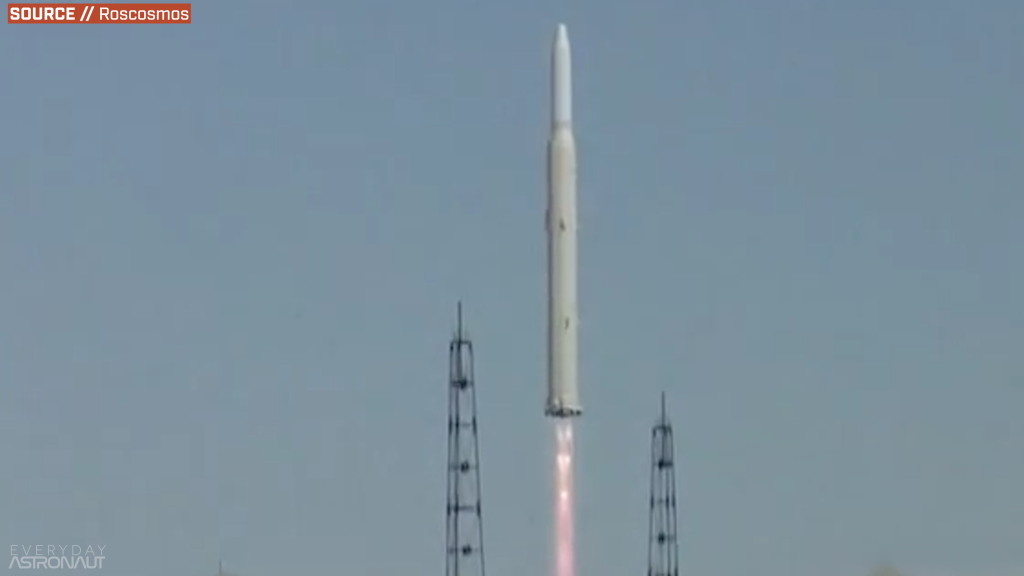
There was also a three-stage version of the Tsyklon-2 – the Tsyklon-3. The third stage had a small hypergolic open cycle engine, the RD-861, which had a single combustion chamber with four vernier nozzles. Those vernier nozzles were fed from the gas generator exhaust.
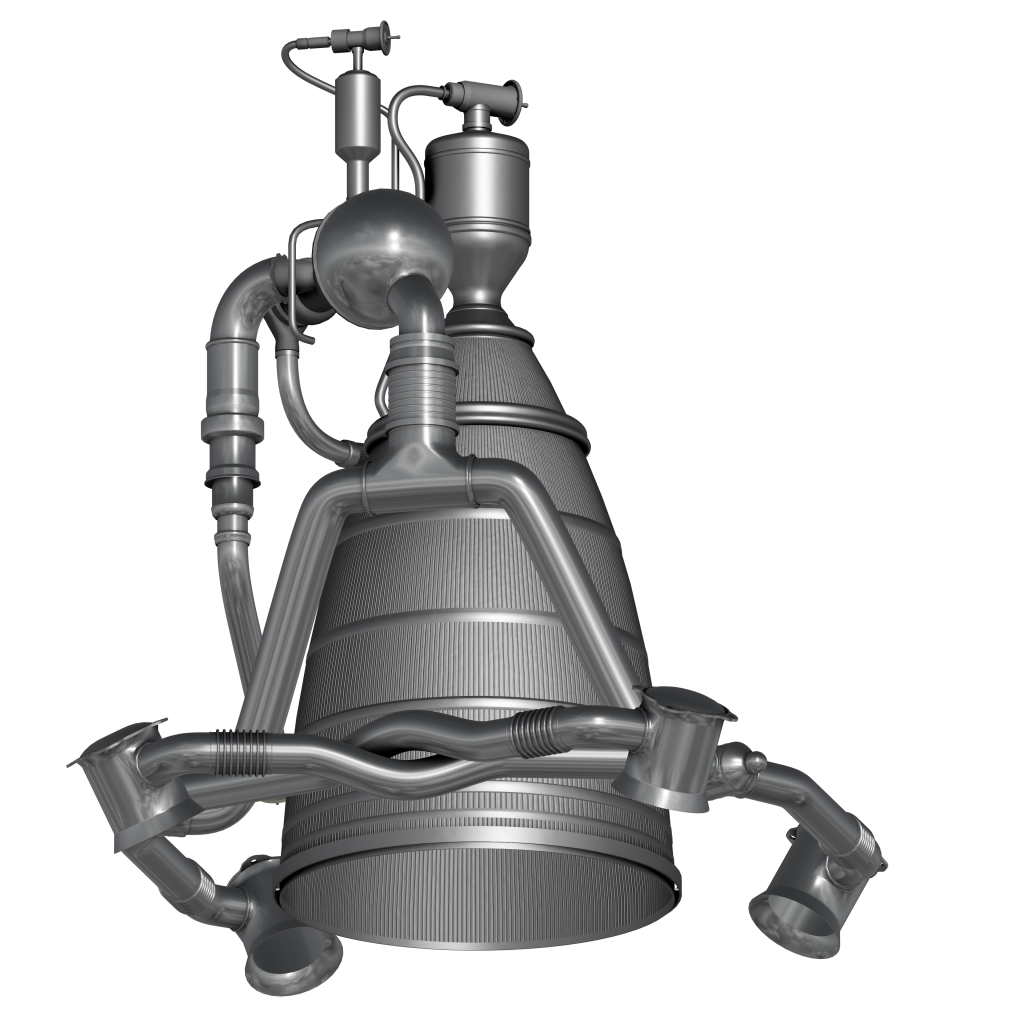
RD-261, RD-262
Moreover, the Tsyklon-3 featured an upgraded RD-251, the RD-261/262. This engine could handle a wider range of operating temperatures since it was only used as a space launch rocket. The Tsyklon-3 halted production in 1991 with the collapse of the Soviet Union. However, it was flown until 2009.

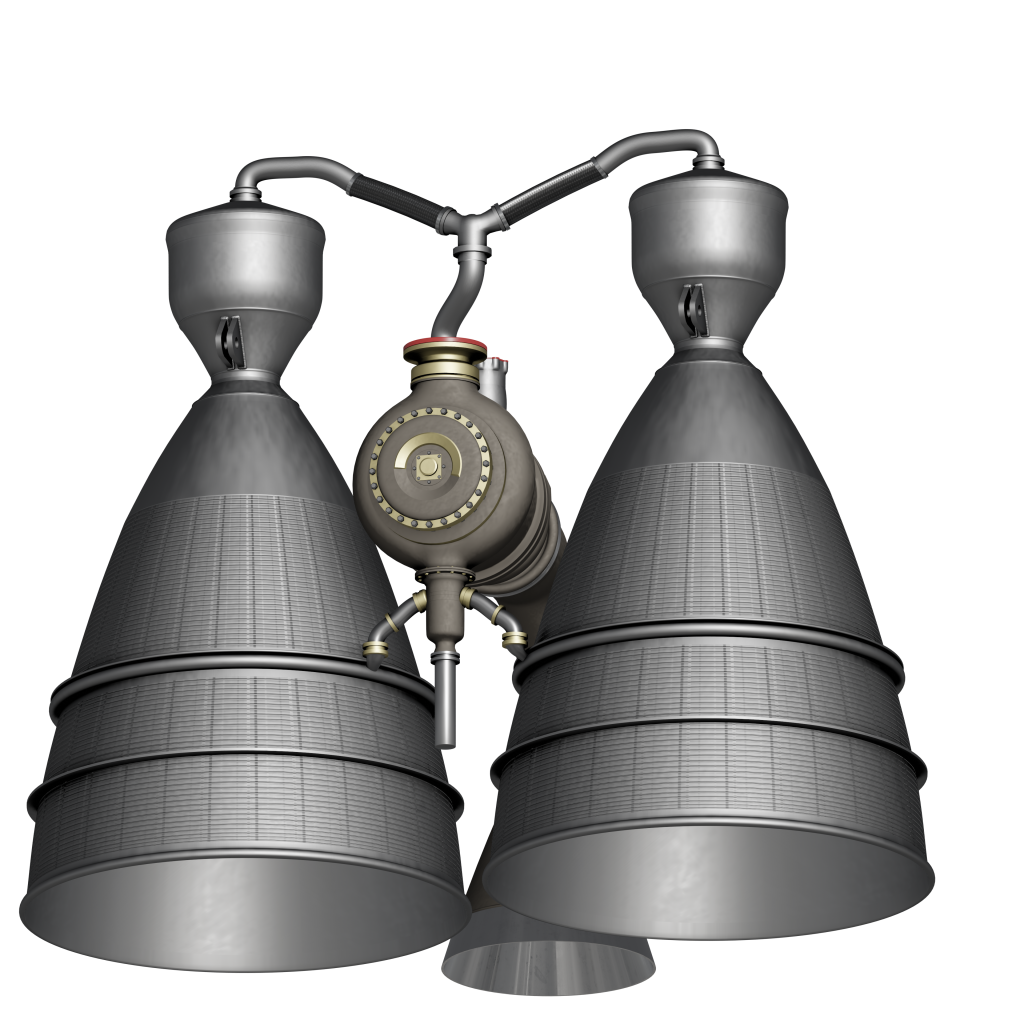
RD-263, RD-264
In the 1960s, Yangel and Chelomey started working on new projects that aimed at further development of the ballistic missile program. Yangel proposed a new version, the R-36M. As a result, in 1969, the R-36M project was approved.
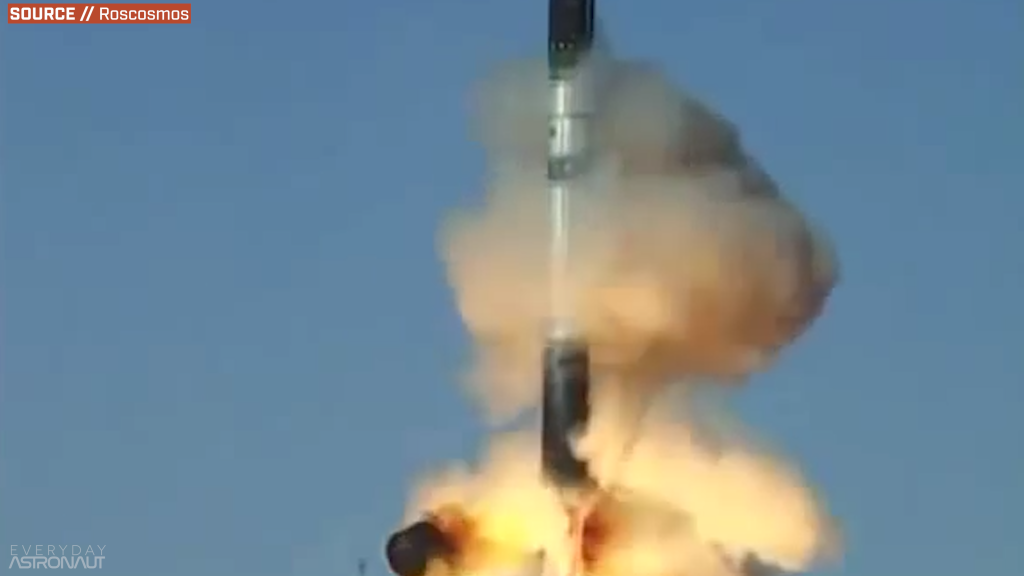
The first stage of the R-36M rocket used four single-chambered RD-263 engines that formed one RD-264 engine. These were closed cycle oxidizer-rich engines that ran on N2O4/ UDMH. They were able to produce a total thrust of 4,158 kN at sea level, 4,511 kN in a vacuum, with an ISP of 293 s at sea level and of 318 s in a vacuum.
Interestingly, the RD-263/264 engines had pretty large combustion chambers. In fact, they were so large that it caused problems with combustion instability. Instead of splitting it up into multiple combustion chambers, the engineers divided the injector face using dividers.

Overall, the RD-200 series proved hypergolic fuels to be useful and this knowledge came in handy for the next family of rockets, the Proton.
Universal Family of Rockets
Meanwhile, Vladimir Chelomey, Chief Designer of the OKB-52, had a plan to develop the universal rocket family, known as the UR series. Chelomey’s idea was to have a large number of relatively cheap UR-100 missiles that had a simple design. MR-UR-100 and UR-100N projects were approved and were being developed, but on a competitive basis against the R-36M.
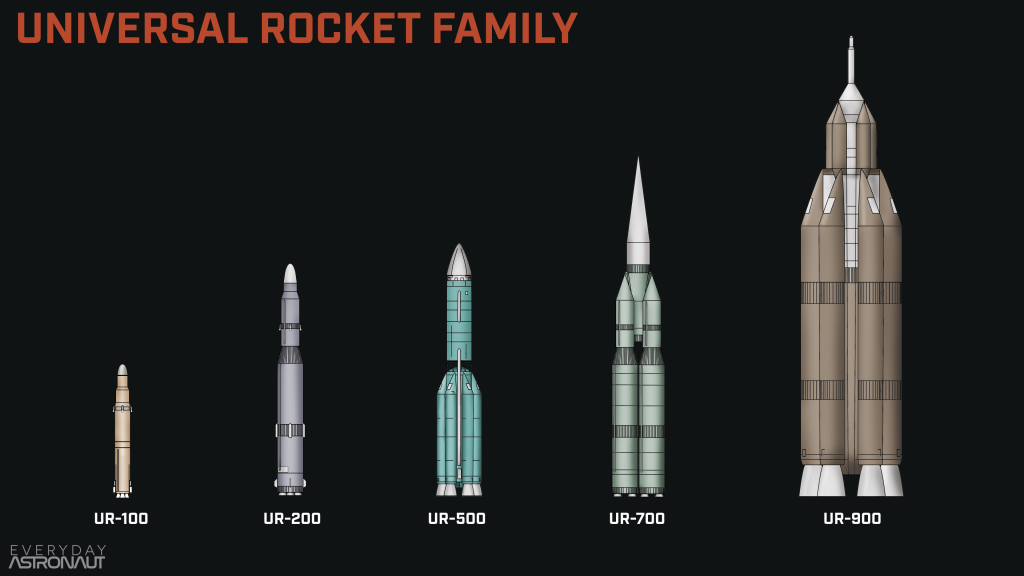
RD-268
For the MR-UR-100, Chelomey developed the RD-268, which was an upgraded version of the RD-263 and had slightly higher performance. Compared to the RD-263, the RD-268 did not have problems with combustion instability and did not require the dividers at the injector face. However, they remained inside the engine anyway. It had a thrust of 1,149 kN at sea level with an ISP of 296 s, and 1,239 kN in a vacuum with an ISP of 319 s. Unlike the RD-263, the RD-268 engine was fixed. The RD-263 engine could gimbal seven degrees.
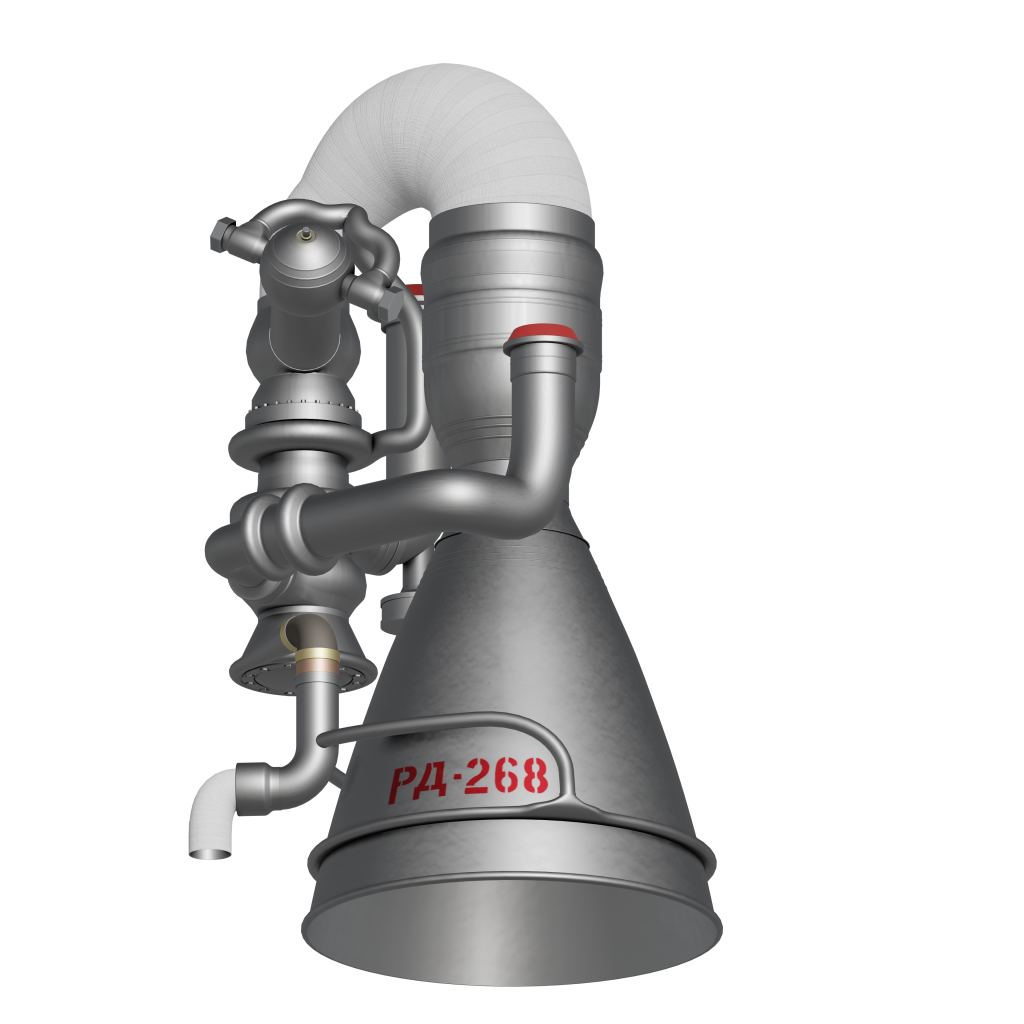
RD-0202, RD-0203, RD-0204
Chelomey also developed a larger rocket, the UR-200. For that, he turned to the OKB-154 to work on a closed cycle hypergolic engine, blending the S1.5400 and the RD-250. This is how they developed and built the RD-0202. Moreover, they hoped to use this engine across his entire lineup of universal rockets.
The RD-0202 consisted of three RD-0203 and one RD-0204, which included a heat exchanger to pressurize the fuel tanks. Although the RD-0XXX series tends to work on the upper stages, the RD-0202 was a sea level engine.

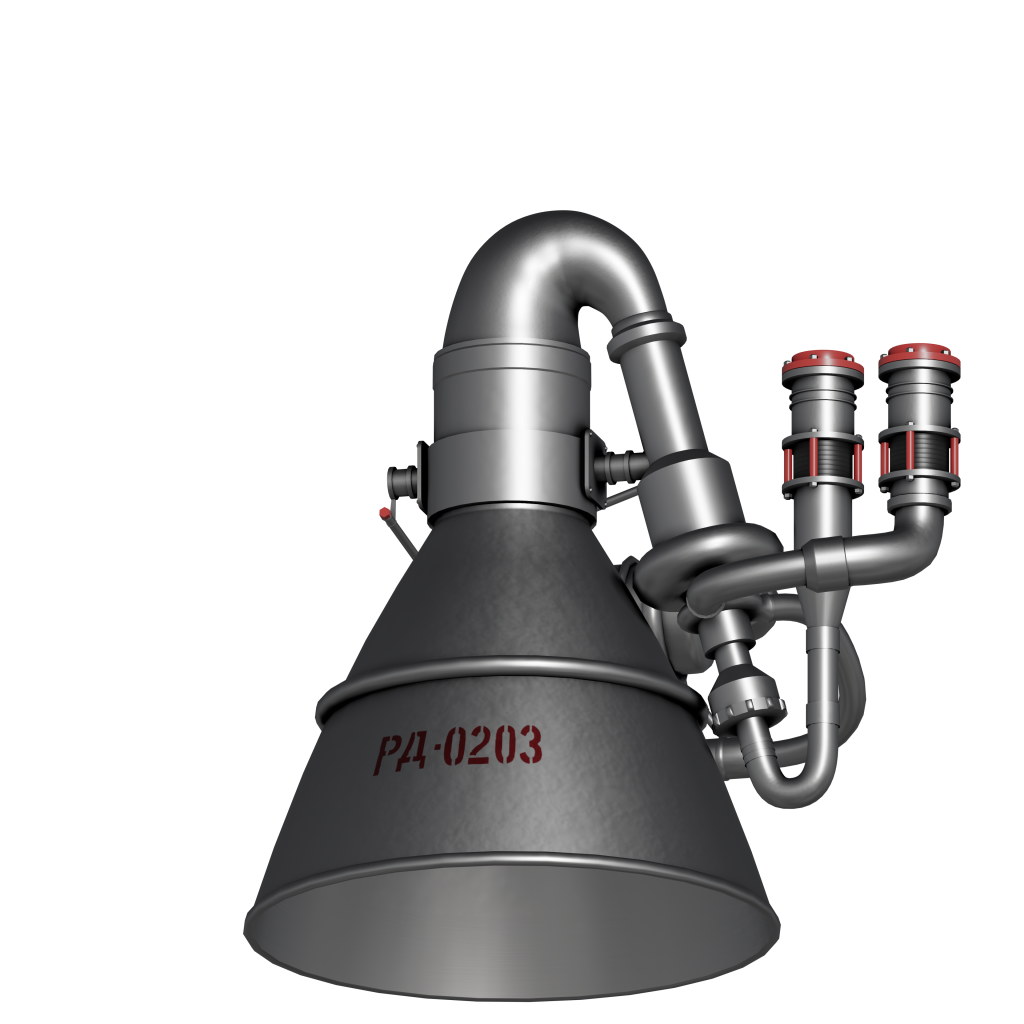
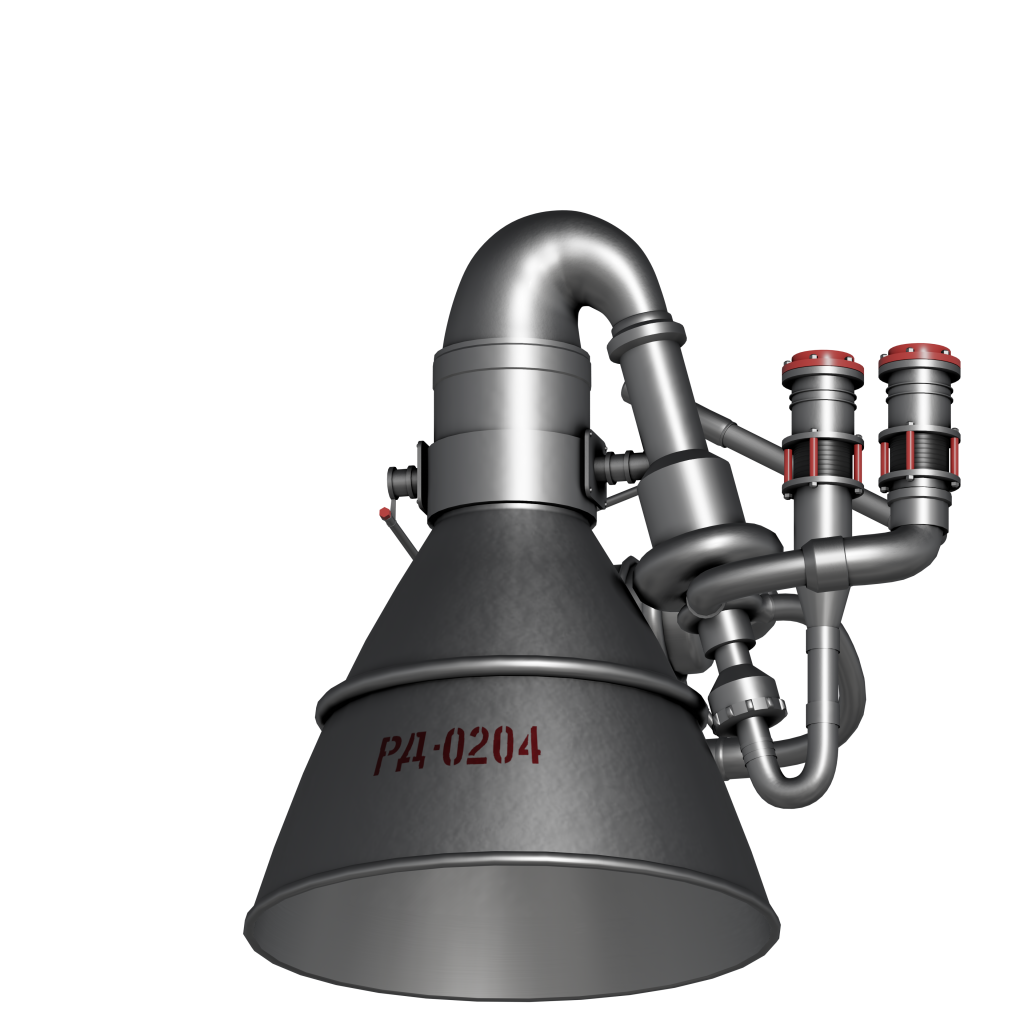
RD-0205, RD-0206, RD-0207
In addition, they built a vacuum optimized version of the RD-0202 – the RD-0205. It was a single RD-0206 based on the RD-0204, with an auxiliary vernier steering engine – the RD-0207.
The UR-200 only saw a few test launches, but the RD-0205 would wind up on the second stage of Chelomey’s next rocket, the UR-500. Originally, they designed this rocket to be an intercontinental ballistic missile capable of delivering 50-100 megaton warheads.
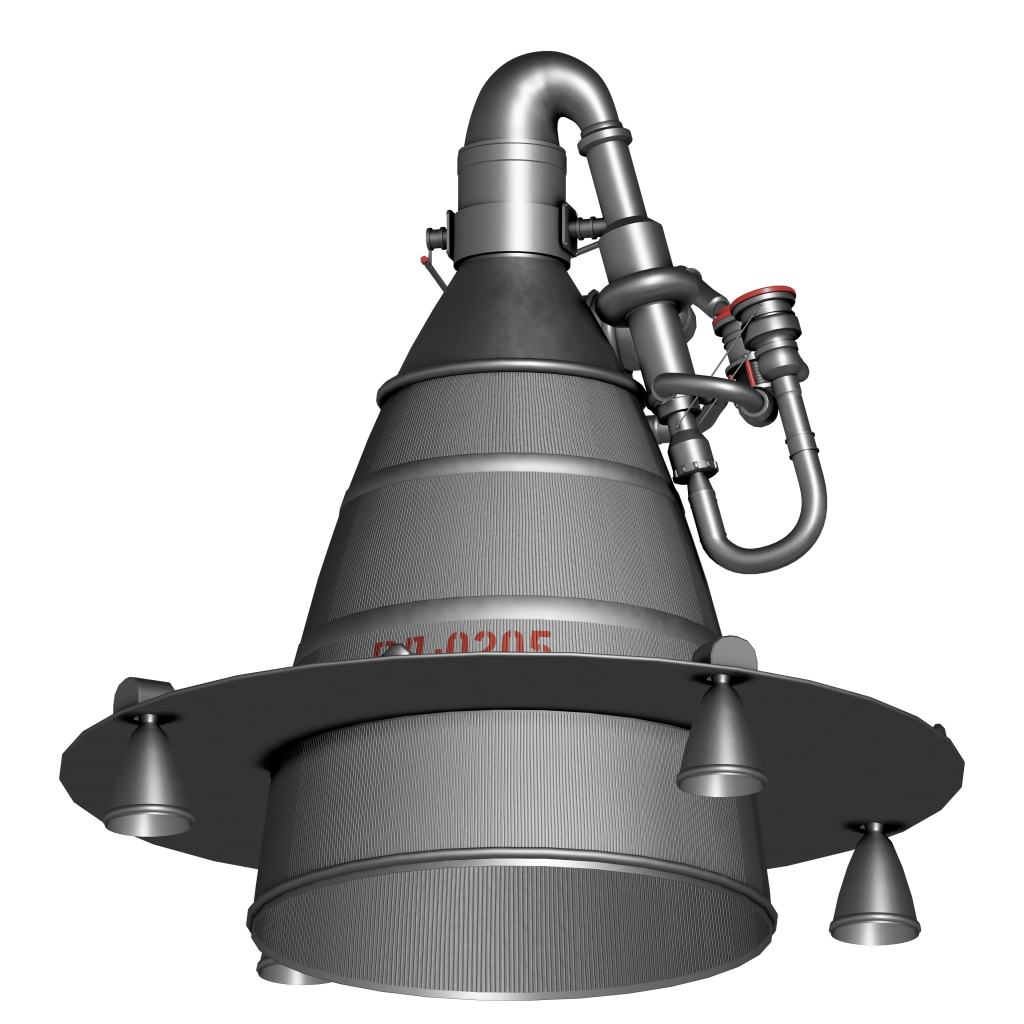
RD-253
For the UR-500 rocket, Chelomey and Glushko needed a closed cycle engine, more powerful than the RD-0202. As a result, they developed the RD-253 engine which was a huge leap forward in performance. For instance, it reached a record setting 147 bar in its main combustion chamber. This engine was capable of producing a thrust of 1,470 kN at sea level and 1,630 kN in a vacuum, with an ISP of 285 s at sea level and of 316 s in a vacuum. Moreover, it had an extremely high thrust-to-weight ratio.
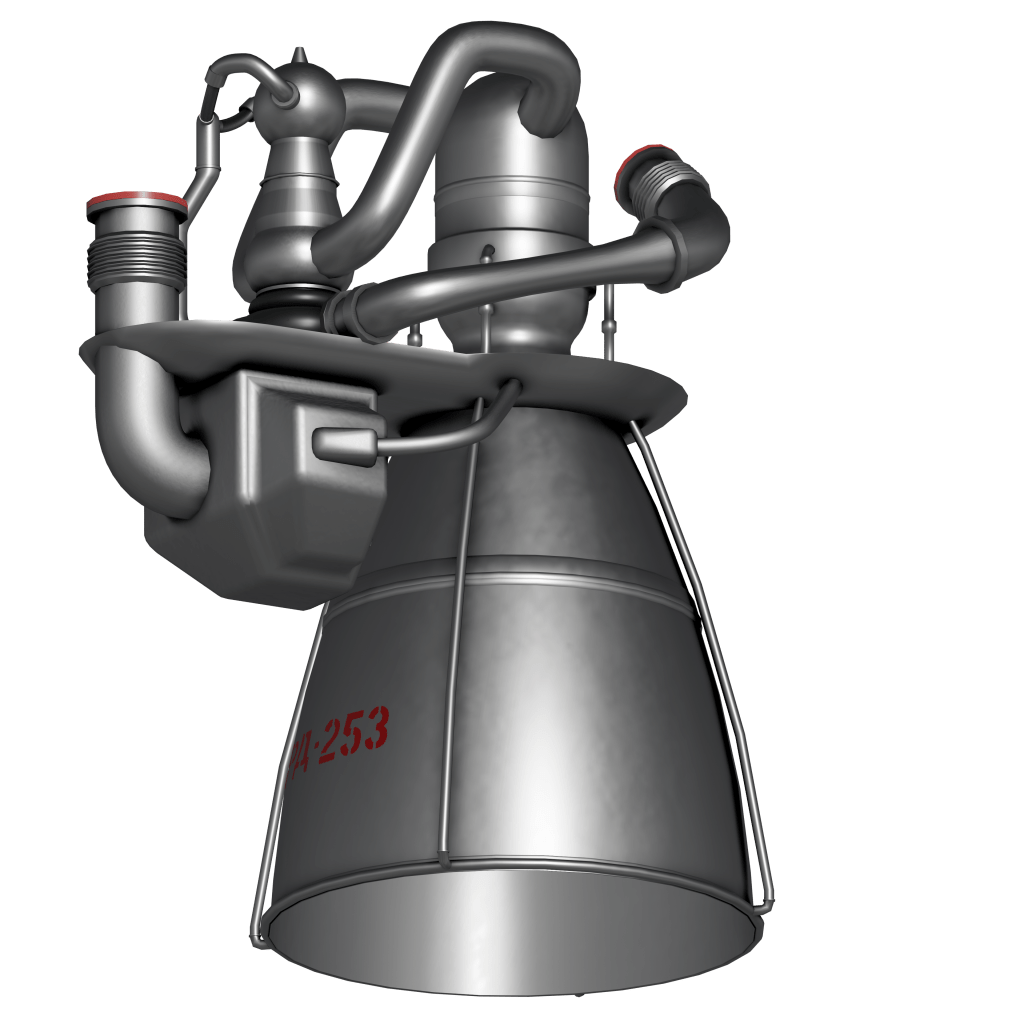
Fun fact, the RD-253 started development while the RD-250 was on the test stand right next to it at OKB-456 in 1964. They would take lessons learned from the troubled RD-250 to make the RD-253, getting it certified in a hurry.
RD-253 On The Proton Rocket
As a result, the RD-253 successfully flew on the first Proton on July 16, 1965. Then, it continued flying as either an upgraded RD-253F or RD-255 for a total of 314 times until its last launch on a Proton-K in 2012.

First Stage of Proton
RD-275, RD-275M
In 1995, the Proton saw an upgraded engine, the RD-275. They increased the chamber pressure to an impressive 157 bar. In turn, this raised its thrust to 1,590 kN at sea level and 1,744 in a vacuum, with its efficiency going up to 287 s at sea level and 316 s in a vacuum.
After that, in 2007, the RD-275 had another upgrade – the RD-275M, also known as the RD-276. The maiden flight of this engine was on the Proton-M. This engine again featured higher chamber pressure up to 165 bar. This allowed it to hit 1,672 kN of thrust at sea level and 1,832 kN in a vacuum, with an ISP of 288 s at sea level and 316 s in a vacuum.
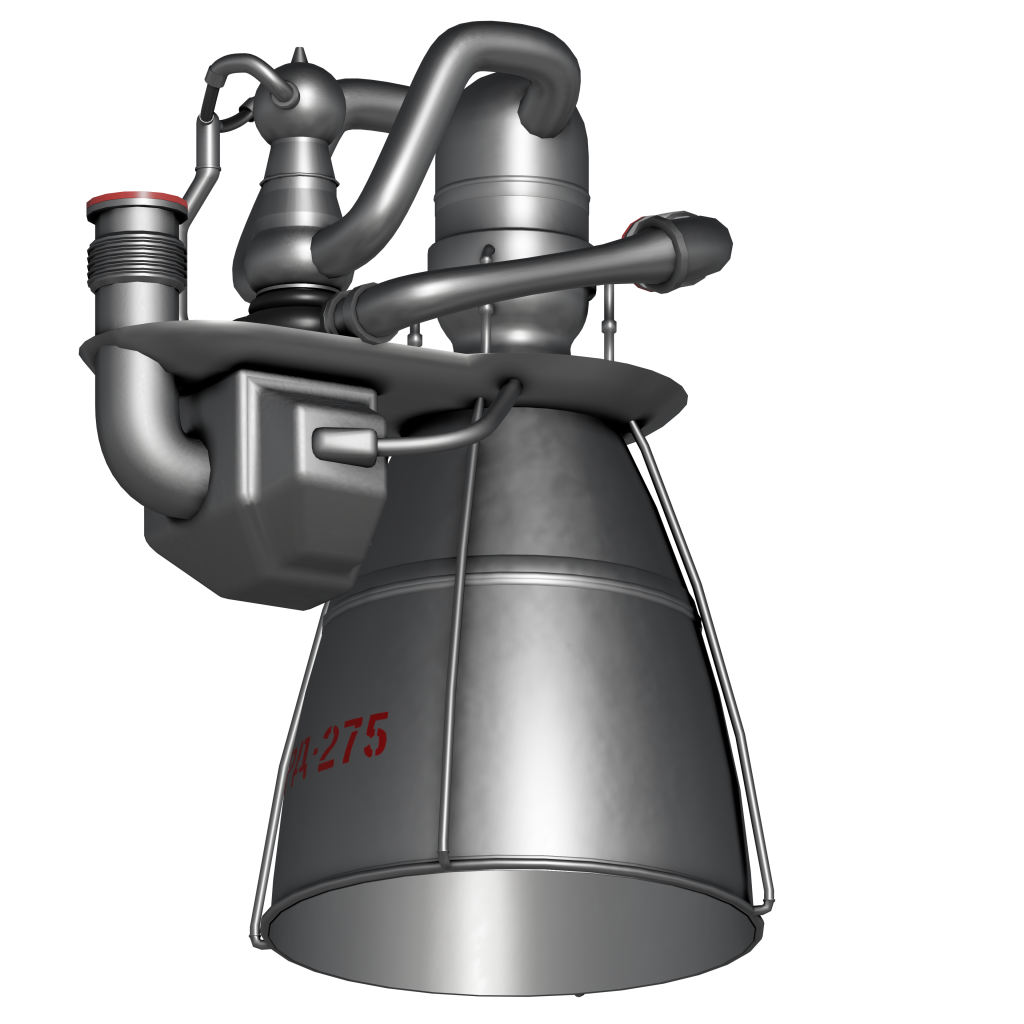

Unlike the four side boosters on Soyuz 2 rockets, the ones on Proton-M are not detachable. One interesting fact about the Proton-M rocket is that its design was greatly affected by the logistics. For example, the diameter of its oxidizer tank is the maximum that can be delivered to the pad by rail.
The first stage of the Proton consists of a central cylindrical part, which is an oxidizer tank, and six side fuel tanks. This way all engines were connected directly to the fuel and oxidizer tanks, with no need for any pipes through one of the tanks.
Second Stage of Proton
RD-0208/9, RD-0210/11
The second stage of the Proton was originally going to use a vacuum optimized version of the RD-0203/4 – the RD-0208/9. However, as they continued to develop and grow the UR-500, they created a set of new engines, the RD-0210 and RD-0211. Just like the other clusters of engines, there were three RD-0210s and one RD-0211 with a heat exchanger.
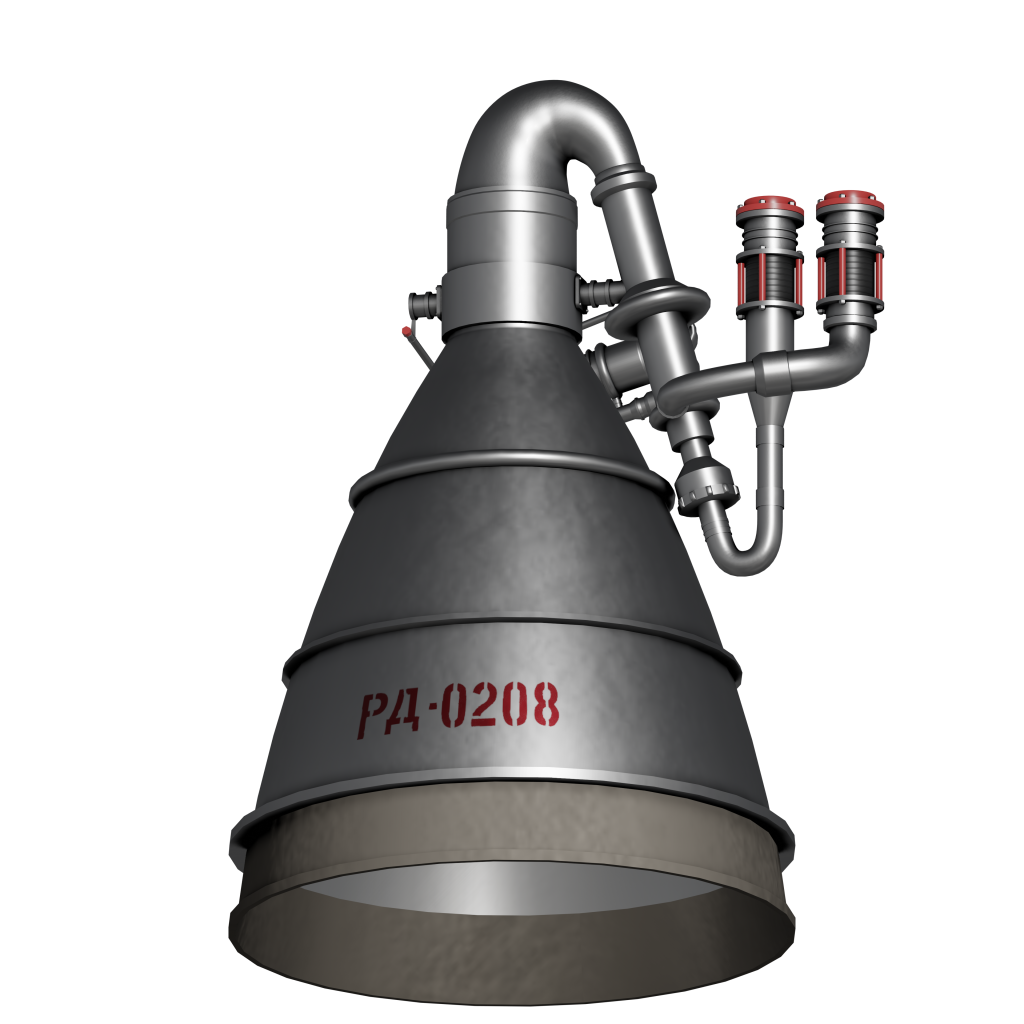
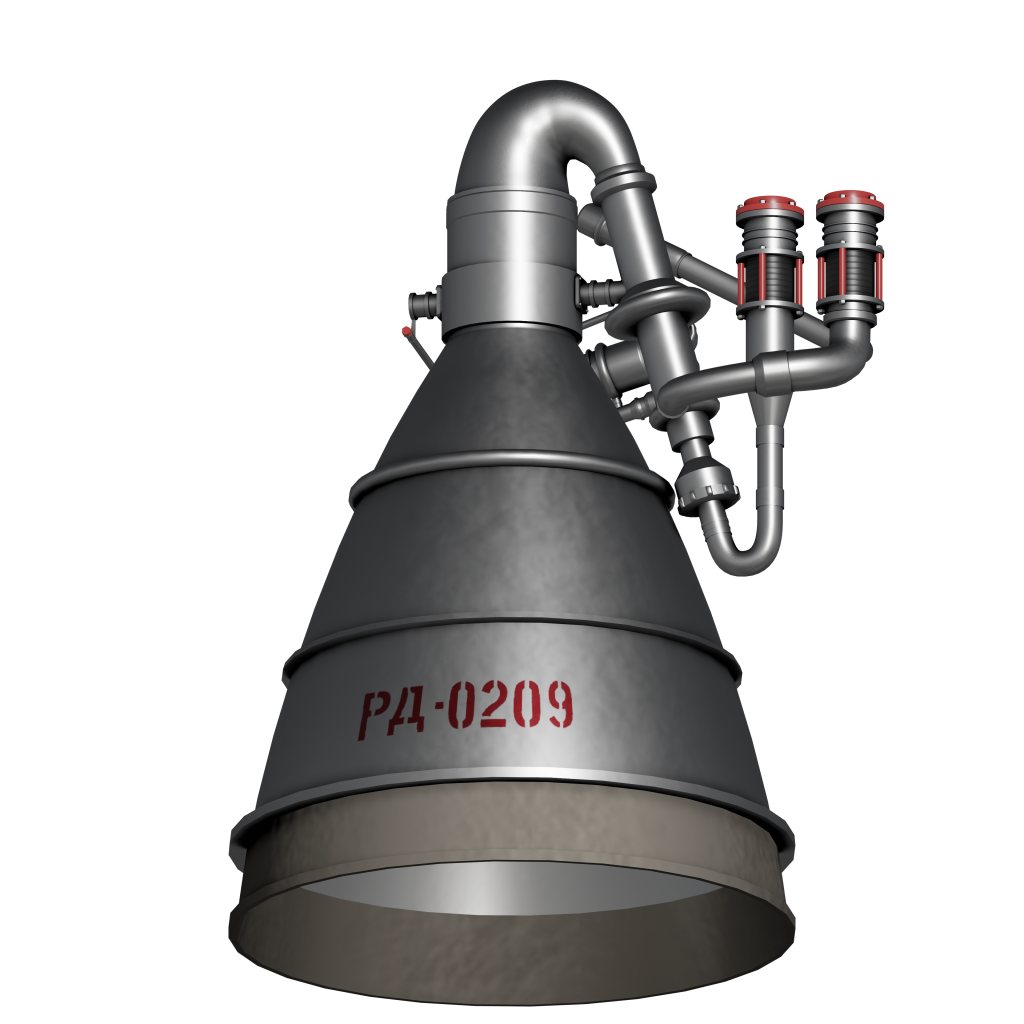

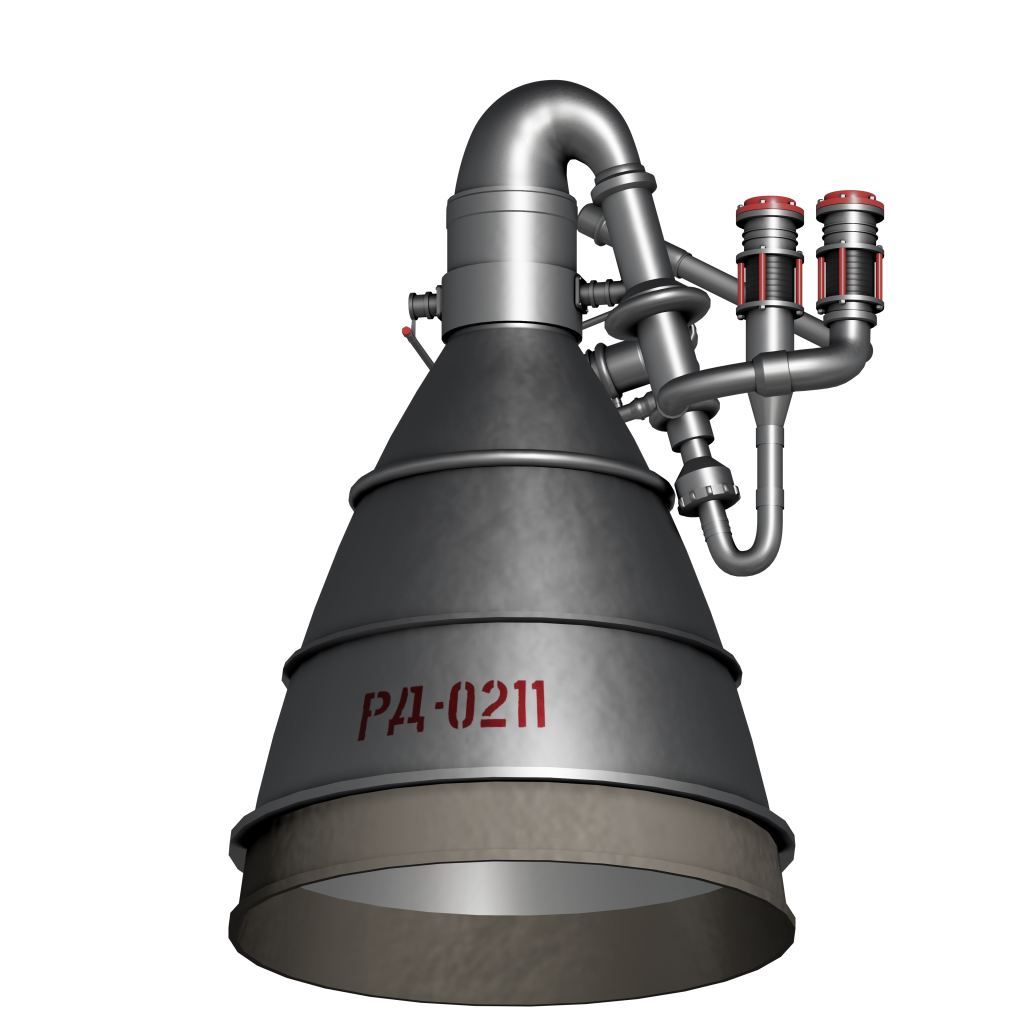
Third Stage of Proton
RD-0212, RD-0213, RD-0214
A third stage of the Proton featured an upgraded version of the RD-0205 – the RD-0212. This engine consisted of the RD-0213 main engine and a single RD-0214 engine with four vernier steering chambers.

Fourth Stage of Proton
RD-58, RD-58M, RD-58S, RD-58MF
Normally, the first stages of rockets run on LOx since it boils off so easily and the upper stages tend to work on hypergolic propellants. However, it was opposite for the fourth stage of the Proton-K and M, which ran on keralox. Despite boil off issues, this stage (Block D) has done 24 hour long missions.
The engine that powered that stage was the RD-58, a direct descendant of the S1.5400. Although it did not see its intended use as a lunar braking stage for the N1 moon rocket, it found itself on the Proton rocket in 1967. There were also upgraded versions of the RD-58: the RD-58M, RD-58S, and RD-58MF. The latter powers the fourth stage on the Proton-M and has an impressive ISP of 372 s. Meanwhile, the RD-58S runs on Syntin and powers the fourth stage on the Proton-K.
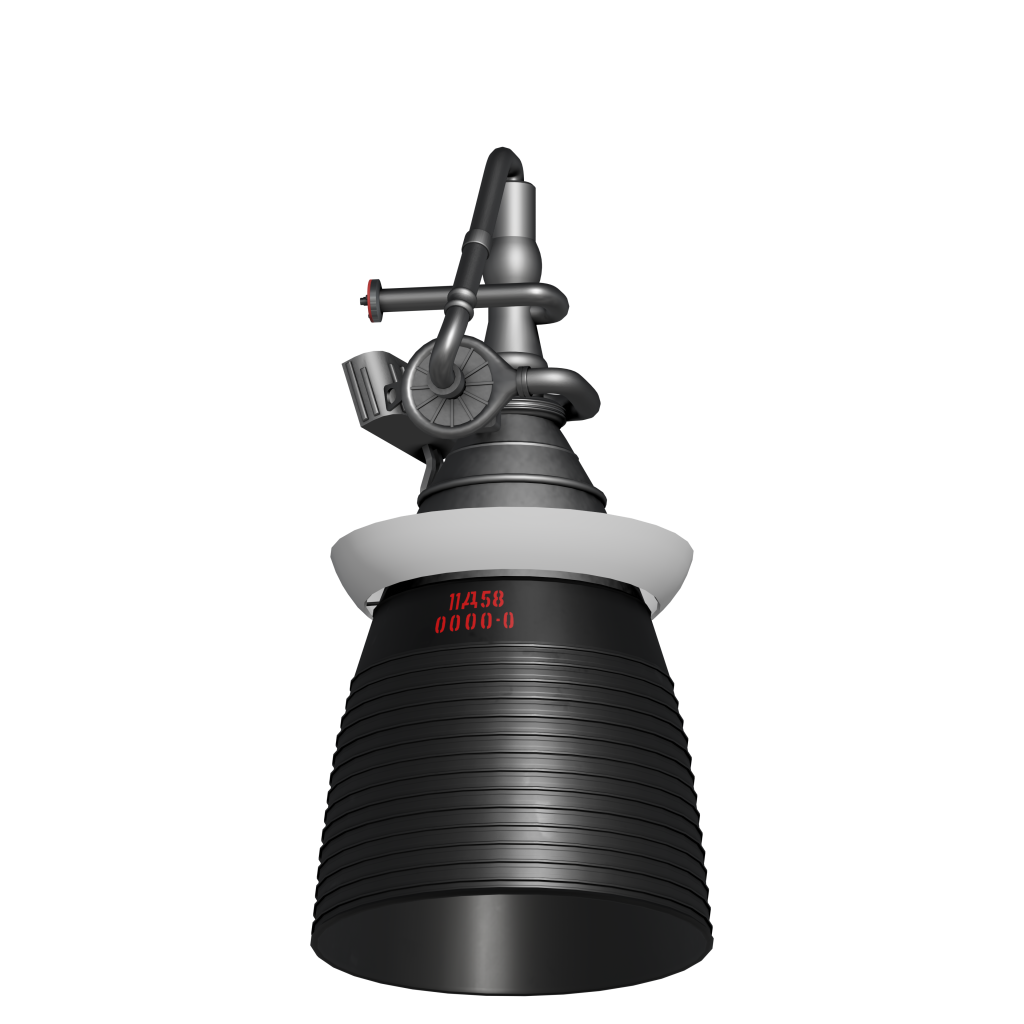
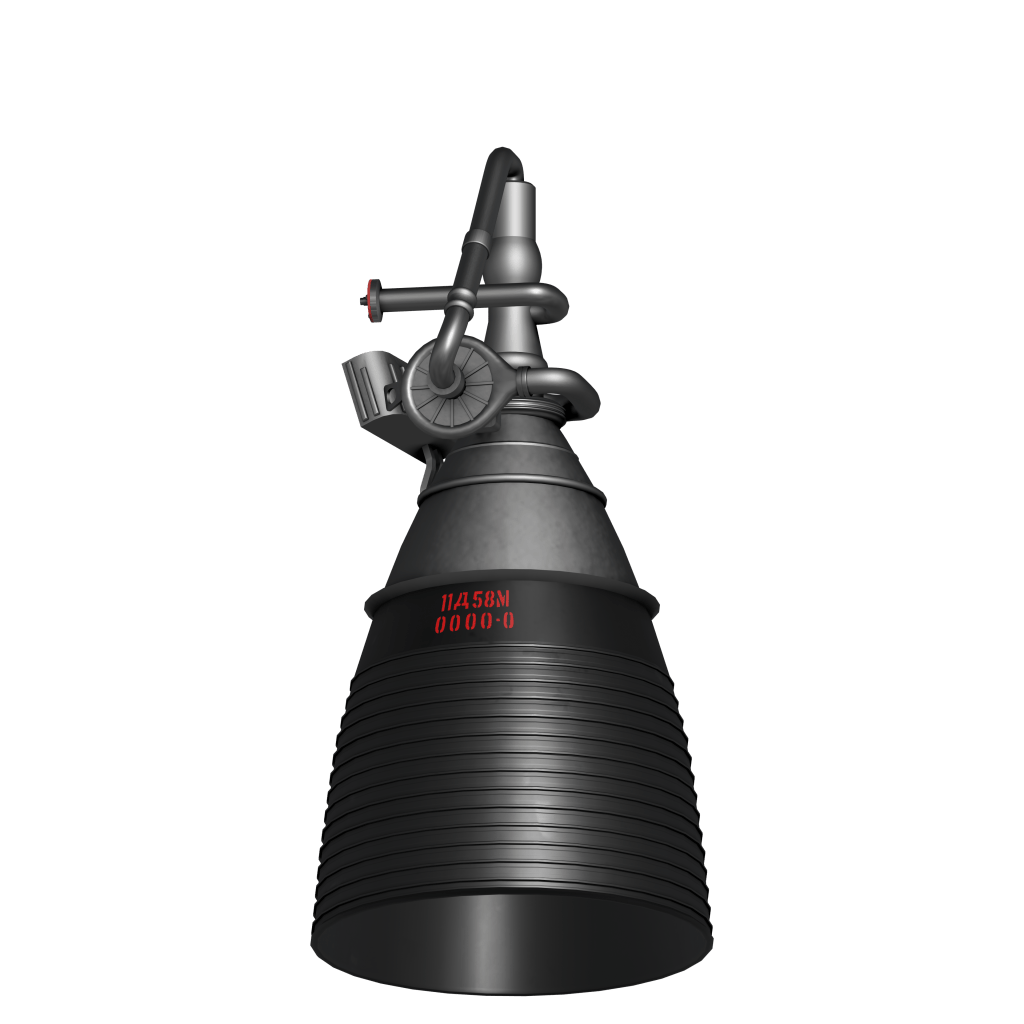


S5.98M
Moreover, there were the Briz-M and Briz-K hypergolic fourth stages that did not fly until 1999. These upper stages featured the S5.98M gas generator engine, capable of producing 19.6 kN of thrust and sibling to the S5.92 on the Fregat.
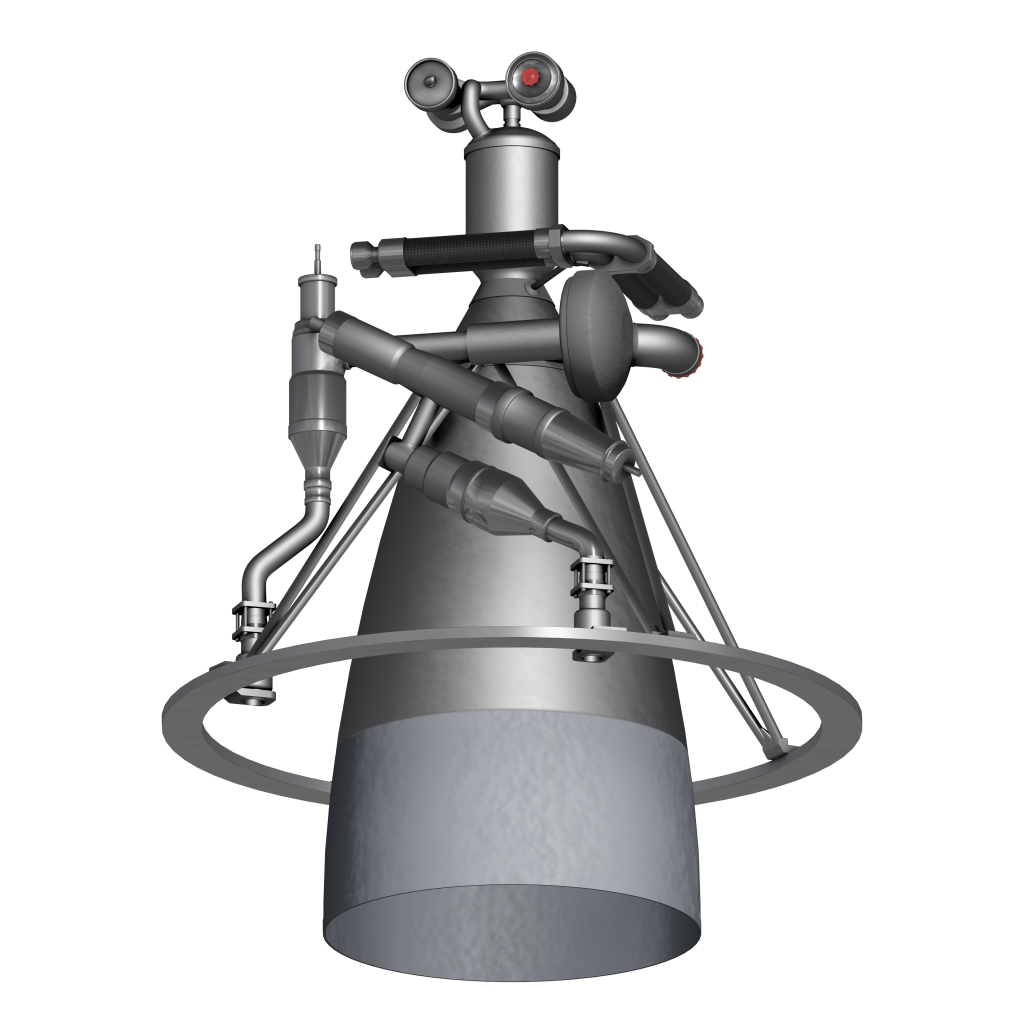
RD-270
There was one more engine that Glushko and Chelomei worked on for the UR-700 and UR-900 rockets that they originally were pushing instead of the N-1. The development of the RD-270 began in 1962. They took a lot of lessons learned from the RD-263/264 to make the RD-270.
This engine was a full flow staged combustion cycle engine, much like SpaceX’s Raptor engine. It would be the most powerful single chamber engine the Soviet Union ever built. In addition, it came very close to the F-1 engine that the US built for the Saturn V. It reached a thrust of 6,272 kN at sea level (ISP of 301 s) and 6,713 kN in a vacuum (ISP of 322 s). For comparison, the F-1 only achieved 263 s at sea level and 304 s in a vacuum. However, the F-1 was 15% more powerful than the RD-270 (6,770 kN at sea level and 7,700 kN in a vacuum).
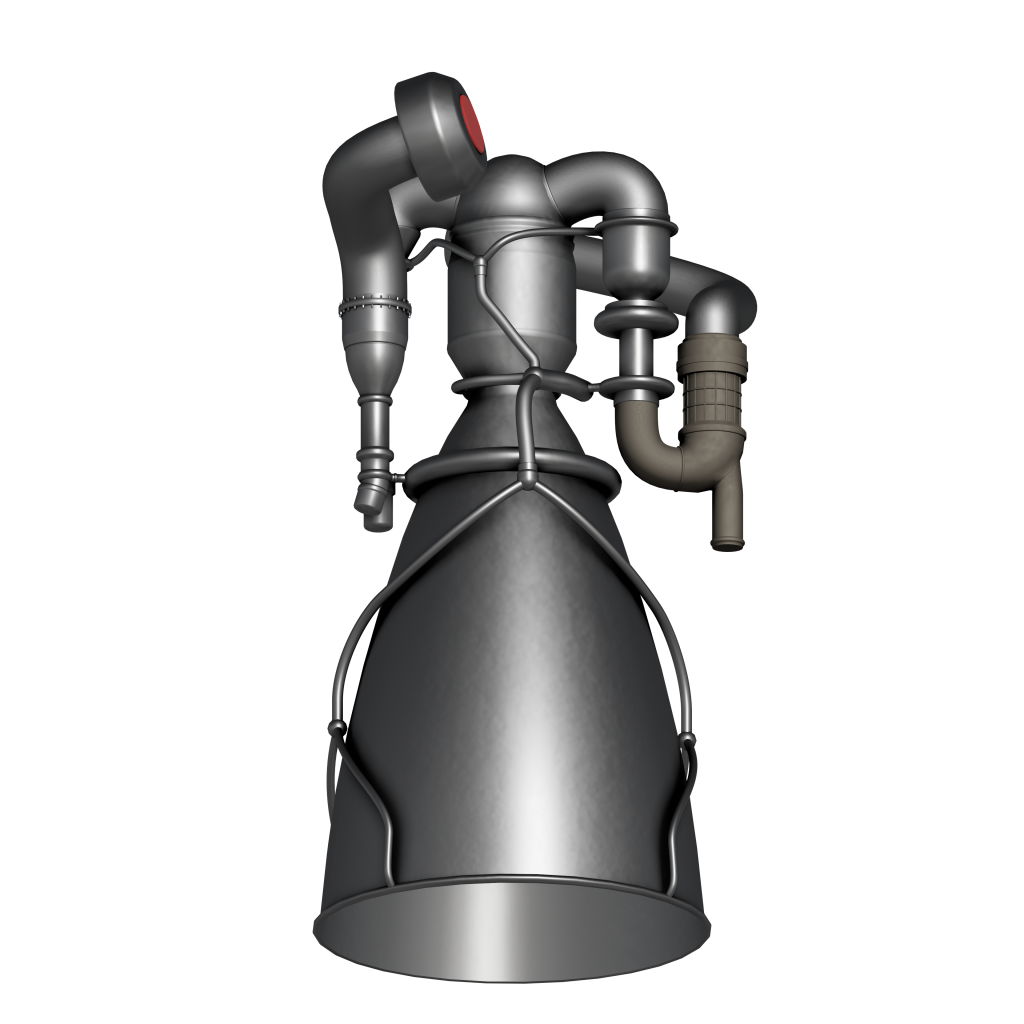
They test fired the RD-270 27 times, with one engine even seeing three fully successful full duration fires between 1967 and 1969. Moreover, they were developing the RD-270M version that ran on pentaborane, which was 15% more efficient. The RD-270 would have been the ultimate engine, and would likely still be today. Unfortunately, the engine was cancelled alongside the UR-700 when the N1 was chosen as the Soviet’s Moon rocket.
N1 Rocket Engines
NK-9
For the N1 moon rocket, Korolev had to design a powerful engine that would work on keralox and lift a rocket with a mass of almost 3 million kg. For that, he turned to the aircraft engine design bureau OKB-276 and its head Nikolai Kuznetsov. As a result, they developed the NK-9, an oxygen-rich closed cycle engine. After that, it became the basis for an upgraded version, the NK-15.
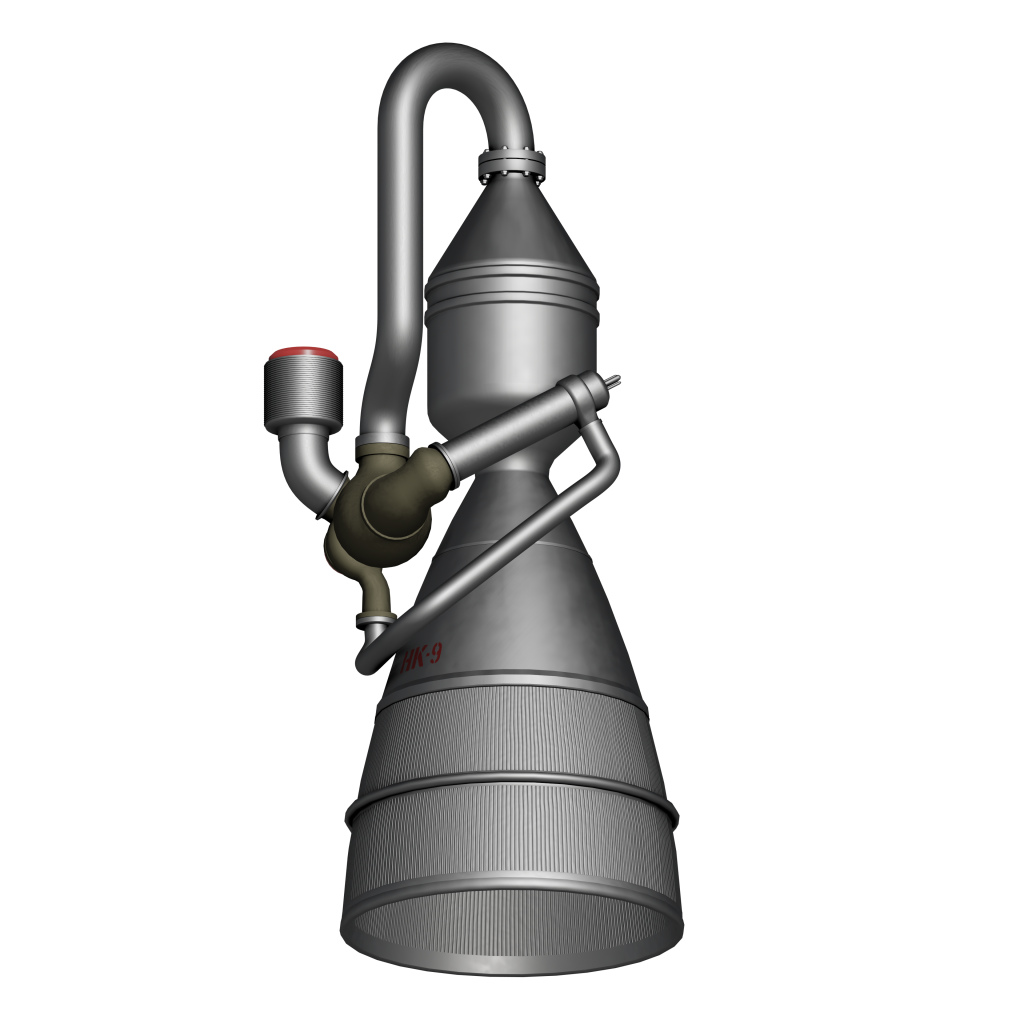
NK-15
The NK-15 achieved the thrust numbers necessary for the massive 17 m wide first stage booster – Block A. Block A featured 30 NK-15s, with 24 engines around the outer perimeter and 6 more on an inner ring. Each one of those engines could achieve 1,526 kN of thrust. Overall, 30 NK-15s offered 45 MN of thrust, about 30% more than the Saturn V’s 35 MN.
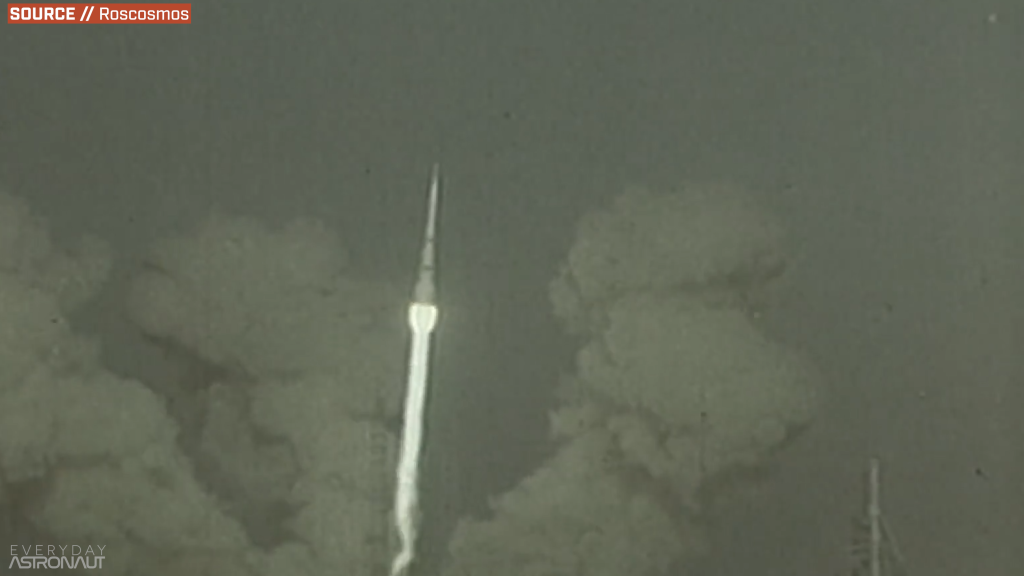
The engines steered the rocket via thrust differential and not through engine gimballing. Basically, in this scheme, the engines can provide more or less thrust on one side of the rocket to steer where it is going. It is a complex control scheme that relies on advanced flight computers, something that the Soviet Union did not have in the late 1960s. Alongside the rest of the avionics, their primitive KORD computer could not manage 30 engines that had very little testing. In addition, the NK-15 had many pyrotechnic valves in order to save weight and complexity. In other words, once they fired, they could not be re-fired.
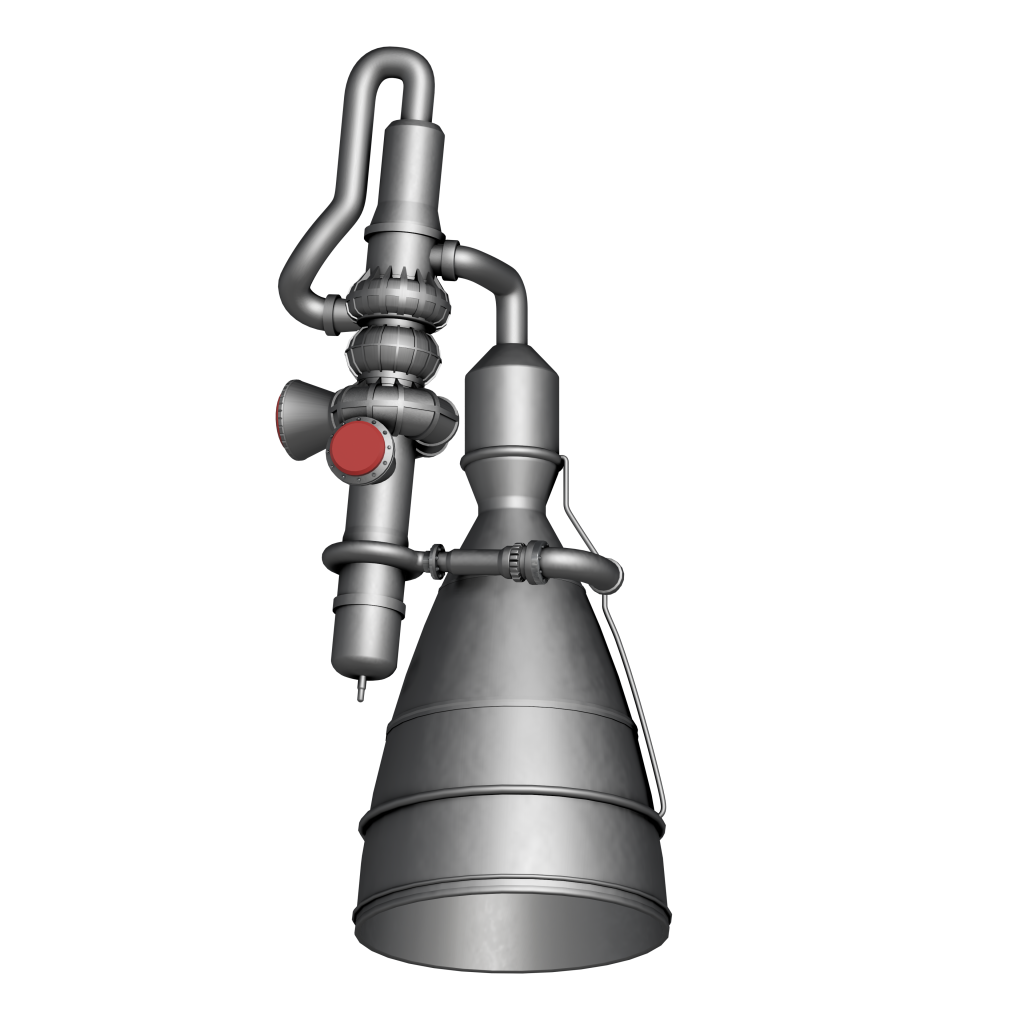
These flaws led to only about 1 in every 6 engines actually being tested before flights. Moreover, with none of the tested engines being put on the rocket, they were just a way to validate manufacturing and ensure there were no big flaws with the batches of engines.
Overall, there were four failed launch attempts, none of them made it through the first stage burn. However, the actual hardware of this rocket directly lives on until today.
NK-33
Before the N1 got cancelled there was an upgraded first stage engine in the works. The NK-33 featured simplified pneumatic and hydraulic systems that allowed to test and re-fire the engines. In addition, it had more advanced controls, upgrades to the turbo pumps and to the combustion chamber.
Moreover, there was also a vacuum optimized version of this engine, the NK-43. Even though it could reach 1,757 kN of thrust and had an ISP of 346 s, it never flew.
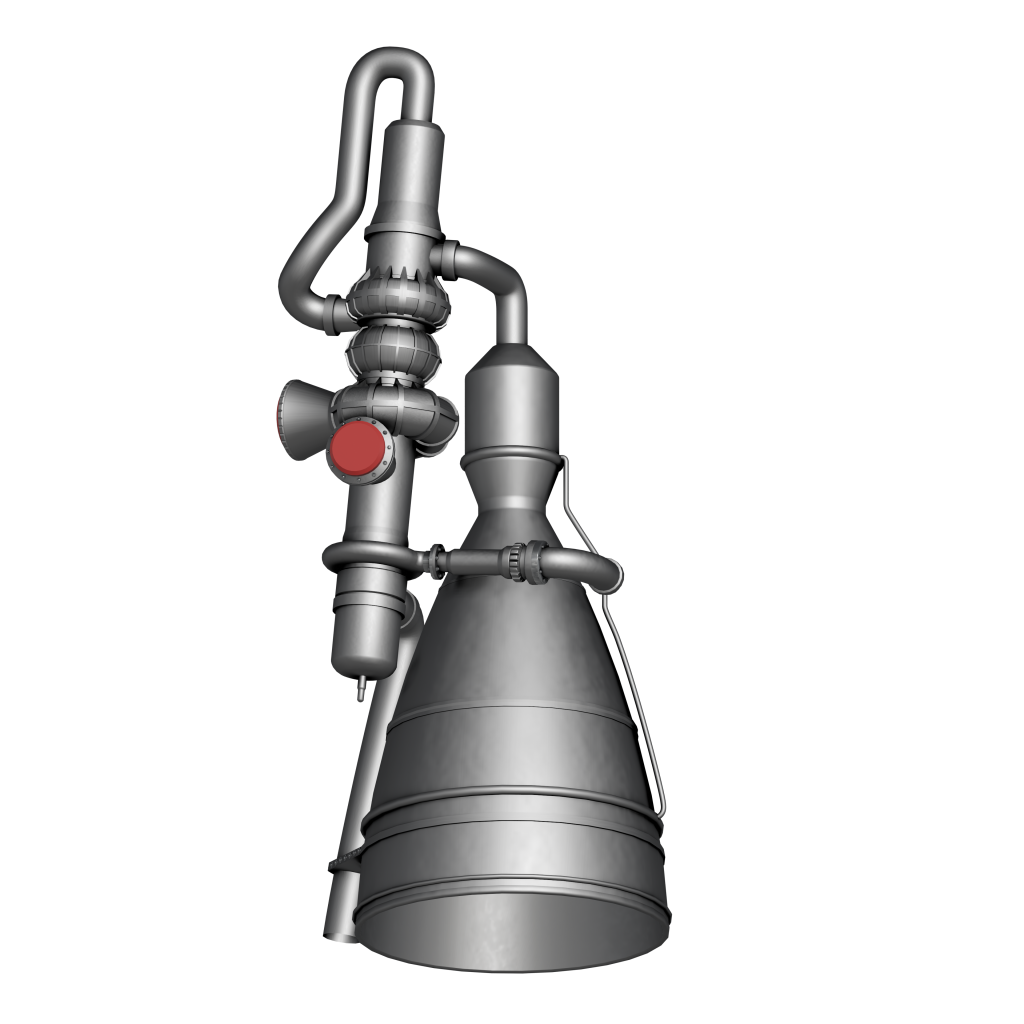
Luckily, the same fate was not true for the NK-33. Glushko, who at that moment was the head of the Soviet Space Industry, wanted to scrap all the engines and the two unflown N1s. However, he was not Kuznetsov’s direct boss and Kuznetsov chose to ignore his orders. Kuznetsov then secretly took about 80 completed NK-33s to a warehouse. They remained there for nearly 30 years until the collapse of the Soviet Union. Eventually, rumours of the engine’s existence and capabilities reached the United States. US engineers could not believe the performance numbers of these engines. Fortunately for the former Soviet engineers, they got the chance to show their work off the rest of the world.
They shipped an NK-33 to the United States in the early 90’s so Aerojet could put it through its paces. The old engines still performed exactly as designed!
NK-33 on the Antares rocket
Despite being test fired in 1995, it saw its first flight only on April 21, 2013, in the United States. The first rocket to utilize the Soviet NK-33 in flight was the Antares rocket.
Aerojet refurbished NK-33s and created a version called the AJ-26. This version had a few control changes and slightly upgraded maximum throttle settings. It went on to fly 4 times successfully on Antares. However, on the 5th flight on October 28, 2014, for NASA CRS Orb-3, it experienced a failure only a few seconds into flight. The LOx turbopump exploded and led to a fire and complete loss of power, resulting in the rocket falling right back onto the launch pad. This led Orbital Sciences, now Northrop Grumman, to look for a more reliable replacement for their Antares rockets. From all options, they chose another high performance Russian engine, the RD-181.
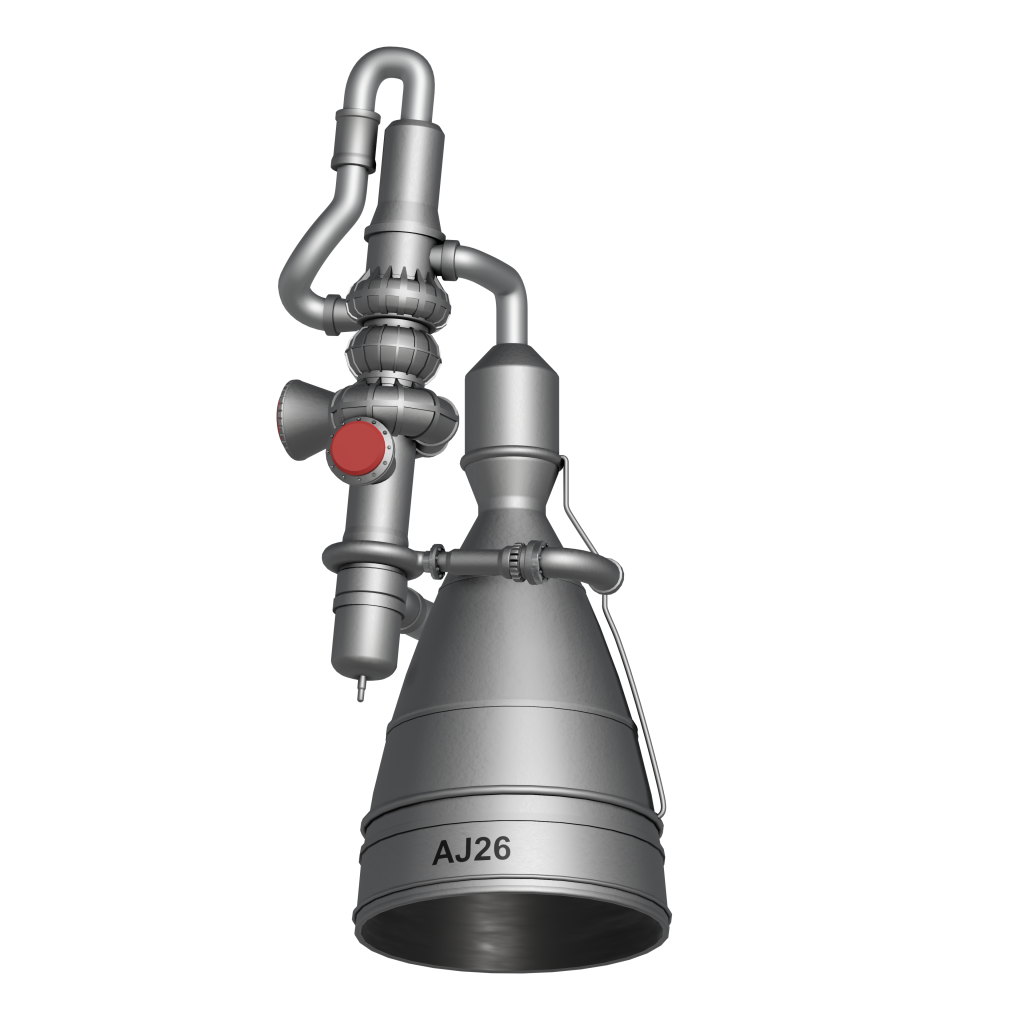
NK-15V
The second stage, or Block B, featured 8 vacuum optimized versions of the NK-15 – the NK-15V. This engine had an extended nozzle and air-start capabilities and could hit 1,758 kN of thrust in a vacuum, with an ISP of 325 s.
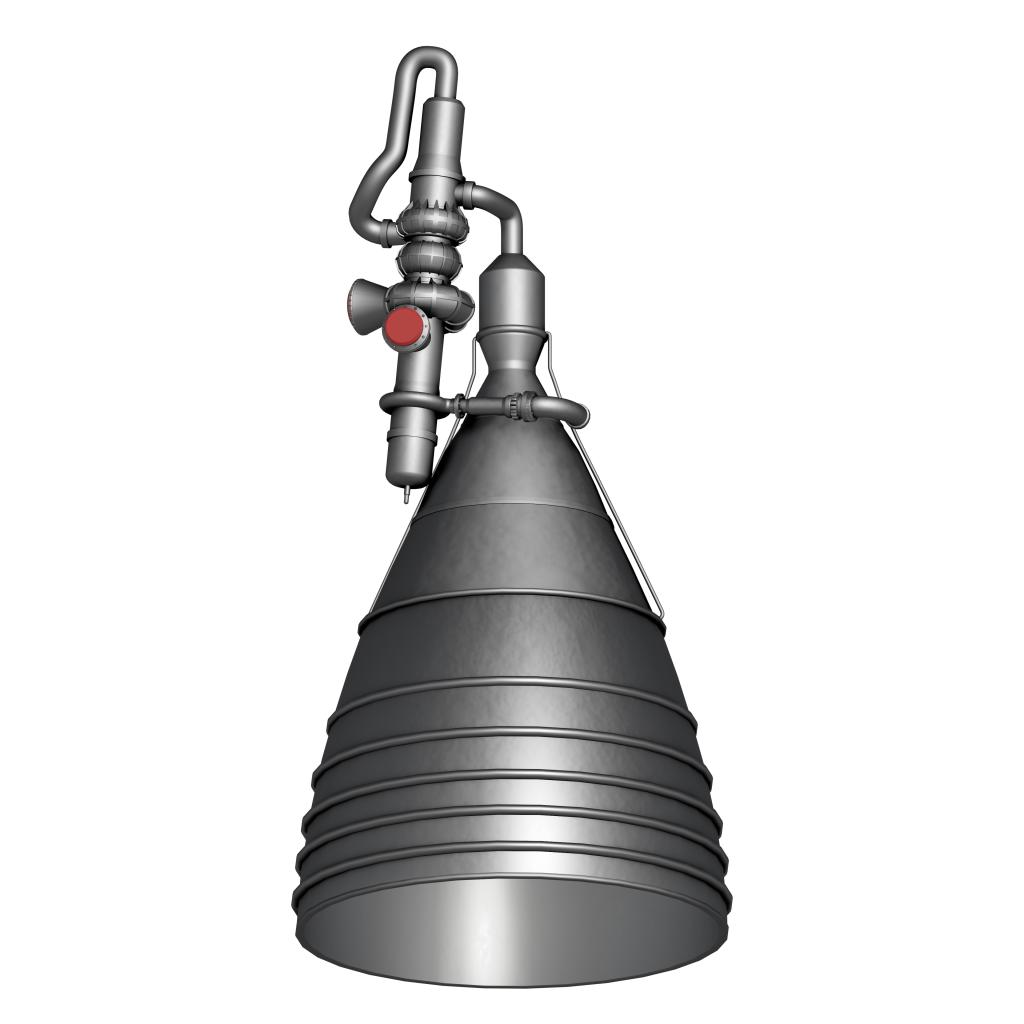
NK-19
The third stage, or Block V, used 4 NK-19s, each with about 450 kN of thrust and 346 s of ISP. These were direct descendants of the NK-9 that Korolev and Kutnezov initially developed.
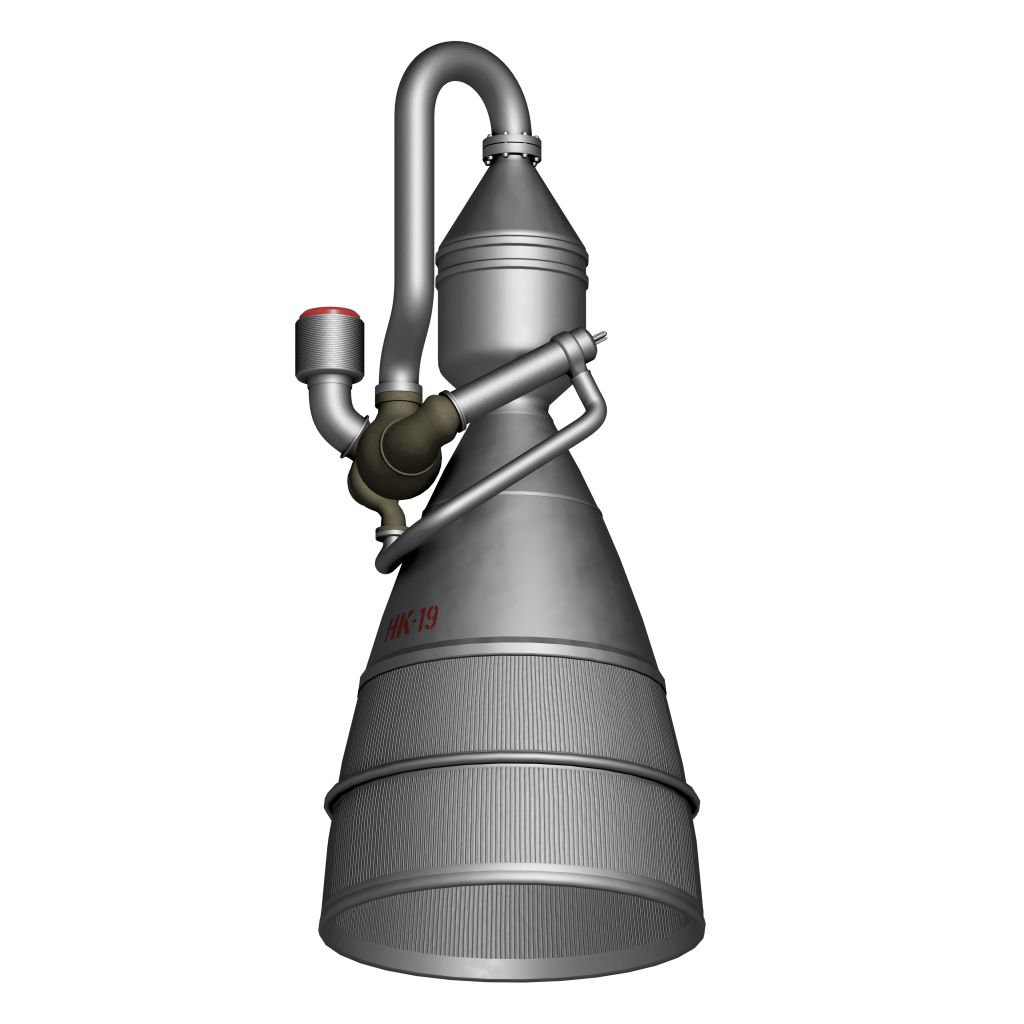
NK-21
Lastly, there was the fourth stage or Block G that was to perform the translunar injection. This stage featured a single NK-21, which again was a direct descendant of the NK-9. It had about 392 kN of thrust and 346 s of ISP. All of the engines on this rocket ran on keralox.
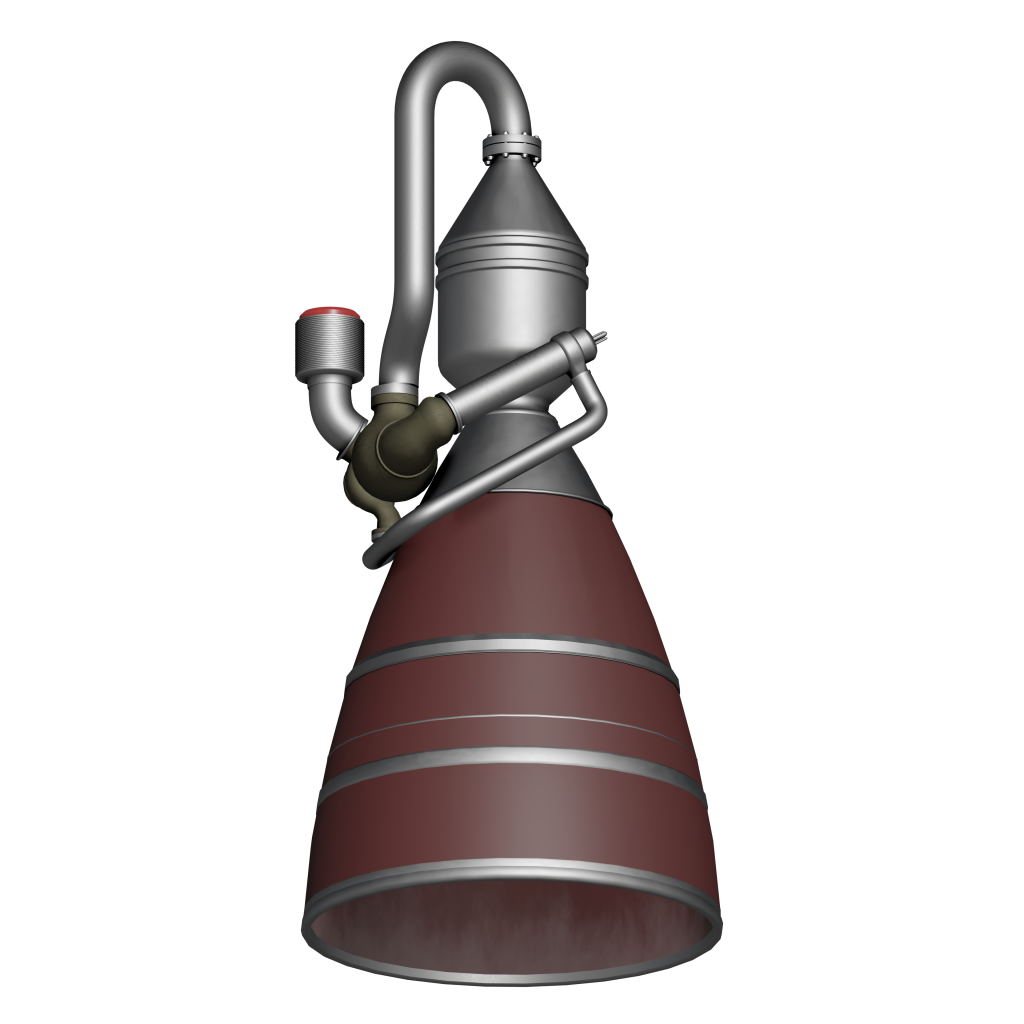
RD-58
Finally, there was the RD-58 on the Block D – the final stage that was intended to be a lunar braking engine. This is similar to the US’ Apollo service module that was used to slow the vehicle down and place it into lunar orbit.

RD-56, RD-57
Moreover, there were a lot of upgrades in the works for different future N1 variants – the N1F and N1M. However, these plans were later abandoned due to the launch failures of the original N1s. Despite that, many engines were fully developed, including high performance hydrolox upper stage engines: the RD-56 and the RD-57.
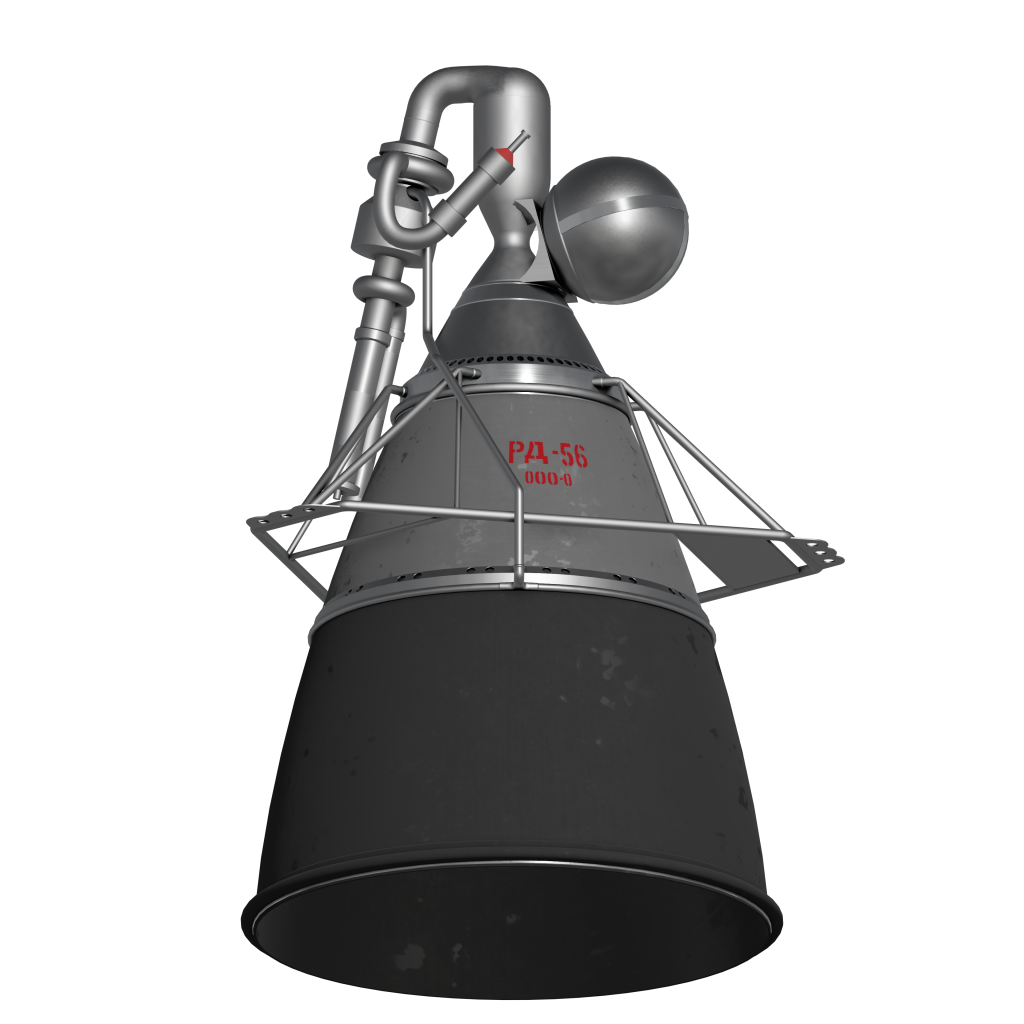

Those were the first hydrolox engines to be built in the Soviet Union. The RD-57 could reach 392 kN of thrust with an ISP of 457 s in a vacuum. The RD-56 was developed around the same time, was much smaller, and offered 70 kN of thrust and an ISP of 462 s.
Energia / Buran
The Energia rocket was the world’s second most capable launch vehicle after Saturn V. In fact, it was even more capable than the N1. Like a lot of other things in the Soviet Union, it was developed in complete secrecy.
The Soviet Union began work on the Energia rocket and the Buran orbiter in 1976. Their goal was to gain super heavy lift capabilities and to match the capabilities of the United States’ Space Shuttle.
RD-170
Development
For this rocket, Glushko had a challenge to develop the most powerful liquid rocket engine ever made. First, he had developed the RD-150 engine, which was a cluster of 6 RD-151s, for a project in 1974. This engine never flew but Glushko used its design as the blueprints for the RD-170, scaling it up from one chamber to four. Moreover, he took a lot of experience and knowledge from the RD-270 and the RD-268 to solve problems with the RD-170. Despite that, the RD-170 proved to be quite problematic. For instance, one time an engine blew up so energetically that it sent parts of the turbopump assembly flying several km away.
In fact, this engine was so troublesome that there were proposals to replace it with the NK-33. However, this did not happen, because Glushko ended up being successful in hitting the target performance.
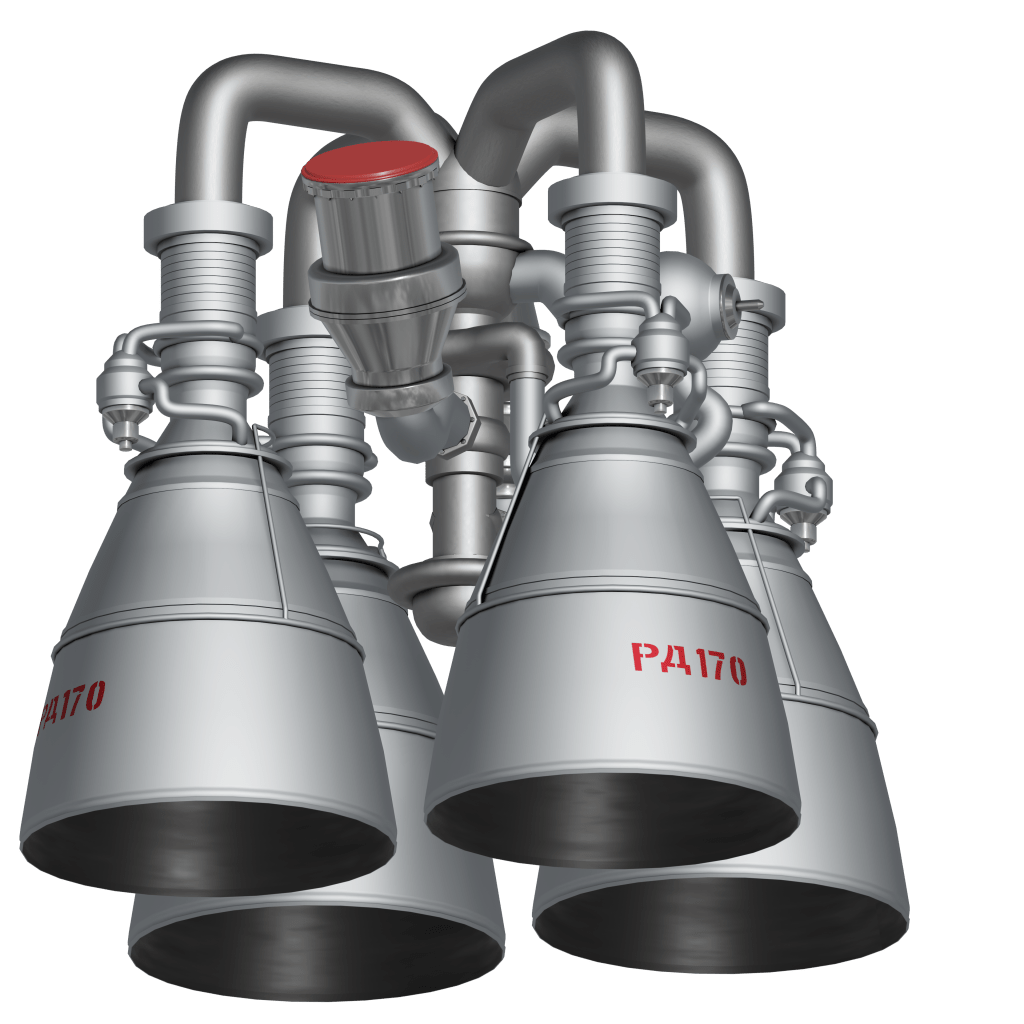
Characteristics
The RD-170 engine could achieve 7,257 kN of thrust and 309 s of ISP at sea level and 7,904 kN of thrust and 337 s of ISP in a vacuum. Overall, it saw only two flights on the Energia booster, once with the classified Polyus space station and once with the Buran Space Shuttle.

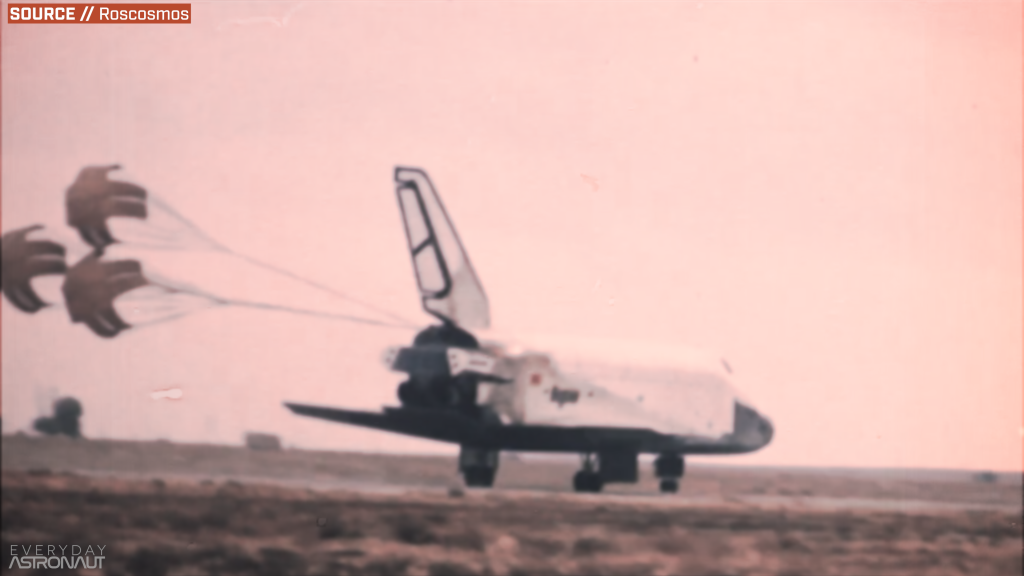
The Energia rocket consisted of four boosters, each with a single RD-170. These were strapped onto a massive hydrogen and oxygen tank, almost like the Space Shuttle’s solid rocket boosters were strapped to the external fuel tank. In turn, the large center tank of the Energia rocket featured four engines. This is where the big difference between the US’s Space Shuttle and the Energia/ Buran was. The Space Shuttle had its main engines attached to the orbiter so they could be reused. The Energia’s center tank was the biggest single tank the Soviet Union built off site of the launchpad, which required it being flown in on the back of the Myasishchev M-4 bomber.


There was a plan to reuse the RD-170 up to ten times. For that, they intended to first recover the side boosters with parachutes and then letting them softly touch down using solid retro rockets. There were even plans for the boosters to have foldable wings and fly back to a runway for the Energia 2 version. It means that the Energia/ Buran system could have been a fully reusable launch vehicle.
RD-0120
The engines on the core of the rocket were heavily inspired by the United States’ Space Shuttle Main Engine – the RS-25. The RD-0120 was a fuel rich closed cycle hydrolox engine. Moreover, it happens to be the most powerful single chambered engine to ever fly from the Soviet Union. The RD-0120 could reach 1,526 kN of thrust at sea level and 1961 kN in a vacuum, with an ISP of 353 s at sea level and 455 s in a vacuum.
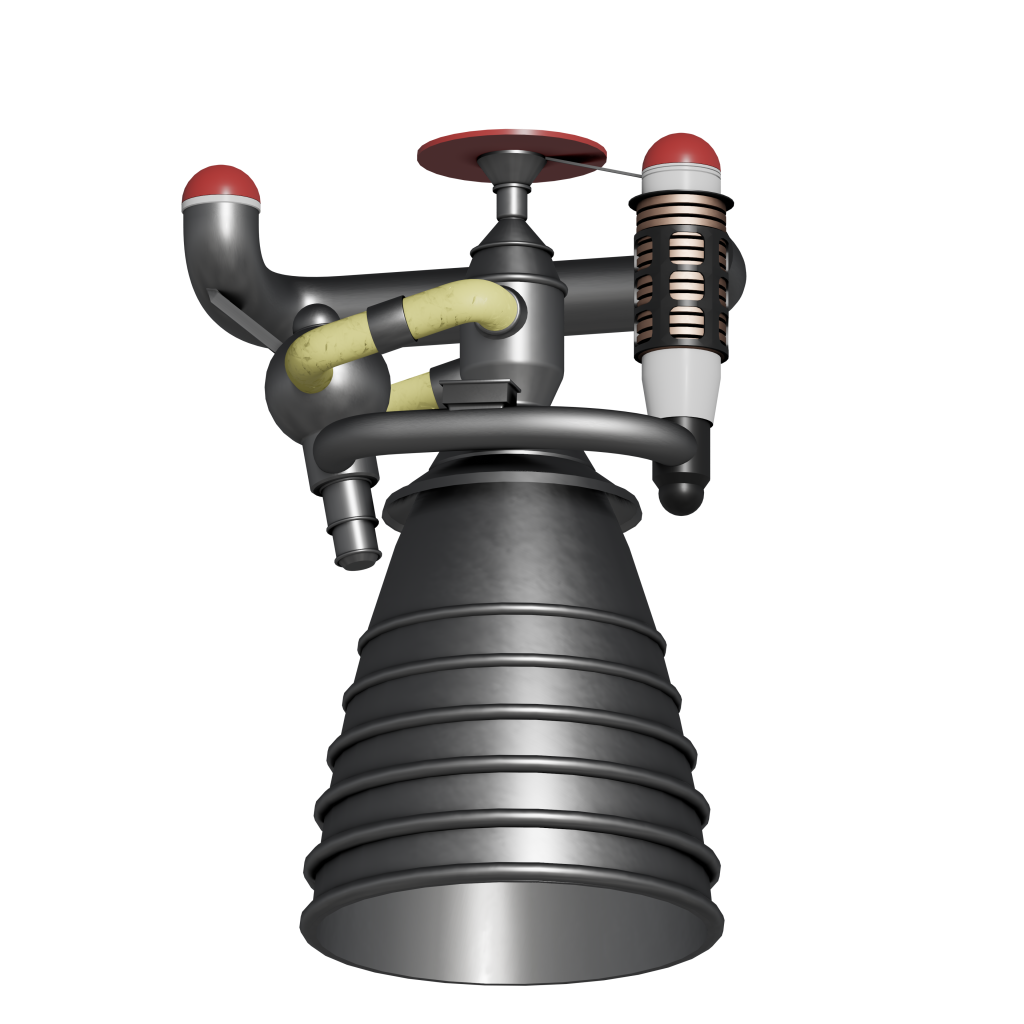
RD-58M
Lastly, the Buran shuttle itself featured a pair of modified RD-58Ms that were called DOMs, the Russian acronym for orbital maneuvering engines. Those engines could be restarted many times, ran on synthin, and had an impressive ISP of 362 s.

RD-171
Although the RD-170 only flew twice on the Energia, its twin engine, the RD-171, went on to fly over 54 times. It first saw flight on the Zenit rocket in 1985. The biggest difference between the RD-170 and the RD-171 is that the RD-170 could swivel its four chambers on only one axis, while the RD-171 could swivel on two. This provided much better control, negating the need for any additional vernier thrusters. Unlike the RD-170, the RD-171 is not crew rated.
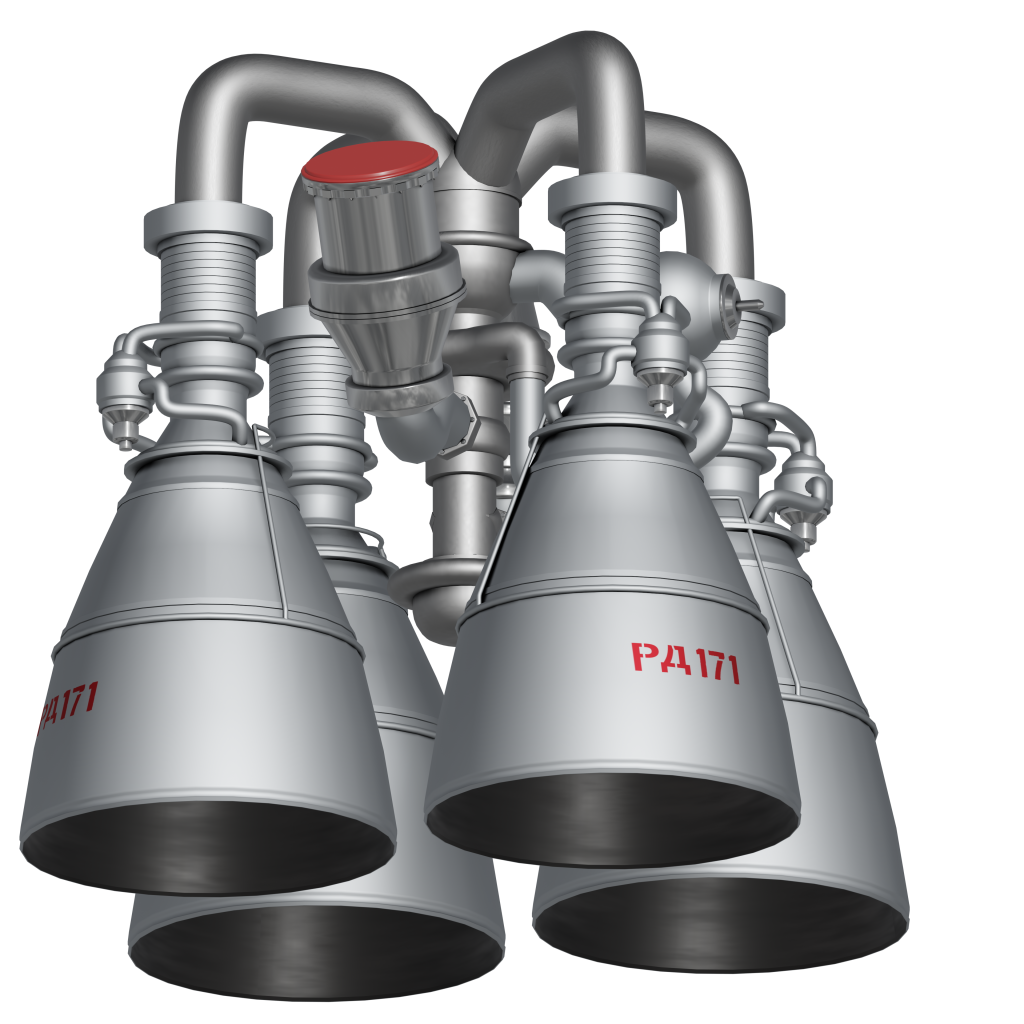
RD-171M
There was another version of the RD-171, the RD-171M, which had a lower mass and increased reliability. It went on to power the Zenit 3SL rockets 30 times.


RD-120
The second stage of the rocket featured the RD-120, a closed cycle keralox engine, which could hit 350 s of ISP. It was a fixed engine paired with an RD-8, which is a quad chambered vernier engine that provided control authority. The RD-120 wound up being the first Soviet designed engine fired in the United States in 1995 by Pratt & Whitney who considered purchasing them.
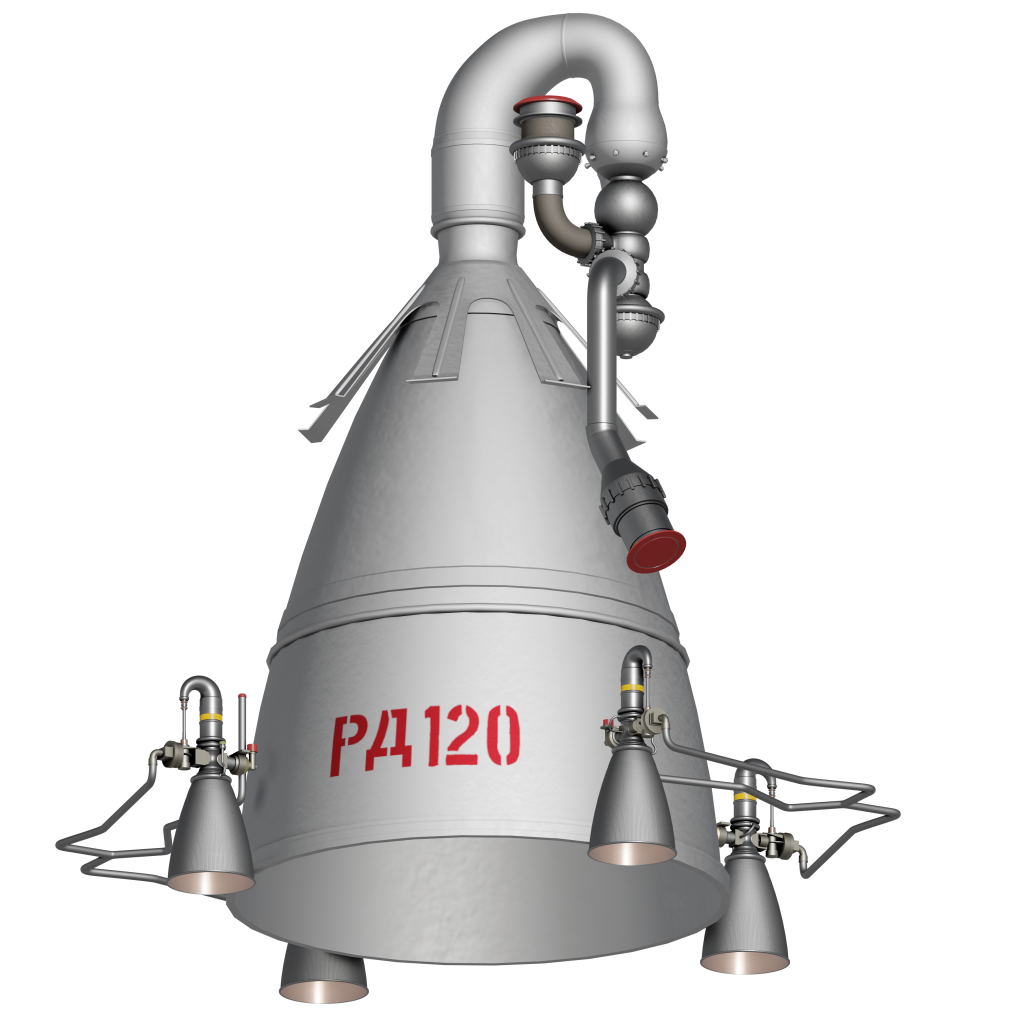
RD-58, S5.92
The third stage of the Zenit rocket had two different engine options. The Block DM-SL used the RD-58 that was the direct descendant of the original S1.5400 engine. The Fregat-SB third stage featured the S5.92 hypergolic gas generator engine.


To date, the Zenit launch vehicle flew 84 times with its last flight in 2017. 36 of those launches were undertaken from an offshore oil rig launch platform, much like SpaceX wants to do with their Starship.
Soviet Engines Outside the Soviet Union
RD-180
Even though the Zenit rocket stopped flying in 2017, the RD-170’s legacy lives on today. In fact, it became the basis for three more very notable engines, the RD-180, RD-181 and RD-191.

Perhaps, the RD-180 is one of the most well known Russian engines in the United States since it powered the Atlas III and still powers the Atlas V today. It is the first Soviet-derived engine flown outside of the Soviet Union. Technically, the RD-180 is a two chambered version of the RD-171. It runs on RP-1 and produces 3,830 kN of thrust at sea level, with an ISP of 311 s.
The Atlas III was the first American rocket to launch a Russian engine when it used the RD-180 on its first launch in May 2000. Overall, it launched 6 times with its last flight in February 2005. Then, it continued flying on Lockheed’s follow up – the Atlas V that still flies today.
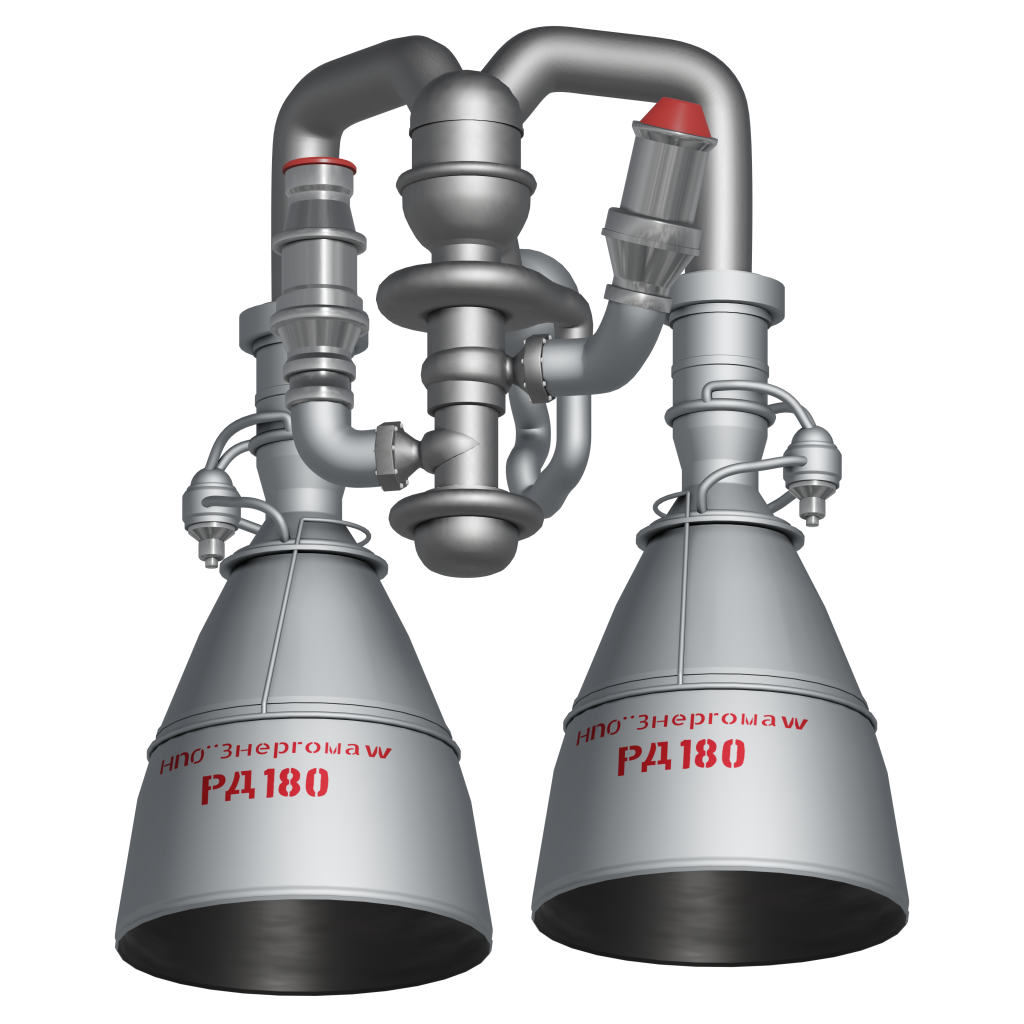
RD-181
The RD-181 became the replacement to the NK-33s used on the Antares after its 2014 failure. The RD-181 and RD-191 are single chamber versions of the RD-171 with a ¼ scaled turbopump. These engines can produce 1,920 kN of thrust at sea level, with an ISP of 310 s. The only difference between the RD-181 and RD-191 is some plumbing and mounting changes that make the RD-181 work on the Antares.


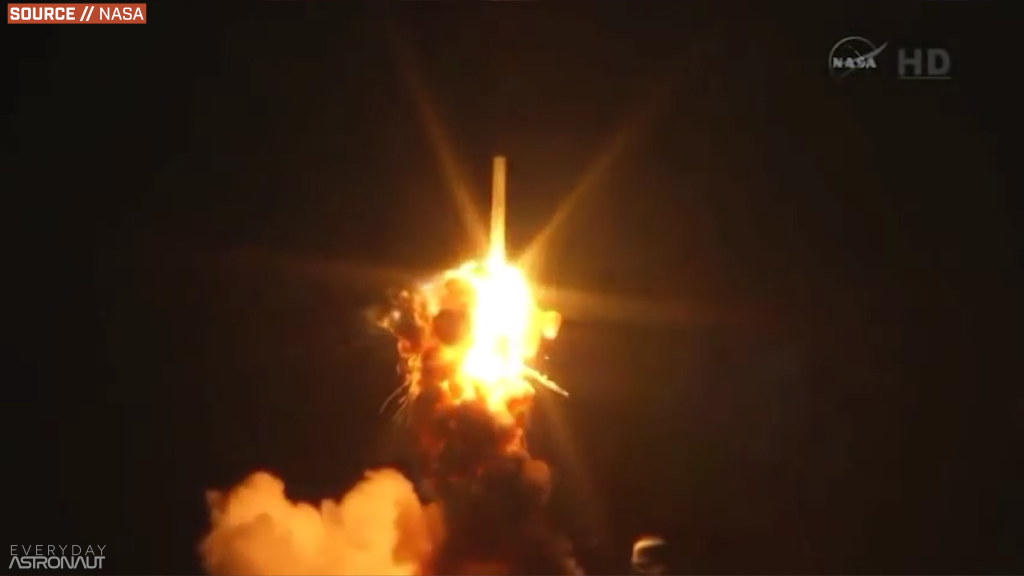
RD-191
The RD-191 has only flown three times on a new rocket called the Angara, flying twice in 2014, and once in December 2020. Angara will feature up to 4 strap-on boosters around a central core. It also has a variant of the RD-0124 on the second stage and an optional S5.92 for a Briz M third stage. In its biggest configuration, the Angara A5, it can take 24,500 kg to low Earth orbit (LEO), which would be a modest upgrade over the Proton rocket.



RD-191
An RD-191 variant was also used on a South Korean launch vehicle known as the Naro-1 or KSLV-1. This rocket consisted of a single booster from an Angara with a second stage solid rocket booster made in South Korea. It only launched three times with its last launch being successful in 2013.

YF-100
China purchased RD-120 engines and tested them to develop their own YF-100 engine that they use on the Long March 5, 6 and 7. It’s the only non-soviet closed cycle keralox engine to fly to date.

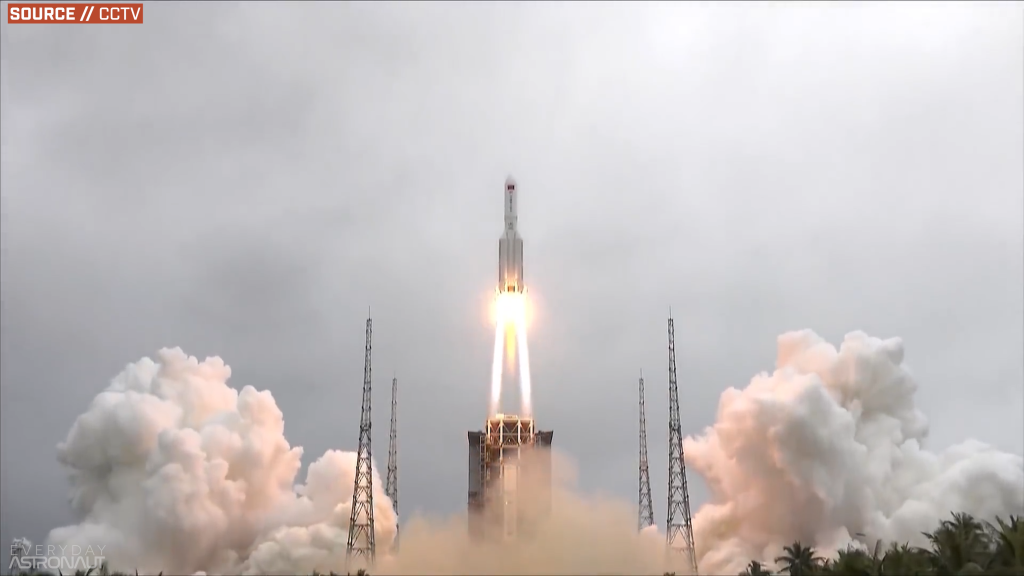
CE-7.5
The RD-0120 was not the only hydrolox engine in the Soviet Union. There was also the RD-56 engine that saw its first flight in India. It was intended to be used as an upgraded upper stage for the N1. However, it never flew on the N1 and two complete units were sold to the Indian Space Research Organization (ISRO) along with the engine design. Later, because of sanctions, ISRO had to develop its own cryogenic program. With time it led to the CE-7.5 hydrolox engines on their GSLV rocket.
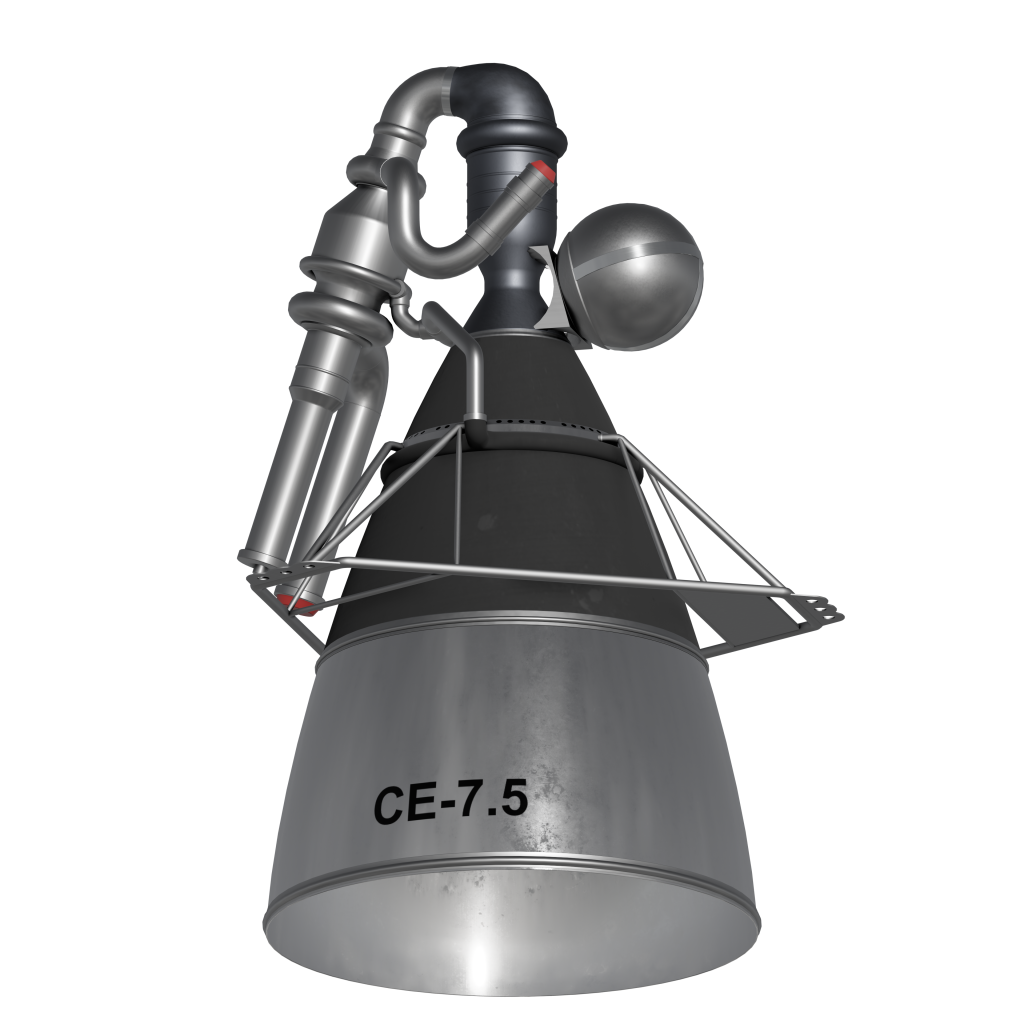

S2.253
Both Iran and North Korea use pretty much an entire Scud missile (R-11 developed by Glushko) that used an S2.253 engine running on nitric acid and LOx as an upper stage for their rockets. However, they ended up scaling up the thrust and producing their own versions that are capable of reaching orbit.
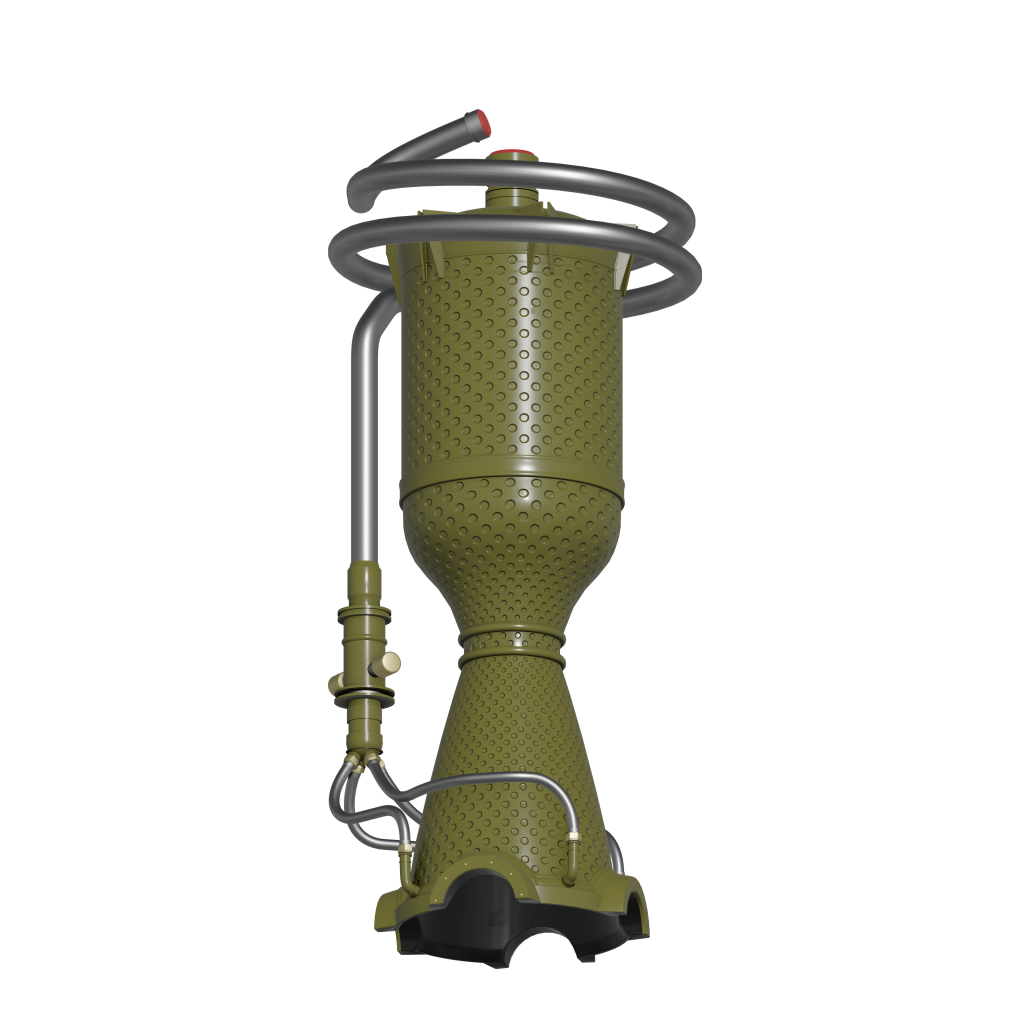

A Few More Special Engines
RD-0410
The RD-0410 was a very special engine among others because it was a nuclear thermal rocket engine. It ran on hydrogen fuel and was successfully tested all the way through the 1980’s. However, it was never flown, just like the United States’ NERVA rocket engine. The RD-0410 could produce only 35 kN of thrust but had a record ISP of 910 s in a vacuum. Compared to the US’ NERVA, this engine was small and light enough to fly on a medium-lift rocket like the Proton.
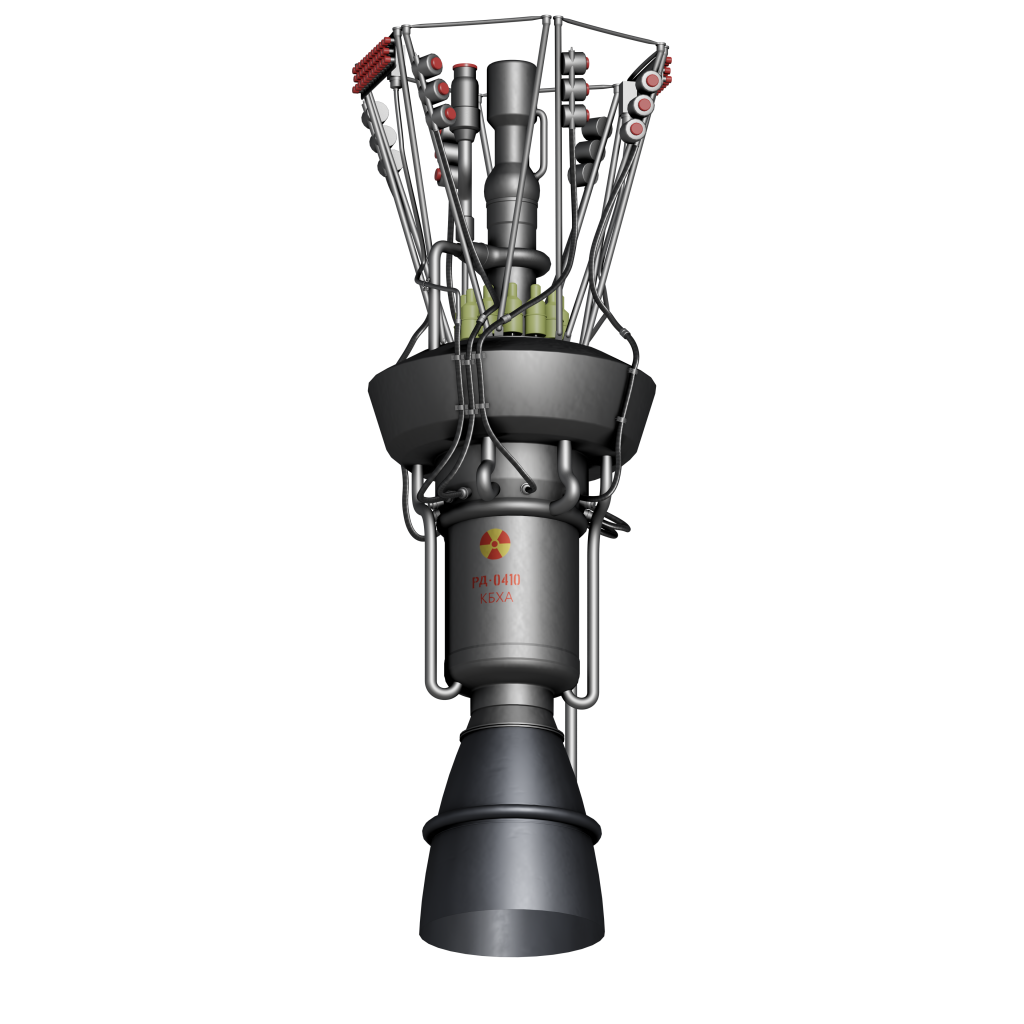
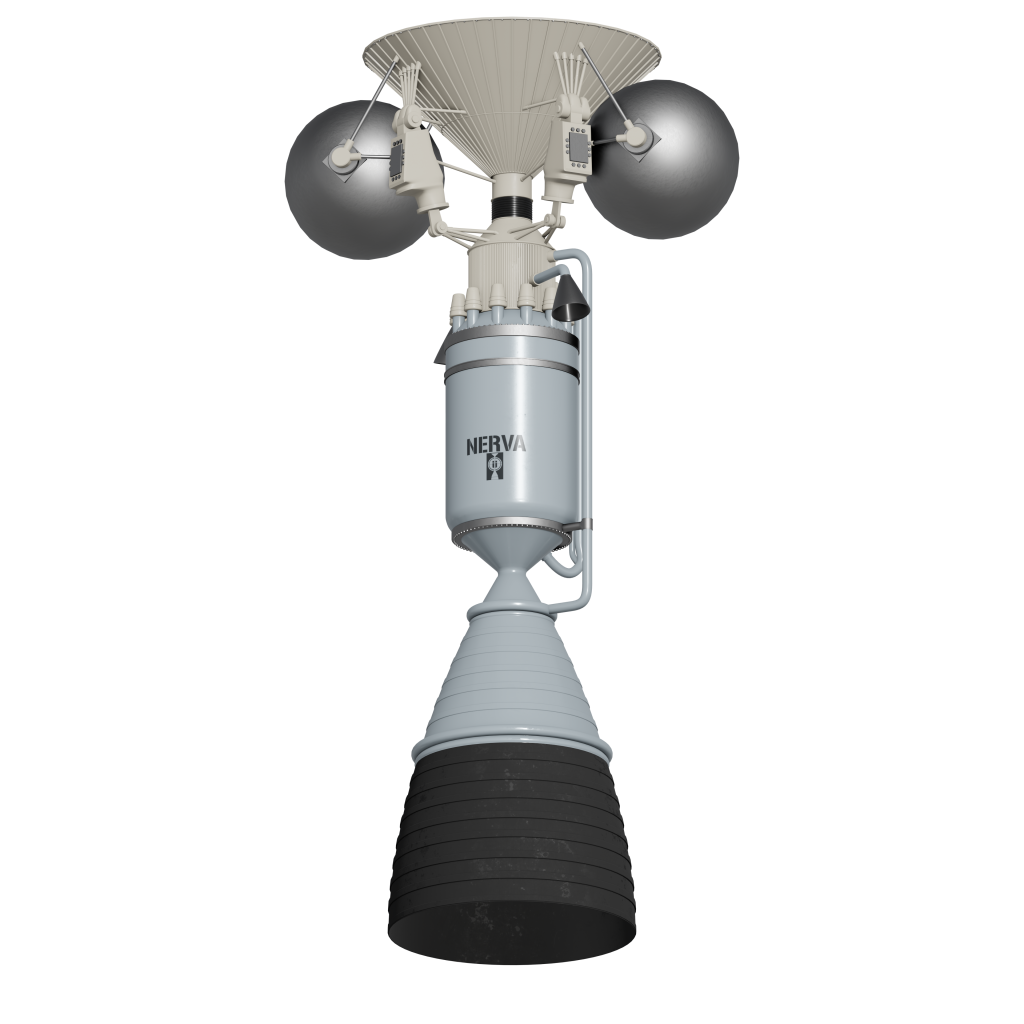
RD-301
Instead of LOx or nitrogen tetroxide, the RD-301 used fluorine as an oxidizer, which is extremely reactive and hard to store or handle, and ammonia as a fuel. It was considered as an option for an upper stage for Proton, but the idea was abandoned in 1977. The RD-301 could hit 97 kN of thrust and an ISP of 400 s in a vacuum.
With the RD-301, they wanted to build confidence in working with fluorine and make the ultimate high efficiency fluorine/ hydrogen engine. This engine could potentially reach an ISP of 475 s – the absolute limit of chemical rocket efficiency.

RD-501/502
The RD-501/502 was another exotic propellant engine developed for Proton. It ran on hydrogen peroxide and pentaborane. Despite its potential for high efficiency, its toxicity and reactivity led to its cancellation in 1966. The same fate befell the RD-270M that also ran on pentaborane.
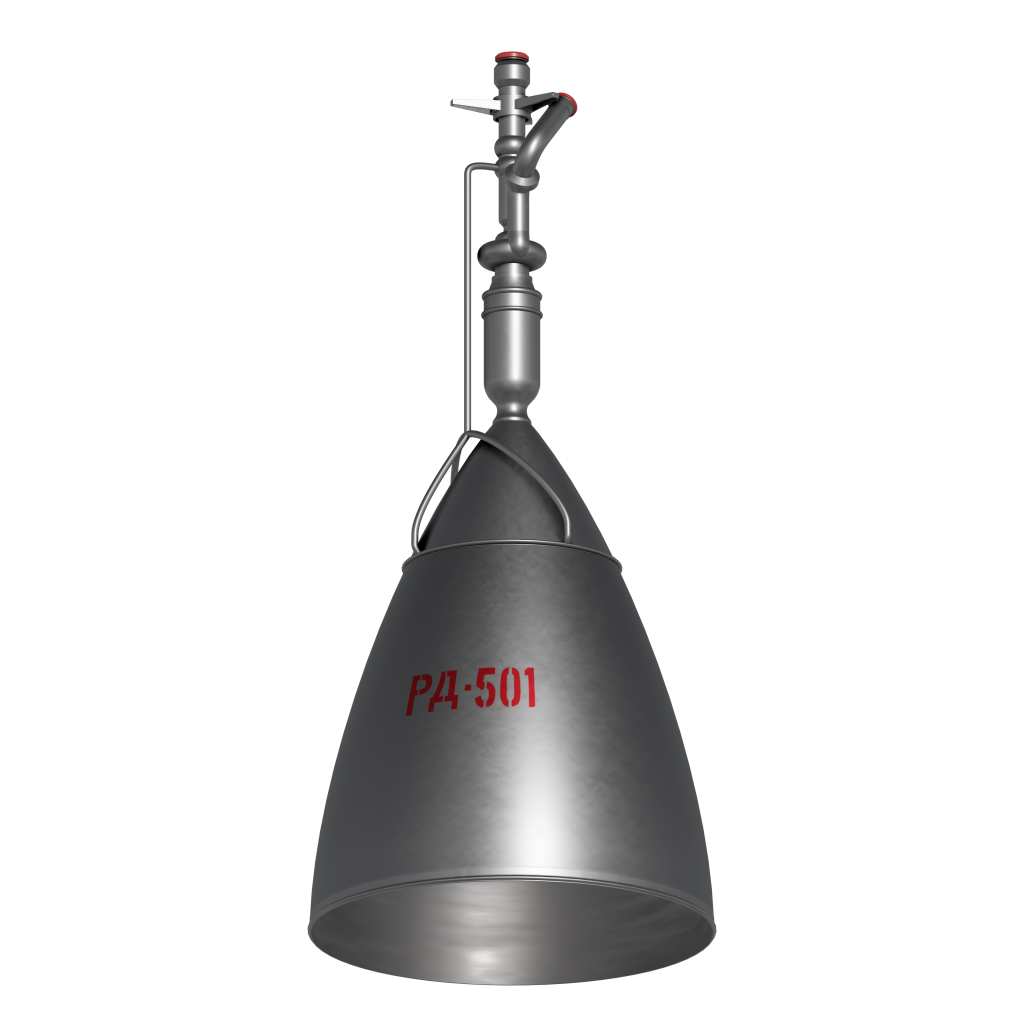
RD-701/704
This engine stands out among others because it was tripropellant and ran on LOx, kerosene and liquid hydrogen. It was based on the RD-0124 closed cycle hydrolox engine and was expected to be used on a reusable space plane called the MAKS. They began developing this plane in 1988, just before the collapse of the Soviet Union.
Unlike other Soviet engines, instead of having multiple combustion chambers with one turbopump, this one had multiple turbopumps per combustion chamber. When the high thrust output was not needed, the RD-701 could switch modes and run only on hydrolox, which increased the efficiency of the motor. This engine was capable of reaching record setting chamber pressure at 300 bar. This was only recently beaten by SpaceX’s Raptor engine on a test stand in 2020.
When running on three propellants it could achieve 4,000 kN of thrust and an ISP of 415 s in a vacuum. When running purely on hydrogen, it would still produce 1,600 kN of thrust, with an ISP of 460 s.
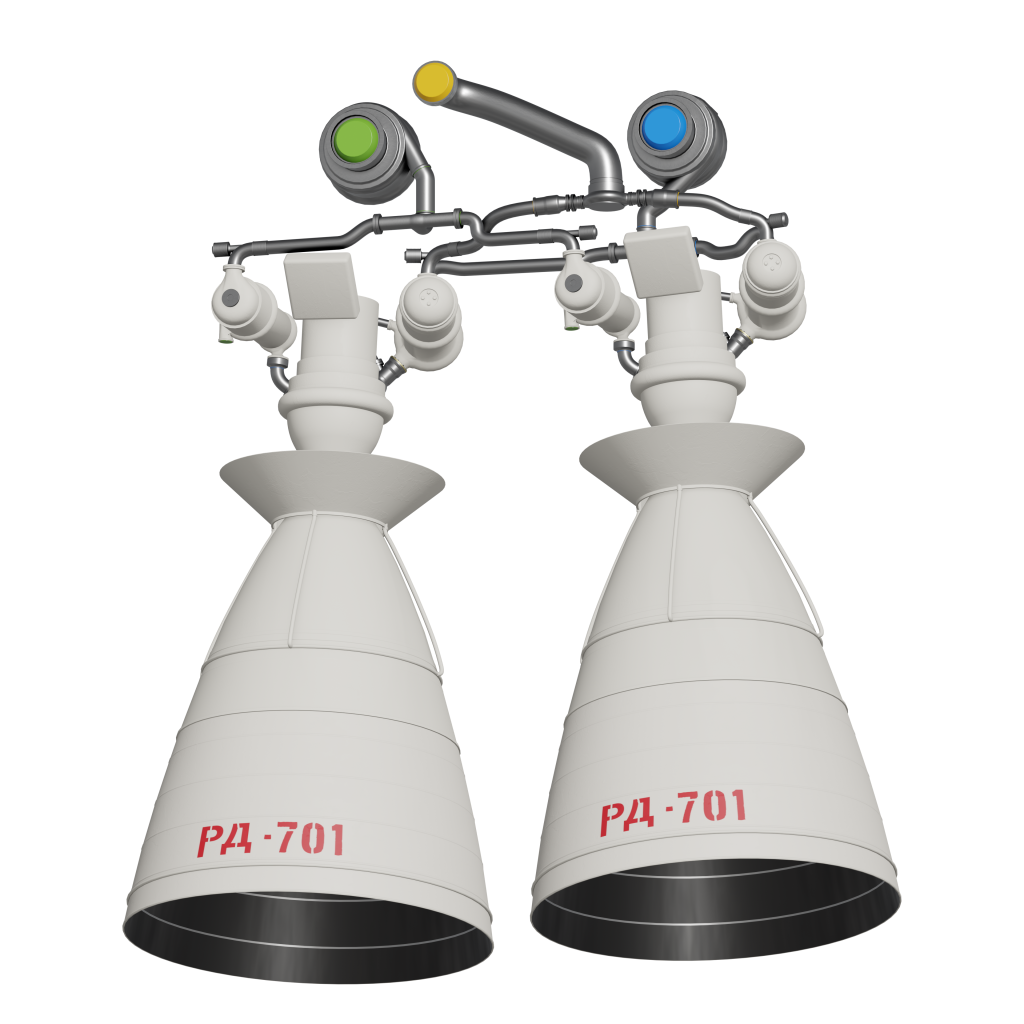
Start-1 rocket
The Soviet Union almost never used solid rocket boosters when designing their rockets. In this sense, the Start-1 rocket is unique among them because its four stages ran on solid propellant. Moreover, this rocket had a mobile launch platform, which allowed to potentially launch it from anywhere.
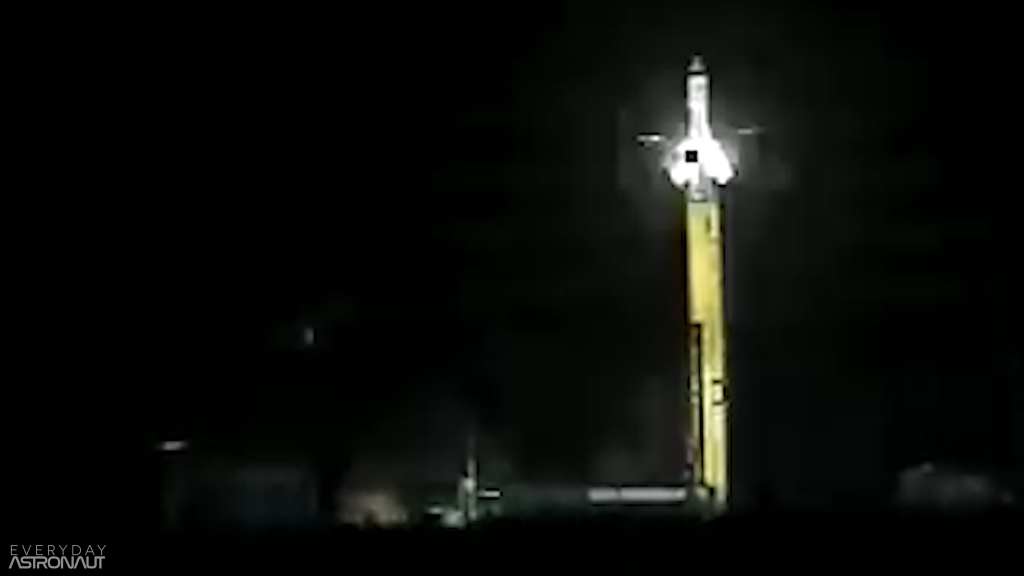
Summary
Overall, throughout history, the Soviet Union designed and developed a lot of impressive engines, which makes the family tree of Soviet rocket engines so confusing. All of this was possible thanks to many extremely talented engineers in Soviet aerospace history (Sergei Korolev, Valentin Glushko, Mikhail Yangel, Vladimir Chelomey, and many others). One of the most notable things was that the Soviets mastered the closed cycle engines very early and made it seem normal.
The philosophy of these engines is a perfectly proportioned mixture between “if it ain’t broke, don’t fix it” and pushing engines and hardware further and further. These engines are still some of the best engines ever made and set a high bar for everyone else to try and match.






Never knew this much…
Never knew this much…
Thank you for the great article!
“All of this was possible thanks to many extremely talented engineers in Soviet aerospace history (Sergei Korolev, Valentin Glushko, Mikhail Yangel, Vladimir Chelomey, and many others).”
By the way, all of them (Sergei Korolev, Valentin Glushko, Mikhail Yangel and Vladimir Chelomey) were Ukrainians (or have Ukrainian roots).
By the way, I think you are a talented Ukrainian too.
In the Yangel family part, about R-36, it says that:
>
The RD-251 engine that they developed was an upgraded and evolved version of the RD-219. This engine remained open cycle, however, it had better materials that were less corrosion-prone. In addition, it used solid powder chargers to spin up the turbo pumps and there were pyrotechnic valves on the shut off valves aiding in more reliable shut downs. Similar to the RD-218, the RD-251 consisted of a cluster of three dual-chambered RD-250s.
The second stage of the R-36 featured a vacuum optimized version, the RD-252. Compared to its predecessor (the RD-219), the RD-252 could achieve 26 s better ISP, despite being relatively the same mass.
>
But based on the graphics and what is is said in the video, it seems more like the mention of RD-219 being evolved into RD-251 at the beginning is a typo here and it should be RD-218 as later in the paragraph.
Yes, thank you for your comment!
Thank you for the great article! Can you provide higher-resolution version of the entire tree? I mean, “The entire Soviet rocket engine family tree.”. Seems like 1024×576 is not enough.
Alter the URL to:
https://everydayastronaut.com/wp-content/uploads/2021/11/Full-Tree.png
There you are at 3840×2160 🙂
Tim, thank you for the article, video and family tree diagram. The information was helpful in piecing together the information I gained over the years from various sources on Soviet rocket engines. When I look at a model of the Soyuz rocket and spacecraft I have a better appreciation of why that program has been operating for so long.
The only thing I would suggest is to add a timeline on the family tree to show when rockets were developed, put into production and retired. I think that would be something worth referencing against western rocket engines perhaps?
Thanks again for your work.
Where are the sources??